experimental subject
description: person who participates in human subject research by being the target of observation by researchers
167 results

The Data Detective: Ten Easy Rules to Make Sense of Statistics
by
Tim Harford
Published 2 Feb 2021
In 1979, Lord, Ross, and Lepper conducted an experiment that was designed to explore how people thought through arguments they felt passionately about. The researchers rounded up experimental subjects with strong views in favor of, or against, the death penalty. They showed the experimental subjects summaries of two imaginary studies. One of these made-up studies demonstrated that the death penalty deterred serious crime; the other, by the fictitious researchers Palmer and Crandall, showed the opposite.18 As one might expect, the experimental subjects were inclined to dismiss studies that contradicted their cherished beliefs. But Lord and his colleagues discovered something more surprising: the more detail people were presented with—graphs, research methods, commentary by other fictional academics—the easier they found it to disbelieve unwelcome evidence.
…
• Anna Powell-Smith, MissingNumbers.org Nearly seven decades ago, the noted psychologist Solomon Asch gave a simple task to 123 experimental subjects. They were shown two illustrations, one with three quite different lines and the other with a “reference line,” and Asch asked them to pick which of the three lines was the same length as the reference line. Asch had a trick up his sleeve: he surrounded each subject with stooges who would unanimously pick the wrong line. Confused, the experimental subjects were often (though not always) swayed by the errors of those around them. The Asch experiments are endlessly fascinating, and I often find myself discussing them in my writing and talks: they are a great starting point for a conversation about the pressure we all feel to conform, and they provide a memorable window into human nature.
…
A couple of decades ago, psychologists Kari Edwards and Edward Smith conducted an experiment in which they asked people in the United States to produce arguments in favor of and against the politically fraught positions of the day such as abortion rights, spanking children, allowing homosexual couples to adopt, quotas for hiring minorities, and the death penalty for those under sixteen years of age.13 Unsurprisingly, they found that people had biases: the study participants found it hard to construct the kind of arguments that their opponents would use to defend their views. More strikingly, Edwards and Smith showed that those biases tended to appear more clearly in negative arguments. Disbelief flowed more fluidly than belief. The experimental subjects found it much easier to argue against positions they disliked than in favor of those they supported. There was a special power in doubt. Doubt is also easy to sell because it is a part of the process of scientific exploration and debate. Most of us are—or should be—taught at school to question the evidence.
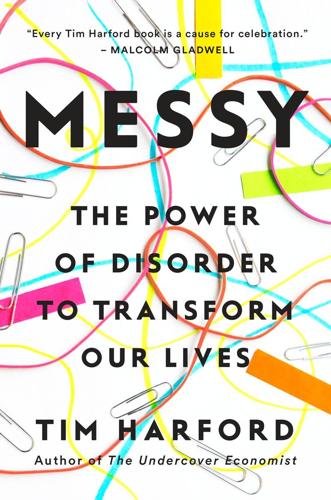
Messy: The Power of Disorder to Transform Our Lives
by
Tim Harford
Published 3 Oct 2016
As long as people had been appropriately briefed (“mistakes are human, try incorporating them into your work”) they did better work and reported that they had more fun.16 A third experiment was conducted by a team including Paul Howard-Jones, a neuroscientist at the University of Bristol. Researchers showed their experimental subjects a set of three words, and then asked them to tell a brief story involving the three words. Sometimes the words had obvious connections, such as “teeth, brush, dentist” or “car, driver, road.” Sometimes the words were unconnected, such as “cow, zip, star” or “melon, book, thunder.” The more random, obscure, challenging combinations spurred the subjects into spinning far more creative tales.17 These are, admittedly, artificial one-off situations with nothing at stake for the experimental subjects. When someone relies on creativity for a living, mucking them around becomes much more fraught: think of poor Carlos Alomar, too talented and too professional to be comfortable playing “crap”; or Phil Collins, so frustrated with Eno’s unpredictable requests that he started throwing beer cans around the studio.
…
In one, Charlan Nemeth and Julianne Kwan showed pairs of people bluish/greenish slides, asking them to shout out whether they were blue or green. The experimenters had a trick to play, however: one member of each pair was actually a confederate of the researchers, who would sometimes call out baffling responses—“green” when the slide was clearly blue. Having been thoroughly baffled, the experimental subjects were then asked to free-associate words connected with “green” and “blue”—sky, sea, eyes. Those who had been subjected to a confusing mess of signals produced more original word associations: jazz, flame, pornography, sad, Picasso. There was something about the sheer disruptiveness of the setup that unlocked creative responses.15 In another study, led by psychologist Ellen Langer, researchers assigned creative tasks to their subjects, then started messing with them.
…
Asch found that people would sometimes suppress their own judgments in order to agree with a unanimous group, even though the group was clearly in the wrong. (The group was made up of actors working for Solomon Asch, surrounding a single, rather confused participant, unaware that he was being set up.) The cure for this groupthink? Even a single dissenting voice broke the spell, and the experimental subjects felt much more able to express their own dissent.16 More recently, complexity scientist Scott Page published The Difference,17 a book that uses a mathematical rather than a psychological framework to explore similar questions. Page showed that in many problem-solving contexts, “diversity trumps ability.”

Adapt: Why Success Always Starts With Failure
by
Tim Harford
Published 1 Jun 2011
As they went round the table, each one called out the same answer – a wrong answer. By the time Asch turned to the real experimental subject, the poor man would be baffled. Frequently, he would fall in with the group, and later interviews revealed that this was often because he genuinely believed his eyes were deceiving him. As few as three actors were enough to create this effect. Less famous but just as important is Asch’s follow-up experiment, in which one of the actors gave a different answer from the rest. Immediately, the pressure to conform was released. Experimental subjects who gave the wrong answer when outnumbered ten to one happily dissented and gave the right answer when outnumbered nine to two.
…
Cognitive dissonance describes the mind’s difficulty in holding two apparently contradictory thoughts simultaneously: in Tharp’s case, ‘I am a capable, experienced and respected choreographer’ and ‘My latest creation is stupefyingly clichéd.’ This odd phenomenon was first pinned down in an ingenious laboratory experiment half a century ago. Leon Festinger and James Carlsmith asked their experimental subjects to perform a tedious task – emptying and refilling a tray with spools, using one hand – for half an hour. On some plausible-sounding pretext they then offered a third of their subjects $1 – a small sum even in 1959, about an hour’s wage – to tell the next experimental subject (actually an actress) what a great time they’d had stacking spools onto trays for half an hour. They offered another third of their subjects a much more substantial sum, $20, half a week’s typical wages, to do the same thing.
…
How profoundly this tendency runs in the human brain was demonstrated by a team of researchers including the psychologist Daniel Gilbert. The researchers showed their experimental subjects an array of six prints of paintings by Claude Monet – the lilies, the Houses of Parliament at sunset, the haystacks, and others – and asked them to rank the images in order from the one they liked most to the one they liked the least. The researchers then offered the experimental subjects a choice of two spare prints they ‘just happened’ to have, and the spares were always the pair ranked in the middle – number three and number four.

Propaganda and the Public Mind
by
Noam Chomsky
and
David Barsamian
Published 31 Mar 2015
In the negotiations at Montreal, the United States, which is the center of the big biotech industries and genetic engineering, was demanding that the issue be determined under WTO rules. According to those rules, the experimental subjects have to provide scientific evidence that it’s going to harm them, or else the transcendent value of corporate rights prevails and they can do what they want. That’s what Ed Herman calls “producer sovereignty.”13 Europe and most of the rest of the world insisted on the precautionary principle, that is, the right of people to say, I don’t want to be an experimental subject. I don’t have scientific proof that it’s going to harm me, but I don’t want to be subjected to that. I want to wait until it’s understood.
…
I don’t have scientific proof that it’s going to harm me, but I don’t want to be subjected to that. I want to wait until it’s understood. That’s a very clear indication of what’s at stake, an attack on the rights of people to make their own decisions over things even as simple as whether you’re going to be an experimental subject, let alone controlling your own resources or setting conditions on foreign investment or transferring your economy into the hands of foreign investment firms and banks. Those are the issues that are really at stake. It’s a major assault against popular sovereignty in favor of the concentration of power in the hands of a kind of state-corporate nexus, a few mega corporations and the few states that primarily cater to their interests.
…
In the U.S., there’s been relatively little discussion and concern about it. In Europe, India, Latin America and elsewhere, there’s been great concern and a lot of very activist popular protest. The French farmers are one case. The same is true in England and elsewhere, quite extensively. There’s a lot of concern about being forced to become experimental subjects for interventions in the food system, both in production and consumption, that have unknown consequences. That did cross the Atlantic in a way that I don’t entirely understand. At some point last fall the concerns became manifested over here as well, to the extent that something quite unusual happened.
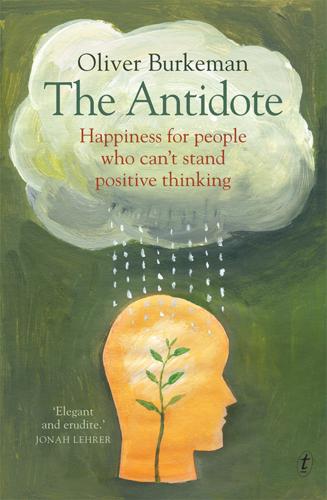
The Antidote: Happiness for People Who Can't Stand Positive Thinking
by
Oliver Burkeman
Published 1 Jul 2012
Could it be that ironic process theory also sheds light on what is wrong with our efforts to achieve happiness, and on the way that our efforts to feel positive seem so frequently to bring about the opposite result? In the years since his earliest white bear experiments, Wegner’s research, and that of others, has turned up more and more evidence to support that notion. One example: when experimental subjects are told of an unhappy event, but then instructed to try not to feel sad about it, they end up feeling worse than people who are informed of the event, but given no instructions about how to feel. In another study, when patients who were suffering from panic disorders listened to relaxation tapes, their hearts beat faster than patients who listened to audiobooks with no explicitly ‘relaxing’ content.
…
Over the last few years, the German-born psychologist Gabriele Oettingen and her colleagues have constructed a series of experiments designed to unearth the truth about ‘positive fantasies about the future’. The results are striking: spending time and energy thinking about how well things could go, it has emerged, actually reduces most people’s motivation to achieve them. Experimental subjects who were encouraged to think about how they were going to have a particularly high-achieving week at work, for example, ended up achieving less than those who were invited to reflect on the coming week, but given no further guidelines on how to do so. In one ingenious experiment, Oettingen had some of the participants rendered mildly dehydrated.
…
‘It is [fear] that makes people so willing to follow brash, strong-looking demagogues with tight jaws and loud voices,’ wrote Becker – leaders ‘who seem most capable of cleansing the world of the vague, the weak, the uncertain, the evil. Ah, to give oneself over to their direction – what calm, what relief.’ Mortality salience makes itself felt in numerous other, sometimes unexpected ways. Experimental subjects who have been prompted to think about death demonstrate more intense reactions of disgust to discussions of human bodily waste. They agree more strongly with statements such as ‘If I see someone vomit, it makes me sick to my stomach.’ They are more likely to rank certain hypothetical scenarios as ‘very disgusting’, for example seeing maggots on a piece of meat.

Priceless: The Myth of Fair Value (And How to Take Advantage of It)
by
William Poundstone
Published 1 Jan 2010
Stevens’s psychology Ph.D. was awarded, per Harvard custom of the time, by the Department of Philosophy. War made Stevens’s reputation. At the behest of the U.S. Air Force, he founded the Psycho-Acoustic Laboratory in 1940. Its location, the basement of Harvard’s neogothic Memorial Hall, belied its somewhat incredible mission: to study the effects of extremely loud noises on pilots. Experimental subjects listened to deafening 115-decibel blasts for seven hours a day. Stevens found that the noise did not impair mental performance too much. The main problem was that nobody could hear what anyone else was saying. Stevens’s lab took on the task of designing intercoms for noisy cockpits. Stevens retained a gruff military manner throughout his career.
…
In the actual experiments, a dozen distinct bets were used. They were somewhat more complicated than the examples above, in that the player stood a chance of losing money as well as winning it. (This is more like familiar sports or casino bets: you have to put up some money to play and risk losing it.) The experimental subjects were first shown bets two at a time and asked to choose which they preferred. Then they were shown the same set of bets one at a time and asked to price them. In this part, they were told that they “owned” the bet in question and could sell it back to the house for sure cash. What was the minimum price they would accept?
…
Neale asked her mother, a real estate broker, for advice. She advised playing up the networking possibilities. Agents would welcome the chance to make some connections with the faculty, she said. Agent Katherine Martin of Tucson Realty and Trust agreed to let them use one of her listings. The experimental subjects were 54 junior and senior undergraduate business students and 47 local real estate agents. For those real estate professionals, the Tucson market was their bread and butter. On average, they bought or sold 16 properties a year and had been selling real estate in Tucson for more than eight years.

Children of Ruin
by
Adrian Tchaikovsky
Published 13 May 2019
She had moved as much as she could but now needed him to take his own turn before she could continue playing. Senkovi suspected he should probably get away from the tanks and go have human contact or something healthy like that. On the other hand, he’d just had an actual conversation, which was quite wearying, and he could hardly disappoint such a keen experimental subject. He sat down again, dropping a tile into the virtual space and waiting to see what Salome would do. 5. Siri Skai would be in charge of the orbiting module in Baltiel’s absence. She and four others would have relatively little to do except continue to round off the rough edges of the database the computer was assembling on the Nod biosphere (Senkovi’s joke name having gradually infiltrated the collective consciousness).
…
According to his diagnostics there were half a dozen net presences in the Aegean’s system, weird undirected processes lurching around trying to access ship systems. He’d thought his demand must have come too late, but Senkovi obviously caught it before flipping the switch. ‘All right, boss, here’s the lowdown,’ came the reply. ‘I may have failed to contain my experimental subjects properly.’ ‘Explain.’ ‘I’ve been training them up, teaching them basic communications so they could interact with the equipment on Damascus. They’ll be useful. We’ll need them. Only they’re curious, right? It’s inbuilt with them, and I’ve been using the Rus-Califi viral catalyst to select for that, only I didn’t realize how quickly they’d catch on.’
…
This, of course, was the main reason he had stayed behind, out of contact with the human race. He was going to try and save his pets, and he didn’t want Han and the others to laugh at him, to recast him from eccentric to pathetic. But, just like the dog lover who goes back into the burning building to save little Floofums, he was going to try and keep some of his experimental subjects alive until the ship came back online. Baltiel will want them all dead, he knew, but he could handle Baltiel. He would go against Baltiel if he had to, a full-on war in heaven of angry messages cast across the void. The nearest tank had shattered, as had the next two. The denizens had, like Senkovi, been too clever for their own good and found some physical egress, and now he’d killed them by evacuating the chamber.
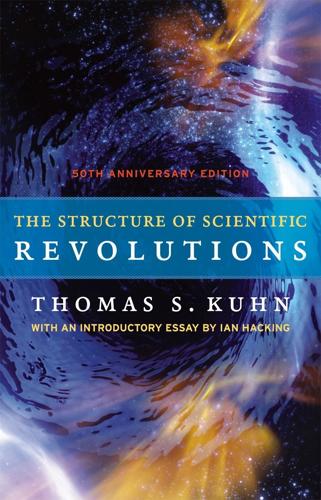
The Structure of Scientific Revolutions
by
Thomas S. Kuhn
and
Ian Hacking
Published 1 Jan 1962
Those characteristics include: the previous awareness of anomaly, the gradual and simultaneous emergence of both observational and conceptual recognition, and the consequent change of paradigm categories and procedures often accompanied by resistance. There is even evidence that these same characteristics are built into the nature of the perceptual process itself. In a psychological experiment that deserves to be far better known outside the trade, Bruner and Postman asked experimental subjects to identify on short and controlled exposure a series of playing cards. Many of the cards were normal, but some were made anomalous, e.g., a red six of spades and a black four of hearts. Each experimental run was constituted by the display of a single card to a single subject in a series of gradually increased exposures.
…
In their most usual form, of course, gestalt experiments illustrate only the nature of perceptual transformations. They tell us nothing about the role of paradigms or of previously assimilated experience in the process of perception. But on that point there is a rich body of psychological literature, much of it stemming from the pioneering work of the Hanover Institute. An experimental subject who puts on goggles fitted with inverting lenses initially sees the entire world upside down. At the start his perceptual apparatus functions as it had been trained to function in the absence of the goggles, and the result is extreme disorientation, an acute personal crisis. But after the subject has begun to learn to deal with his new world, his entire visual field flips over, usually after an intervening period in which vision is simply confused.
…
The scientist can have no recourse above or beyond what he sees with his eyes and instruments. If there were some higher authority by recourse to which his vision might be shown to have shifted, then that authority would itself become the source of his data, and the behavior of his vision would become a source of problems (as that of the experimental subject is for the psychologist). The same sorts of problems would arise if the scientist could switch back and forth like the subject of the gestalt experiments. The period during which light was “sometimes a wave and sometimes a particle” was a period of crisis—a period when something was wrong—and it ended only with the development of wave mechanics and the realization that light was a self-consistent entity different from both waves and particles.

NeuroTribes: The Legacy of Autism and the Future of Neurodiversity
by
Steve Silberman
Published 24 Aug 2015
As a walking embodiment of the European tradition, he became enormously influential. At one point, one in ten of the academic psychiatrists in the United States trained directly under him, launching a school of psychiatry that was dubbed Meyerian. He also introduced the field to its standard experimental subject, the albino rat. Coining the word psychobiology, he constantly exhorted his students to set theories aside and seek the facts. Visiting Meyer’s office for the first time on an October afternoon in 1928, Kanner was awestruck. An impeccably polite secretary invited him to wait in an adjacent library that seemed to extend for miles, with a convenient array of stepladders for retrieving volumes on the upper shelves.
…
The possibility that Beth was responding in a comprehensible way to the bizarre behavior of the people around her didn’t enter Lovaas’s mind. Extinguishing Beth’s self-injurious behavior by ignoring her would have been “a slow procedure requiring several sessions or days,” Lovaas predicted. He had good reason to fear that his sole experimental subject—on whom his National Institute of Mental Health (NIMH) funding depended—might hurt herself so badly that his experiments could no longer go on. So Lovaas sought a more expeditious solution, which came to him in a flash one day in the lab. He was talking with a colleague, when Beth began striking her head against the sharp edge of a metal cabinet.
…
So I let her know that there was no question in my mind that I was going to kill her if she hit herself once more, and that was pretty much it. She hit herself a few times more, but we had the problem licked. Under the laws of the University of California, Lovaas was required to have his research proposals approved by the Human Subjects Board, so explaining that he wanted to “really lay it on” his experimental subjects wouldn’t do. But there was an alternate way of saying basically the same thing that was acceptable in the lexicon of behaviorism. He began exploring the use of aversive stimuli—otherwise known in the trade as “punishment”—as a less time-consuming way of extinguishing self-injury. — THE USE OF PUNISHMENT on human subjects was controversial among Lovaas’s colleagues.
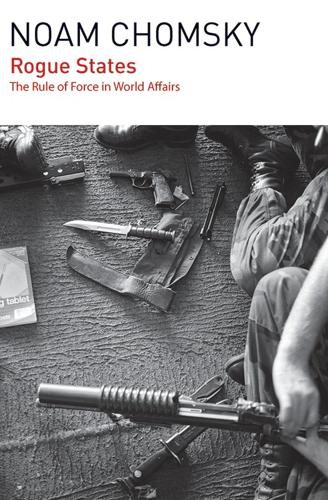
Rogue States
by
Noam Chomsky
Published 9 Jul 2015
The question that’s at stake is whether people have the right to refuse to be experimental subjects. So, to personalize it, suppose the biology department at the university were to walk in and tell you, “You folks have to be experimental subjects in an experiment we’re carrying out, where we’re going to stick electrodes in your brain and see what happens. You can refuse, but only if you provide scientific evidence that it’s going to harm you.” Usually you can’t provide scientific evidence. The question is, do you have a right to refuse? Under World Trade Organization rules, you don’t. You have to be experimental subjects. It’s a form of what Edward Herman has called “producer sovereignty.”17 The producer reigns; consumers have to somehow defend themselves.
…
There is an overriding principle. The principle is that the powerful and the privileged have to be able to do what they want (of course, pleading high motives). The corollary is that sovereignty and democratic rights of people must go, in this case—and that’s what makes it so dramatic—their reluctance to be experimental subjects when US-based corporations can profit by the experiment. The US appeal to the World Trade Organization rules is very natural, since they codified that principle; that’s the point. These issues, although they’re very real and are affecting a huge number of people in the world, are actually secondary to other modalities to reduce sovereignty in favor of private power.

The Sirens' Call: How Attention Became the World's Most Endangered Resource
by
Chris Hayes
Published 28 Jan 2025
Our ability to shut out nonrelevant stimuli while focusing our attention is so powerful that in all kinds of different experimental situations people will literally fail to see or hear extremely bizarre and often downright comedic stimuli right in front of them. The most famous of these is the invisible gorilla test.[8] Experimental subjects watch a video of three people in white shirts and three people in black shirts all circulating and passing a basketball back and forth. The white shirts pass back and forth to each other as they circulate among the black shirts, who are also passing a basketball among themselves. It’s a chaotic scene. Experimental subjects are told to pay close attention to those in the white shirts and count how many times they pass the ball. To do this, you have to focus intently on just the participants in the white shirts and ignore the activity of those in black shirts.
…
But what they can’t recall—because they literally didn’t see it—was the fact that in the middle of the exercise a person dressed in a full gorilla costume walked out into the middle of the group, beat his chest, flexed, and walked away. The key finding, replicated again and again, is that higher perceptual loads make us more susceptible to a kind of tunnel vision.[9] The reason the experimental subjects don’t see the guy in the gorilla suit is because of how difficult the task is and how much visual stimulus there is to process. Scientists call this inattentional blindness.[10] So that’s voluntary attention, a nearly supernatural ability to suppress stimuli around us and to focus. But now let’s go back to our cocktail party example.
…
We know this for a fact because across the world, in all kinds of different situations, people have been forced into prolonged periods of solitude. The results speak for themselves. It doesn’t take a ton of theorizing to immediately grasp why solitary confinement is so awful. In chapter 3, I relayed the story of an experimental subject who opted to shock himself over and over rather than be alone with his thoughts for just fifteen minutes. “That men so much love noise and stir; hence it comes that the prison is so horrible a punishment,” observed Pascal, “hence it comes that the pleasure of solitude is a thing incomprehensible.”[3] Solitude as an institutionalized form of punishment was first introduced in the early years of America under what was then referred to as the “Pennsylvania System.”[4] Developed by Christian reformers and held up as a model of enlightened rehabilitation, the penitentiary rejected the barbaric punishments of the stocks or flogging and instead sought to rehabilitate the convict using labor and solitude to force “penitence.”

Cognitive Surplus: Creativity and Generosity in a Connected Age
by
Clay Shirky
Published 9 Jun 2010
Deci’s conclusion that payment can crowd out other kinds of motivation flew in the face of both existing theory and practice. His experiment and the subsequent research on the crowding-out effect kicked off an academic disagreement that continues today. In 1994, Judy Cameron and David Pierce of the University of Alberta analyzed the results of dozens of studies that had paid experimental subjects to perform various tasks. Their meta-analysis (as such studies of multiple experiments are called) denied the existence of any such crowding-out effect. Deci and research partner Richard Ryan responded in 1999, pointing out that Cameron and Pierce had included a large number of studies noting that people were more motivated to do uninteresting tasks if you paid them, a result no one disputed.
…
This result—fairly intuitive, if you imagine yourself on the short end of that particular stick—was a shock to neoclassical theory (what rational actor would give up a free dollar for the sake of mere emotional satisfaction?). As the results of the Ultimatum Game became more widespread, so did the challenges to its conclusions. Versions were run with hundreds of dollars at stake, with ever-tighter controls on the anonymity between the participants so they wouldn’t worry about retribution, with experimental subjects of different ages, different classes, and different cultures. In one version called the Dictator Game, the proposer is able to declare the terms of the split without the recipient’s having any say at all. Even here, the proposed split was more generous than expected. The experiment was performed in countless variations, but the attempt to uncover the secretly rational core of humanity simply failed.
…
(Zuerichbergstrasse, Zurich: Institute for Empirical Research in Economics, 1999), http://ideas.repec.org/s/zur/iewwpx.html. 73 this sort of crowding out can appear in children as young as fourteen months: Tomasello’s research on children and their view of how things should be, by some ethical compass (a trait called “normativity,” or the understanding and abiding by norms), was published as “The Sources of Normativity: Young Children’s Awareness of the Normative Structure of Games,” with his coauthors, H. Rakoczy and F. Wameken, in Developmental Psychology 44.3 (2008): 875-81. 74 dozens of studies that had paid experimental subjects: Judy Cameron and David Pierce, “Reinforcement, Reward, and Intrinsic Motivation: A Meta-Analysis,” Review of Educational Research 64.3 (1994): 363-423. 74 people were more motivated to do uninteresting tasks if you paid them: Edward L., Deci, Richard Koestner, and Richard Ryan, “A Meta-Analytic Review of Experiments Examining the Effects of Extrinsic Rewards on Intrinsic Motivation,” Psychological Bulletin 125.6 (1999): 627-68. 74 crowding out of free choice can occur with the introduction of extrinsic motivations: J.
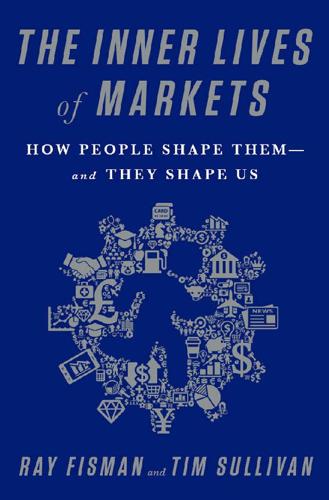
The Inner Lives of Markets: How People Shape Them—And They Shape Us
by
Tim Sullivan
Published 6 Jun 2016
Practically speaking, we’re living in the middle of this experiment, the principles of which were created in the pages of esoteric journals by economists, in the labs of high-tech companies, often (but not always) overlaid by a particular political orientation that comes with being starstruck by the efficiency of the market. Although the experimental subjects (that’s us) are nearly always blind to the consequences of this experimentation, don’t suffer under the delusion that market planners have all the answers. Science doesn’t provide clear guidance on any of this stuff. People (including at least some economists) have a delusional sense about what economic science is capable of forecasting.
…
Every time you book a room on Airbnb, order a car through Uber, browse on Amazon, or click on an ad—so convenient! so easy!—you help the process of reshaping our social institutions, possibly into something that none of us would recognize. You may not mean to, but you do. The question for someone in the midst of an experiment is, Do you want to be an experimental subject? Maybe. But to really know the answer, you have to have a better sense of the possible consequences, both personally and socially. And because the scientists have some hypotheses but don’t—can’t, really—know the outcome, we’re left with competing visions of the world. At one end of the spectrum are the back-to-the-earthers who want us all to stay local and barter for what we need.
…
But that’s really all that Gale and Shapley provided: a conceptual framework that market designers have, for several decades now, been applying, evaluating, and refining. They’ve learned from its successes and, unfortunately, learned even more from its inevitable failures: modeling real-life exchanges is an imprecise, iterative process in which many of us find ourselves as experimental subjects. The Complicated Job of Engineering Matches Market designer Al Roth likes to use a bridge-building metaphor to explain the contrast between his own work and that of design pioneers like Shapley. Suppose you want to build a suspension bridge connecting Brooklyn and Manhattan. In confronting decisions like where to place the suspension cables and how thick each should be, you’d better have paid attention in physics class.
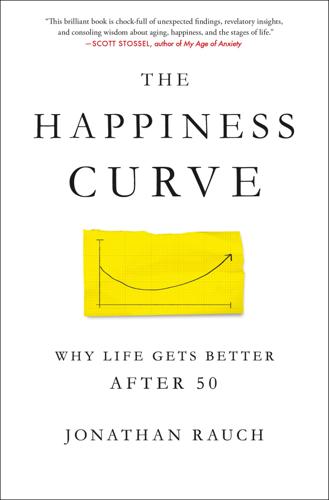
The Happiness Curve: Why Life Gets Better After 50
by
Jonathan Rauch
Published 30 Apr 2018
“I would make some big mistake in my dating life, and I would see myself making a mistake, and I saw that I was going to go ahead and make it, even though I knew it was the wrong thing to do. I knew what the right thing was and I knew all the psychology about the wrong thing, but I couldn’t stop myself.” Apparently, if he and his experimental subjects were riding something, it was no obedient horse. “Elephants are really smart, and they’re really, really big, and I felt like a small boy perched atop a giant elephant. If the elephant didn’t have any plans of its own, the boy can kind of prick it and turn it this way and that.” But if the elephant has its own ideas, it goes whichever way it pleases.
…
But the stereotype about bitterness is, if anything, the opposite of the truth. A few years ago, a group of German psychologists decided to look at how people at the two ends of adult life process regret. Led by Stefanie Brassen of the University Medical Center Hamburg-Eppendorf, they gathered three groups of experimental subjects: emotionally healthy young men whose average age was twenty-five, emotionally healthy older men whose average age was sixty-six, and depressed older men, also averaging sixty-six years old. All were given a task much like the games which contestants play on the TV program Let’s Make a Deal: They were shown an array of eight mysterious squares (“boxes”) and told to “open” them sequentially.
…
His field, primarily, is geriatric psychiatry and the study of successful aging. In the previous chapter, I mentioned his finding that people report higher subjective wellbeing as they move through the late decades of life, even while they grow more infirm. He is also a brain researcher, someone who spends a lot of time (and money) putting experimental subjects inside deafening magnetic-resonance imaging machines to observe their mental circuits firing. The day I visited him, he was conducting an experiment to learn more about how older brains process compassion. I dwell on Jeste’s scientific credentials because he has another side which is quite different, one which challenges mainstream psychiatry in fundamental ways.

The Moral Landscape: How Science Can Determine Human Values
by
Sam Harris
Published 5 Oct 2010
Therefore, having presented an experimental subject with a written statement—e.g., the United States is larger than Guatemala—and watched him mark it as “true,” it may occur to us to wonder whether we can take him at his word. Does he really believe that the United States is larger than Guatemala? Does this statement, in other words, really seem true to him? This is rather like worrying, with reference to a subject who has just performed a lexical decision task, whether a given stimulus really seems like a word to him. While it may seem reasonable to worry that experimental subjects might be poor judges of what they believe, or that they might attempt to deceive experimenters, such concerns seem misplaced—or if appropriate here, they should haunt all studies of human perception and cognition.
…
Haidt is pessimistic about our ever making realistic claims about right and wrong, or good and evil, because he has observed that human beings tend to make moral decisions on the basis of emotion, justify these decisions with post hoc reasoning, and stick to their guns even when their reasoning demonstrably fails. He notes that when asked to justify their responses to specific moral (and pseudo-moral) dilemmas, people are often “morally dumbfounded.” His experimental subjects would “stutter, laugh, and express surprise at their inability to find supporting reasons, yet they would not change their initial judgments …” The same can be said, however, about our failures to reason effectively. Consider the Monty Hall Problem (based on the television game show Let’s Make a Deal).
…
For instance, if asked to recall the last four digits of their Social Security numbers and then asked to estimate the number of doctors practicing in San Francisco, the resulting numbers will show a statistically significant relationship. Needless to say, when the order of questions is reversed, this effect disappears.36 There have been a few efforts to put a brave face on such departures from rationality, construing them as random performance errors or as a sign that experimental subjects have misunderstood the tasks presented to them—or even as proof that research psychologists themselves have been beguiled by false norms of reasoning. But efforts to exonerate our mental limitations have generally failed. There are some things that we are just naturally bad at. And the mistakes people tend to make across a wide range of reasoning tasks are not mere errors; they are systematic errors that are strongly associated both within and across tasks.

Animal Spirits: How Human Psychology Drives the Economy, and Why It Matters for Global Capitalism
by
George A. Akerlof
and
Robert J. Shiller
Published 1 Jan 2009
If everyone acts cooperatively the returns for the whole group are the greatest. But at the same time there is an incentive to act selfishly: I achieve the best outcome for myself if everyone else puts his money into the pot—to be augmented and shared—but I act selfishly. There is a standard wisdom about the outcomes of such games: experimental subjects initially play such games with some degree of cooperation, but if the games are repeated they first learn that some other players are defectors and then they themselves increasingly defect. After many repetitions of the game all players are playing selfishly. The behavior pattern is very basic: it has been documented in monkeys as well as in humans.8 But Fehr and Gächter had an idea.
…
One of us (Akerlof ) has written extensively on this subject with Rachel Kranton.13 We have shown that a great deal of what makes people happy is living up to what they think they should be doing. In this sense most of the time people want to be fair. They consider it an insult if others do not think they are fair. At the same time, people also want others to live up to what they think those others should be doing. People get upset (think of Fehr’s experimental subjects and their desire to punish) when they think others are not being fair. Fairness then involves bringing into economics these concepts of how people think they and others should or should not behave. Fairness and the Economy Considerations of fairness are a major motivator in many economic decisions and are related to our sense of confidence and our ability to work effectively together.
…
Small wonder that many policy recommendations —which are based on the standard theory of saving, which is in turn based on the economic fundamentals, and therefore has nothing to say about these cues—are very often simply wrong. An experiment by economists Hersh Shefrin and Richard Thaler demonstrates just such a tendency to grasp at straws. They asked experimental subjects how much they would likely spend out of an unexpected, one-time-only windfall of $2,400 in each of three possible situational framings. In the first framing the additional income is a new bonus at work that will be paid out at a rate of $200 a month over the next year. The median subject said that $100 a month would be consumed, for a total of $1,200.

Rationality: From AI to Zombies
by
Eliezer Yudkowsky
Published 11 Mar 2015
All the axioms are consequences, as well as antecedents, of a consistent utility function. So it must be possible to prove that the experimental subjects above can’t have a consistent utility function over outcomes. And indeed, you can’t simultaneously have: U($24,000) > (33/34) × U($27,000) + (1/34) × U($0) 0.34 × U($24,000) + 0.66 × U($0) < 0.33 × U($27,000) + 0.67 × U($0). These two equations are algebraically inconsistent, regardless of U, so the Allais Paradox has nothing to do with the diminishing marginal utility of money. Maurice Allais initially defended the revealed preferences of the experimental subjects—he saw the experiment as exposing a flaw in the conventional ideas of utility, rather than exposing a flaw in human psychology.
…
The experimental result is not a long wait before helping, but simply failure to help: if it’s a genetic benefit to help when you’re the only person who can do it (as does happen in the experiments) then the group equilibrium should not be no one helping (as happens in the experiments). So I don’t think an arms race of delay is a plausible evolutionary explanation. More likely, I think, is that we’re looking at a nonancestral problem. If the experimental subjects actually know the apparent victim, the chances of helping go way up (i.e., we’re not looking at the correlate of helping an actual fellow band member). If I recall correctly, if the experimental subjects know each other, the chances of action also go up. Nervousness about public action may also play a role. If Robin Hanson is right about the evolutionary role of “choking,” then being first to act in an emergency might also be taken as a dangerous bid for high status.
…
For a human, rationality often means becoming more self-aware about your feelings, so you can factor them into your decisions. Rationality can even be about knowing when not to overthink things. When selecting a poster to put on their wall, or predicting the outcome of a basketball game, experimental subjects have been found to perform worse if they carefully analyzed their reasons.3,4 There are some problems where conscious deliberation serves us better, and others where snap judgments serve us better. Psychologists who work on dual process theories distinguish the brain’s “System 1” processes (fast, implicit, associative, automatic cognition) from its “System 2” processes (slow, explicit, intellectual, controlled cognition).5 The stereotype is for rationalists to rely entirely on System 2, disregarding their feelings and impulses.

Willful: How We Choose What We Do
by
Richard Robb
Published 12 Nov 2019
To avoid reaching the endpoint too soon, we might prolong a challenge at the expense of the formal objective. Boxers dominating a fight may fail to finish off their opponents in order to savor the win. An experiment reported in the journal Econometrica documented a more mundane example of players who sacrifice winnings to stay in the game. Experimental subjects playing computer games in a lab chose a strategy and watched their winnings increase or decrease over time. If their winnings dropped below a threshold, they became bankrupt, and their payoff would be zero. The subjects ended up selecting strategies that kept them alive in the game but lowered their expected payout.
…
The author interprets this as evidence that a “deeply ingrained (and usually reliable) heuristic towards survival leads subjects to associate survival with optimality.” On this basis, he speculates that real-world managers conduct business too conservatively if they suffer from “survival bias.”15 Maybe. But I can imagine myself behaving like the experimental subjects, particularly since they couldn’t leave the lab early and the amount of money at stake was only a few dollars. Watching after I’d been eliminated would be boring, so I’d forgo a payout to stay in the game. In Life of Alexander, Plutarch describes Alexander the Great grappling with this conundrum: Whenever he heard Philip [II of Macedon] had taken any town of importance, or won any signal victory, instead of rejoicing at it altogether, he would tell his companions that his father would anticipate everything, and leave him and them no opportunities of performing great and illustrious actions.

Getting Better: Why Global Development Is Succeeding--And How We Can Improve the World Even More
by
Charles Kenny
Published 31 Jan 2011
At 150 volts, they begged to end the experiment and be released. By 165 volts, they were screaming to stop. At 300 volts, the learners shouted that they would no longer answer questions. As the voltage increased, they ceased to respond at all, stunned into near-paralysis. In fact, the learners were actors—the real experimental subjects were the “teachers.” And not one teacher in the experiment ceased administering shocks before the 300-volt level. Two-thirds continued administering shocks until they had reached the last switch on their electrocution machine—450 volts. Teachers would continue despite showing obvious signs of distress themselves—sweating, stuttering, requests to the researcher to allow the experiment to stop.
…
Whatever the protestations of the learners regarding the need to complete the experiment, no “teacher” would continue zapping a man in a white coat if he told them to stop. And if there were two researchers who argued over continuing the shocks, “teachers” universally stopped the experiment. Absent clear cues from authority to do the wrong thing, the experimental subjects behaved humanely. Milgram’s study was prompted by the trial of the Nazi war criminal Adolf Eichmann in an attempt to understand how so many people could have committed such obscene acts under his command. At least in part, the answer appears to be that people respond to authority and social cues even when those cues are morally repellent.
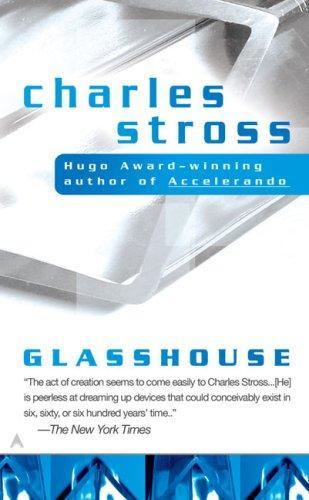
Glasshouse
by
Charles Stross
Published 14 Jun 2006
Your cohort—all ten of you, one of the twenty groups we're introducing to this section of the polity over the next five megs—will meet once a week, on Sundays, in a parish center called the Church of the Nazarene, where you can discuss whatever you've learned. To make the simulation work better, there are a lot of nonplayer characters, zombies run by the Gamesmaster, and for much of the time you'll be interacting with these rather than with other experimental subjects. Everything's laid out in a collection of hab segments linked by gates so they feel like a single geographical continuum, just like a traditional planetary surface." He calms down a little. "Questions?" "What are the society's ground rules?" asks a male with dark skin in a light suit from the back row.
…
He looks at me thoughtfully. "Promise." "Okay, I promise." I pause. "So what's wrong?" His shoulders are hunched. "I've just come out of memory surgery," he says slowly. "I think that's where Fiore and Yourdon and their crowd found most of us, by the way. A redaction clinic must be a great place to find experimental subjects who're healthy but who've forgotten everything they knew. People who've come adrift from the patterns of life, and who have minimal social connections. People with active close ties don't go in for memory surgery, do they?" "Not often, I don't think," I say, vaguely disturbed by a recollection of military officers briefing me: trouble in another life, urgent plotting against an evil contingency.
…
And I am particularly worried because some aspects of the YFH-Polity experimental protocol, as published, sound alarmingly amenable to redirection along these lines. My biggest reason for wanting you to have undergone major memory erasure prior to injection into YFH-Polity is this: I suspect that when the incoming experimental subjects are issued with new bodies, they are filtered through an A-gate infected with a live, patched copy of Curious Yellow. Therefore preemptive memory redaction is the only sure way of preventing such a verminiferous gate from identifying you as a threat for its owners to eliminate. I watch myself writing this letter to myself.

Adaptive Markets: Financial Evolution at the Speed of Thought
by
Andrew W. Lo
Published 3 Apr 2017
Lieberman at the Social Cognitive Neuroscience Laboratory at UCLA, and Kip Williams, a social psychologist now at Purdue University, deliberately induced feelings of social rejection among a group of subjects, and then identified the regions of the brain that were most activated during the stimulus using fMRI techniques.16 How do you deliberately induce social rejection in a laboratory setting? The experimental subjects—UCLA students—were placed in MRI machines and told they were playing a cooperative computer game called Cyberball with two other players, also in MRI machines, to monitor how their neural activity synchronized as they played. This was a lie. In fact, Cyberball was a psychological test devised by Williams to measure the reactions of people being ostracized.
…
And what about the simple pleasures of making money? In 2001, a team led by Hans Breiter at Harvard Medical School and Massachusetts General Hospital—a team that included Daniel Kahneman—used fMRI scans to determine what happened in the human brain when a person experienced financial gains and losses in real time.22 Breiter’s experimental subjects were given a $50 stake to play a simple gambling game. The screen displayed one of three computer-animated spinners, similar to the kind found in children’s board games, divided equally into three possible outcomes: the “good” spinner with $10, $2.50, and $0; the “intermediate” spinner with $2.50, $0, and −$1.50; and the “bad” spinner with $0, −$1.50, and −$6.23 Unknown to the test subjects, the outcomes of the spinners only appeared to be random.
…
Does risk-seeking behavior have an explanation in the neurology of pleasure? To answer this question, Camelia M. Kuhnen and Brian Knutson at Stanford University followed up Breiter’s experiments with another fMRI study.24 Kuhnen and Knutson designed a financial computer game—more formally, the Behavioral Investment Allocation Strategy (BIAS) task—that their experimental subjects played while being scanned in an MRI machine. The players were presented with three investment options: a “safe” bond or one of two risky stocks with prices that fluctuated randomly. Unknown to the players, one of the two stocks was a “good” stock that always increased in value over time, and the other was a “bad” stock that always declined in value.

Life at the Speed of Light: From the Double Helix to the Dawn of Digital Life
by
J. Craig Venter
Published 16 Oct 2013
We looked at B. subtilis, which had been used by a Japanese team to grow large segments of a bacterial algae genome.14 But while B. subtilis could indeed accommodate the large 290kb segments, there was no way to recover the DNA intact from these cells, so we looked elsewhere. The solution came from the more complex cellular world of the eukaryote and a favorite experimental subject of scientists around the world studying eukaryotic biology: brewer’s yeast, Saccharomyces cerevisiae. For centuries S. cerevisiae has been used for alcohol fermentation as well as for making bread, but in the laboratory it has been routinely exploited because it has a relatively small genome and an array of genetic tools that make genetic manipulation easy.
…
The achievement of the Roslin Institute rested on many factors, from a technical understanding of the cell cycle to practical considerations, such as protecting reconstructing embryos in a shell of protective agar.4 But Dolly was far from being the first clone and was not the first cloned sheep, either, as many believe.5 The history of nuclear transfer actually dates back to 1938 and the highly creative and influential German embryologist Hans Spemann (1869–1941), who published the first nuclear-transplantation experiments.6 Spemann was the pioneer of what he called Entwicklungsmechanik, or “developmental mechanics,” and was awarded the Nobel Prize for his efforts in 1935. With Hilde Mangold (1898–1924) he conducted the first nuclear-transfer experiments on the newt, which was an ideal experimental subject because of its large, easily manipulated eggs. In 1938 Spemann published the milestone text Embryonic Development and Induction, which described how his experiment rested on the dexterous use of microscopy, tweezers, and a delicate hair, probably plucked from his daughter Margrette. Spemann used the hair as a noose to divide the cytoplasm of a newly fertilized salamander egg under the gaze of a binocular microscope, creating a dumbbell-shaped embryo.

Mind Wide Open: Your Brain and the Neuroscience of Everyday Life
by
Steven Johnson
Published 2 Jan 1999
So Joy agrees to make a last-minute addition: a final stage during which I’m shown a single sentence from my book and given the entire forty seconds to ruminate. Then Joy walks me through the risks. “We’re looking at your brain here. So there’s a very small chance that we might see something in these scans, some abnormality.” I nod. “You mean a brain tumor.” “Sometimes when we do work with experimental subjects-people who come in to help with our research, and who don’t have any symptoms-they say, ‘If you see something in there, don’t tell me.’ ” “Hey, if you see something in there that you don’t like,” I smile ruefully, “by all means let me know.” Then she moves on to the dangers associated with the scanner itself.
…
The first stage comes almost immediately: Joy gives a quick glance at the conventional MRI images of my brain, and announces that I have a healthy specimen. “Everything looks great,” she says as she slaps the X-ray-like film onto a light board. “A textbook brain.” I glow with pride for a second, and then think, She probably tells this to all her experimental subjects. Still, I find myself more pleased than I had expected to find out that I have no visible brain tumors. I think, At least I’ve got that going for me. The second stage is where it gets interesting. A few days pass, and Joy sends an email to let me know that the results are in. “You’re going to like this,” she writes temptingly.

The Happiness Industry: How the Government and Big Business Sold Us Well-Being
by
William Davies
Published 11 May 2015
Wundt was keen to avoid resorting to introspection of the sort that many English psychologists had used during the 1850s and 1860s. The purpose of the laboratory was to study mental processes in a more objective fashion than that. He and his assistants built various tools to test the response of experimental subjects to different stimuli. They also borrowed various instruments from physiology and physics labs to time neural reflexes. And they built their own version of a tachistoscope, which was used to time how long it took to get a person’s attention. The eyes were a crucial area of study for the pioneering psychologists, but not merely in a physiological sense.
…
One of the key differences – which also distinguishes this early psychological research from what would come later – was that the subjects being experimented on were scholarly associates and students of Wundt. They were fully aware of what the experiments were seeking to test and contributed their own subjective insights to the findings. The perspective of the experimental subject was important here, and there was no sense in which they were being manipulated. Conscious thought processes needed to be respected in their own right and not reduced to naturalistic questions of cause and effect. For instance, the speed of conscious reaction (when the subject became aware of something) could be compared to the speed of unconscious reaction (when the physical reflex occurred).
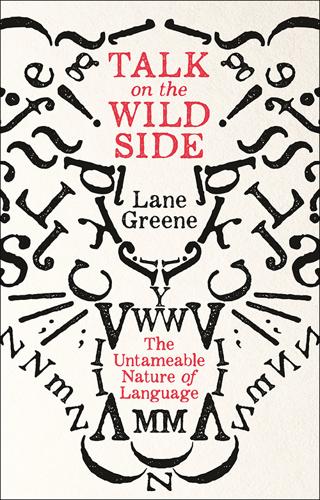
Talk on the Wild Side
by
Lane Greene
Published 15 Dec 2018
The “language governs thought” idea has always been an intellectually attractive one. Brown’s article was a minor sensation. He initially got hundreds of letters, and donors supported his development of Loglan. A group of followers agreed to learn and propagate the language.2 But he never got his improbable plan – to expose experimental subjects to eight months of intensive Loglan – off the ground. Funding for his project began drying up. A group of Loglan enthusiasts, led by Bob Le Chevalier, who thought they had his tacit blessing, had continued adding words and ideas to Loglan. When he found out, Brown was furious: Loglan was his.
…
Lera Boroditsky, a psychologist who specialises in language and thought at the University of California San Diego, has researched how simple differences in metaphor make a big difference in the kind of policy solutions people support. For example, she and Paul Thibodeau gave one group of experimental subjects a news paragraph about a fictional town, Addison, beginning “Crime is a beast ravaging the city of Addison” (emphasis mine), and went on to describe the crime problem in detailed statistics. When questioned afterwards, 71% of the subjects recommended some form of tougher law-and-order policies for Addison.
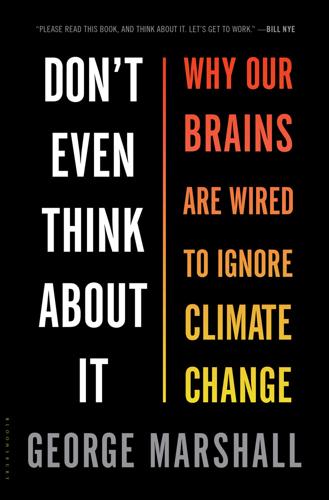
Don't Even Think About It: Why Our Brains Are Wired to Ignore Climate Change
by
George Marshall
Published 18 Aug 2014
The participants in the vast majority of experiments that built the models of cognitive biases are university students. Common sense would tell us to be wary of drawing conclusions about innate human attitudes to long term risk from overconfident young people with a marked tendency to smoke and drink too much. A team of anthropologists at the University of British Columbia termed these experimental subjects “WEIRD,” a provocative acronym for people from countries that are Western, educated, industrialized, rich, and democratic. They described them as an extremely unrepresentative and “exotic” group worthy of anthropological study in their own right. To prove their point, the anthropologists showed that archetypal psychological experiments could generate very different results when repeated in different cultures and asked for “caution in addressing questions of human nature from this slice of humanity.”
…
Preparedness and adaptation are routes for people to accept that climate change is real and already under way—and, as I have shown, it is possible to build a discussion around these topics even when it is politically taboo to talk about the wider issues. However, these approaches will always be specific to each context. Whatever the findings of psychology experiments with their WEIRD experimental subjects, we need to remember that not everyone wants to protect the status quo, especially if they are already struggling against economic and social injustice. So we need a NARRATIVE OF POSITIVE CHANGE, in which our adaptation to climate change does not just protect what is already here but also creates a more just and equitable world.

How to Be a Liberal: The Story of Liberalism and the Fight for Its Life
by
Ian Dunt
Published 15 Oct 2020
His father, Juste Constant was a wealthy and eccentric Swiss colonel who was obsessed with the idea that you could take a child and fashion them into an ideal version of your values if you had complete control of their upbringing. So Constant was intended to be his father’s prodigy. He would be instructed in lofty academic subjects from an early age and sent to the best tutors in Europe to create a true Renaissance man for modernity. Not all of Juste’s experimental subjects were so lucky. In 1761, he stumbled across an intelligent young girl called Marianne Magnin in a village and proceeded to kidnap her, pay off the parents, and have her tutored in isolation so that she could be turned into the perfect mistress. By 1772 – when Constant was four, Marianne 20 and Juste 46 – she was made the child’s carer.
…
Sherif told them he wanted to give the boys ‘a wholesome cooperative living experience which will prepare the youngsters for better citizenship and to be leaders in their communities.’ No mention was made of the real purpose of the experiment. After 300 hours of selection Sherif whittled down the list to 22 ‘experimental subjects,’ who would be split into two groups of 11 each. His plan was split into three phases, each lasting a week. In the first, the two groups would be kept apart and watched for how they developed a group identity. Towards the end of the week they would slowly be given evidence of the existence of the other group.
…
The lines were not remotely similar. Anyone could see what the right answer was. In a control test ahead of the experiment, the error rate was below one per cent. The eight students went into the room. But in reality, only one was a college student – the other seven were actors. They were lined up ahead of the experimental subject so that he would see all but one of them give their answers before he gave his. These seven actors were given detailed instructions about how they should behave. For the first two rounds they would all say the same obviously right answer. Then, in the third round, they would all give the same wrong answer.

Experience on Demand: What Virtual Reality Is, How It Works, and What It Can Do
by
Jeremy Bailenson
Published 30 Jan 2018
It was a powerful simulation of an event that exists far outside of the lived experience of most people, reinforced by audio, visual, and even physical touch feedback. If information about the environmental consequences of our paper consumption were tied to such an experience, we wondered, would it have a stronger effect than if the consequences were described in print? In this first study, 50 experimental subjects were given statistics Sun Joo had computed based on the amount of toilet paper an American consumes, about 24 rolls per year. They were told that using nonrecycled toilet paper for the duration of their lives would cause the felling of two full-sized, standing trees. Then, half of the subjects read a carefully crafted written account describing what it would be like to cut down a tree, while the other half experienced the virtual tree-cutting.
…
In the first study to look at the Midas Touch in virtual space, Wijnand had two people chat online using instant messaging. One was the subject, while the other was a “confederate,” a person who is part of the experiment but pretends to be another participant in the study. During the interaction, experimental subjects wore a sleeve on their arm that used six points of vibration contact to simulate being tapped on the arm. Some subjects received the virtual touch from the confederate, who could activate the vibrating sleeve on a networked computer, and others did not. After the experiment was over, the confederate got up from the computer station in front of the subject and dropped eighteen coins on the ground.
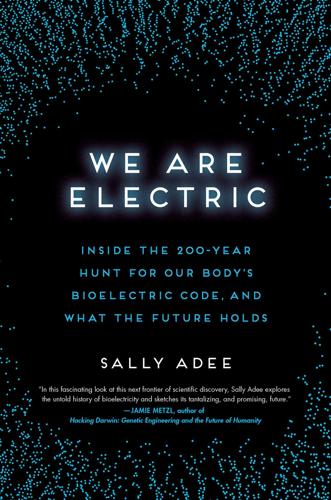
We Are Electric: Inside the 200-Year Hunt for Our Body's Bioelectric Code, and What the Future Holds
by
Sally Adee
Published 27 Feb 2023
Unfortunately, even the most fundamental mechanism eluded Aldini—that the organ that should be stimulated is the heart, not the brain. In fact, he repeatedly and explicitly refuted the idea that the heart could be affected by electrification at all. His focus on spectacle over basic science had misled him.17 So it came as no surprise to him that none of his experimental subjects—human or animal—were ever shocked back to life. Neither was such an outcome ever his goal for the hanged Forster. “Our object here was not to produce reanimation, merely to obtain a practical knowledge of how far Galvanism might be employed as an auxiliary to other means in attempts to revive,” he wrote in an 1803 account of the experiment.
…
Berger was determined to find the psychophysiological basis for mental telepathy. In 1902, he discovered Caton’s work on detecting the brain’s electrical currents with an electrometer. After twenty more years of trying to find commensurate signatures in the brain, he finally got his hands on a string galvanometer. His first experimental subject was a seventeen-year-old college student named Zedel, who had been left with a large hole in his skull after the removal of a brain tumor. Berger attached Zedel’s electrodes to a string galvanometer he had borrowed from the university hospital, where it was normally used to do early versions of the ECG.

Bad Science
by
Ben Goldacre
Published 1 Jan 2008
These subjects were placed near one end of a line of actors who presented themselves as fellow experimental subjects, but were actually in cahoots with the experimenters. Cards were held up with one line marked on them, and then another card was held up with three lines of different lengths: six inches, eight inches, ten inches. Everyone called out in turn which line on the second card was the same length as the line on the first. For six of the eighteen pairs of cards the accomplices gave the correct answer; but for the other twelve they called out the wrong answer. In all but a quarter of the cases, the experimental subjects went along with the incorrect answer from the crowd of accomplices on one or more occasions, defying the clear evidence of their own senses.
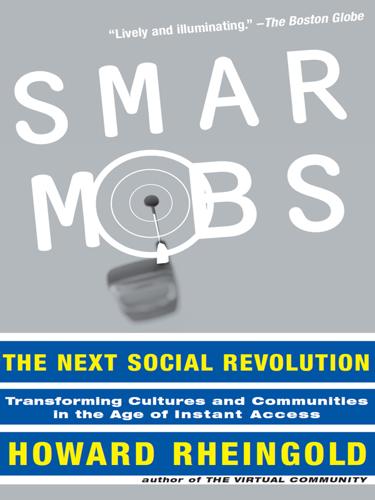
Smart Mobs: The Next Social Revolution
by
Howard Rheingold
Published 24 Dec 2011
Decades after Hobbes, John Locke, philosophical mentor to Thomas Jefferson, asserted that humans could govern through social contracts rather than coercive authority.8 Since the time of Hobbes and Locke, political philosophers, sociologists, economists, and candidates for public office have argued over the role of central authority in governance, markets, and human affairs. The argument became scientific as well as philosophical when researchers began to systematically observe the way people really do work together. Laboratory investigators began to formulate experiments to probe cooperative behavior. The experiments were based on simple games in which experimental subjects can win or lose money (more about game theory shortly). In the 1950s, economist Mancur L. Olson found that small groups are more likely to exhibit voluntary cooperation in these experimental games than larger groups and that cooperative behaviors increase when the games are repeated over and over with the same groups and when communication is permitted among the participants.9 In 1982, Olson wrote, “Unless the number of individuals in a group is quite small, or unless there is coercion or some other special device to make individuals act in their common interest, rational, self-interested individuals will not act to achieve their common or group interests.”10 One unavoidable question remained.
…
The other player, the “responder,” can accept the deal and the money is split as proposed, or the second player can refuse the deal and neither player gets any money. The result that is not surprising to people who value fairness but puzzles those who see humans as rational creatures who act in their self-interest is that two-thirds of the experimental subjects offer between $40 and $50 out of $100 total. Only four in one hundred people offer less than 20 percent, and more than half of the responders reject offers smaller than 20 percent of the total. Why would anyone turn down 20 percent of something in exchange for nothing? Martin A. Nowak, Karl Sigmund, and Karen M.
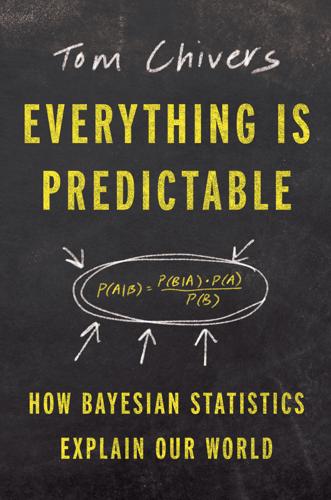
Everything Is Predictable: How Bayesian Statistics Explain Our World
by
Tom Chivers
Published 6 May 2024
That second result is twenty-five standard deviations from the mean, which implies that you should not expect to see it by chance, even if you were repeating the experiment every second for the entire lifetime of the universe. And yet even knowing that, I suspect that you are unconvinced that the experimental subject was really psychic. If there were really only two possible explanations for the data—“pure chance” or “psychic powers”—then, yes, any remotely plausible prior probability you had for the existence of telepathy would be washed out by this extraordinary level of evidence. But that’s not the case.
…
What a good Bayesian would do is put more weight on whichever sense gives the most precise information. Chris Frith and Anil Seth both mentioned one experiment that showed that this is exactly what happens.16 “It’s a beautiful experiment,” said Frith. “Not by me. You bring together vision and touch.” The experimental subjects were asked to estimate the width of a ridge on a board, using their eyes and hands. But the board and ridge weren’t real: they were projected onto a mirror from a screen above, with the subject’s hands underneath the mirror attached to what Frith called “fancy computerized robots” and the paper’s authors called “force-feedback devices.”
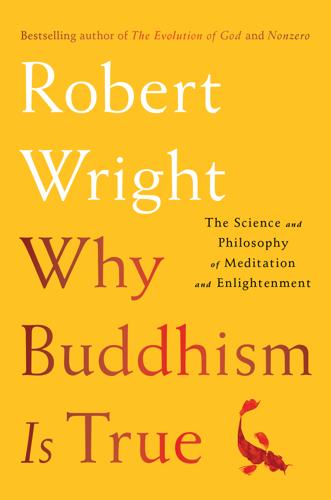
Why Buddhism is True
by
Robert Wright
The closest thing to a self would be the algorithm that determines which circumstances put which modules in charge. And that algorithm can’t be what we mean by the “conscious self” in humans—the CEO self—because humans don’t consciously decide to go into romantic mode or fearful mode. Indeed, if a psychologist told experimental subjects that they’d responded to a movie by changing their reactions to ad pitches, or that they’d responded to pictures of women by changing their time-discounting rate, they’d probably be surprised. So if the conscious self isn’t the thing that changes our channels, putting a new module in charge, what is?
…
The study was conducted by two Princeton University psychologists, and it involved, for starters, setting up an opportunity for people to be Good Samaritans, to help a stranger in need. Here is how the psychologists described the scene they created: “When the subject passed through the alley, the victim was sitting slumped in a doorway, head down, eyes closed, not moving. As the subject went by, the victim coughed twice and groaned, keeping his head down.” Some of the experimental subjects stopped to help, and some didn’t. If you had been watching all this, you probably would have seen essence-of-good-person in the former and essence-of-bad-person in the latter. But there’s actually a different explanation for why some helped and some didn’t. The subjects of the experiment were students at Princeton Theological Seminary.
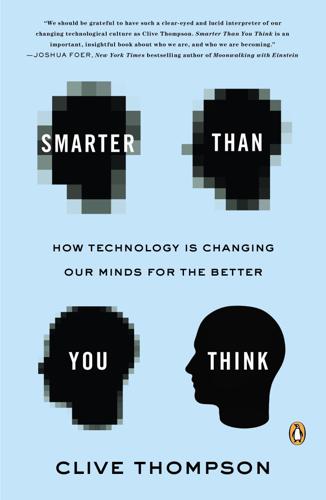
Smarter Than You Think: How Technology Is Changing Our Minds for the Better
by
Clive Thompson
Published 11 Sep 2013
After only a few minutes examining their bedrooms, the strangers could produce eerily accurate descriptions of the subjects’ personalities. Gosling wondered whether Facebook pages would be equally revealing, so he repeated the experiment online, arranging to have strangers inspect the Facebook pages of experimental subjects. Sure enough, they were able to accurately describe those personalities, too. The ambient signals given off by status updates and streams of photos can be as powerful as those from real-life objects. Indeed, they’re sometimes more revelatory. One of the hilarities of ambient life is discovering how much weirder people are than you thought, even those you believed you knew well.
…
Resnick, Roger Säljö, Clotilde Pontecorvo, and Barbara Burge (Berlin: Springer Verlag, 1997), 41–62, accessed March 26, 2013, www.ida.liu.se/~729G12/mtrl/Suchman_Centres_of_coordination.pdf; and a personal interview with Heath. a form of proprioception: Portions of my writing here appeared in “Clive Thompson on How Twitter Creates a Social Sixth Sense,” Wired, June 2007, accessed March 26, 2013, www.wired.com/techbiz/media/magazine/15-07/st_thompson. have strangers inspect the Facebook pages of experimental subjects: My description of Gosling’s work comes from Samuel D. Gosling, Sei Jin Ko, Thomas Mannarelli, and Margaret E. Morris, “A Room with a Cue: Personality Judgments Based on Offices and Bedrooms,” Journal of Personality and Social Psychology 82, no. 3 (2002): 379–98, accessed March 26, 2013, homepage.psy.utexas.edu/homepage/faculty/Gosling/reprints/JPSP02-Roomwithacue.pdf; Sam Gosling, Snoop: What Your Stuff Says About You (New York: Basic Books, 2009), Kindle edition; Samuel D.

Tools for Thought: The History and Future of Mind-Expanding Technology
by
Howard Rheingold
Published 14 May 2000
It had been a challenging and exhilarating to build this new system for augmenting thought -- but it wasn't as much fun having one's work habits augmented at a forced-march pace. When both the old-timers and newcomers to the growing project faced the task of learning new roles, changing old attitudes, adopting different methods, on regular basis, just because the system enabled them to do so, the great adventure became more arduous than any of the ARC pioneers/experimental subjects had anticipated. So a psychologist was brought in to consult about those parts of the system that weren't found in the circuitry or software, but in the thoughts and relationships of the people who were building and using the system. Dr. James Fadiman joined ARC as an observer-catalyst-therapist.
…
The system was set up to collect data on its own operations, in order to test the hypothesis that a teleconference-like system could enhance the effectiveness of research communities. The Electronic Information Exchange System, known as EIES (pronounced "eyes"), was one of those experiments that never shut itself down because the experimental subjects just wouldn't let go of it. It seemed to happen with every new development of interactive computing -- people would simply refuse to stop experimenting with the system, and wouldn't give up the experimental tools when the experiment was over. As Jim Fadiman noted of ARC, people seem to be as reluctant to be deaugmented as they are resistant to augmentation in the first place.

T: The Story of Testosterone, the Hormone That Dominates and Divides Us
by
Carole Hooven
Published 12 Jul 2021
But, echoing Berthold’s research on the means by which the testes communicated with the rest of the body, Bayliss aimed to determine whether the pancreas communicated with the digestive organs through the blood, or alternatively, through the nervous system. The latter explanation was generally accepted and favored by the world’s most influential physiologist at the time, a Russian called Ivan Pavlov. (You may remember Pavlov from his famous experiments on dogs.) Dogs were also Bayliss and Starling’s experimental subjects, although their dogs had a more miserable fate. The subject of Bayliss and Starling’s “crucial experiment,” as they called it, was anesthetized with its digestive system surgically exposed. They discovered that when acid was introduced into the small intestine, it produced a “well marked secretion.”
…
So T may increase aggression, but only in a subset of men. This finding helps explain the lack of consistency in previous studies. If the study design includes only a small number of men (which is usually the case, since these studies are complex and expensive), then a significant result is less likely, because there might not be enough experimental subjects with the right personality traits. To more fully explore the relationship between T and aggression, these researchers ran a follow-up experiment, the largest of its kind to date. They recruited over three hundred men, who, among other tasks, filled out a questionnaire about their personality and played a computer game.
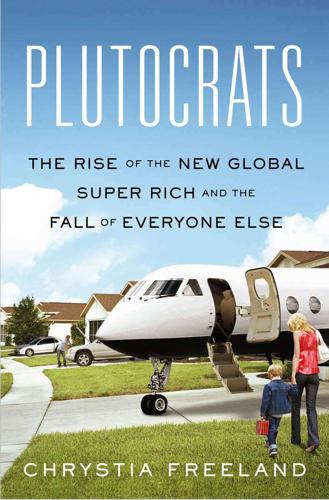
Plutocrats: The Rise of the New Global Super-Rich and the Fall of Everyone Else
by
Chrystia Freeland
Published 11 Oct 2012
The team found that the drivers of new, expensive cars were twice as likely to cut off other vehicles or pedestrians as the drivers of old, cheap cars. In another test, experimental subjects with higher real-world incomes were more likely to deceive a hypothetical job applicant in order to persuade him or her to accept a lower salary—an accomplishment that earned the manager in the experiment a bonus. Even imagining you were rich changed the way experimental subjects behaved. In another study, participants were prompted to think of themselves as either very rich or very poor, and were then invited to take candy from a jar that afterward would be given to children in a nearby lab.
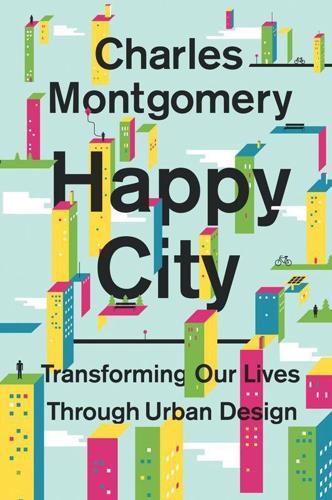
Happy City: Transforming Our Lives Through Urban Design
by
Charles Montgomery
Published 12 Nov 2013
.: Hall, James, “Men in Their Late 40s Living in London Are the Unhappiest in the UK,” The Telegraph, February 28, 2012, www.telegraph.co.uk/news/newstopics/howaboutthat/9110941/Men-in-their-late-40s-living-in-London-are-the-unhappiest-in-the-UK.html (accessed March 3, 2012); Office for National Statistics, “Analysis of Experimental Subjective Well-Being Data from the Annual Population Survey, April to September 2011,” February 28, 2012, www.ons.gov.uk/ons/rel/wellbeing/measuring-subjective-wellbeing-in-the-uk/analysis-of-experimental-subjective-well-being-data-from-the-annual-population-survey–april—september-2011/report-april-to-september-2011.html (accessed March 3, 2012). Architects’ brains: Kirk, U., M. Skov, M. S. Christensen, and N.
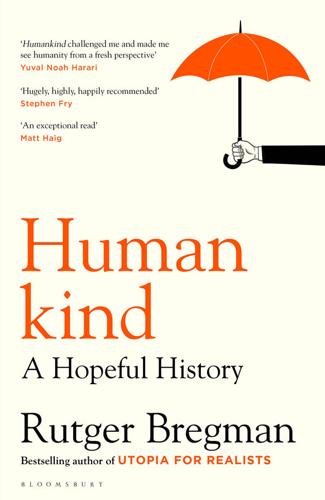
Humankind: A Hopeful History
by
Rutger Bregman
Published 1 Jun 2020
He even came to blows with one forty-six-year-old woman who turned the shock machine off. Williams turned it back on and demanded she continue.12 ‘The slavish obedience to authority,’ writes Gina Perry, ‘comes to sound much more like bullying and coercion when you listen to these recordings.’13 The key question is whether the experimental subjects believed they were administering real shocks at all. Shortly after the experiment, Milgram wrote that ‘with few exceptions subjects were convinced of the reality of the experimental situation’.14 Yet his archives are filled with statements from participants expressing doubt. Perhaps that’s not very surprising when you consider how bizarre this situation must have seemed.
…
Eichmann assured him.31 Or as he’d already declared in 1945: ‘I will leap into my grave laughing because the feeling that I have five million human beings on my conscience is for me a source of extraordinary satisfaction.’32 Reading through the thirteen hundred pages of interviews, teeming with warped ideas and fantasies, it’s patently obvious that Eichmann was no brainless bureaucrat. He was a fanatic. He acted not out of indifference, but out of conviction. Like Milgram’s experimental subjects, he did evil because he believed he was doing good. Although transcripts of the Sassen interviews were available at the time of the trial, Eichmann managed to cast doubt on their authenticity. And so he put the whole world on the wrong track. All that time, the interview tapes lay mouldering in the Bundesarchiv in Koblenz, where the philosopher Bettina Stangneth found them fifty years later.
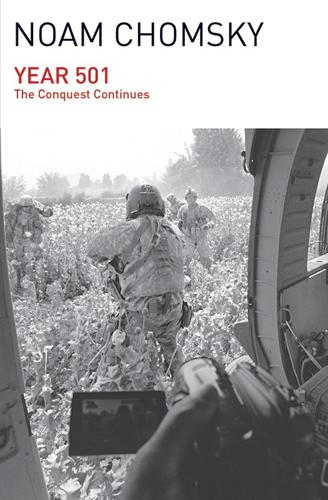
Year 501
by
Noam Chomsky
Published 19 Jan 2016
British officials, merchants, and investors “amassed vast fortunes,” gaining “wealth beyond the dreams of avarice” (Parker). That was particularly true in Bengal, which, Keay continues, “was destabilized and impoverished by a disastrous experiment in sponsored government”—one of the many “experiments” in the Third World that have not exactly redounded to the benefit of the experimental subjects. Two English historians of India, Edward Thompson and G.T. Garrett, described the early history of British India as “perhaps the world’s high-water mark of graft”: “a gold-lust unequalled since the hysteria that took hold of the Spaniards of Cortes’ and Pizzaro’s age filled the English mind.
…
In earlier days, Vietnam was described as “a going laboratory where we see subversive insurgency...being applied in all its forms” (Maxwell Taylor), providing opportunities for “experiments with population and resource control methods” and “nation building.” The Marine occupation of Haiti was described in similar terms, as we have seen. The technical posturing appears to sustain the self-image, at least.7 One finds no intimation that the experimental subjects might have the right to sign consent forms, or even to know what is happening to them. On the contrary, they scarcely have the rights of laboratory animals. We will determine what is best for them, as we always have; another hallmark of the 500 years. The wise among us just know, for example, that maximizing consumption is a core human value: “If we weren’t influencing the world” in this direction, “it would be someone else because what we are seeing everywhere is an expression of the basic human desire to consume,” Boston University professor of management Lawrence Wortzel explains.
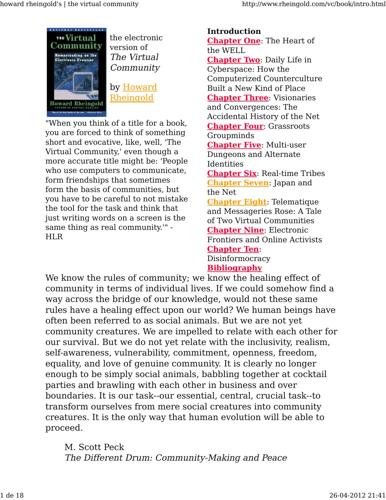
Howard Rheingold
by
The Virtual Community Homesteading on the Electronic Frontier-Perseus Books (1993)
Published 26 Apr 2012
As Engelbart often said about NLS: "If ease of use was the only 26-04-2012 21:44 howard rheingold's | the virtual community 6 de 35 http://www.rheingold.com/vc/book/4.html valid criterion, people would stick to tricycles and never try bicycles." EIES, like ARPANET, was another one of those experiments that never shut themselves down because the experimental subjects just wouldn't let go of them. EIES quickly expanded from pure scientific research communities to legislative and medical researchers. Some of the EIES users concentrated on designing new generations of conferencing systems, based on what they had learned from their EIES participation. In this way EIES was the protocommunity that seeded the Net with CMC designers.
…
They chose to investigate the social structure of the system by selecting a novice user of e-mail and chat in Japanese University NETwork (JUNET), a male graduate student of information technology, twenty-four years old, and introducing him to Fujitsu Habitat. For the eighty-one days they observed their experimental subject, "Mr. T.," Yoshida and Kakuta reported that Mr. T. showed magnificent social adaptation to the visual network society of Populopolis. From March 16, 1993, when the experimental observation was started, the daily access time increased rapidly. We would call this phenomenon `addiction.' Mr. T. smoothly got into the network group and became active to join an on-line election of a president of the town-block association and an on-line discussion about Osaka dialect, and also joined an off-line meeting at an early stage.
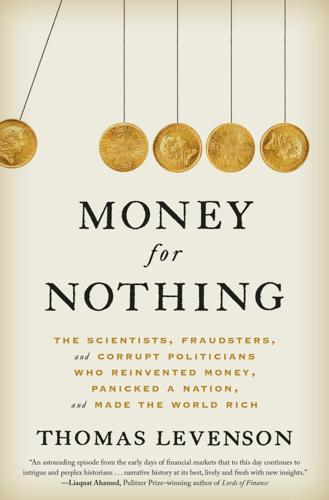
Money for Nothing
by
Thomas Levenson
Published 18 Aug 2020
One of the reasons Newton is remembered as perhaps the greatest genius in history is that from the beginning he did just that, plunging deeply not just into mathematics but into measurement of the world—at times to his own peril. * * * — Newton’s drawing of his bodkin experiment For example, in the early 1660s he wanted to know how the shape of the human eye might affect the perception of color. To find out, he turned to the nearest experimental subject, himself, and stuck a bodkin—a blunt needle—into the bottom of his eye socket and levered up. He meticulously recorded his results, including defining the curve he induced in his eyeball (“ye curvature a b c d e f”) and noting that the colored circles grew brighter “when I continued to rub my eye with ye point of ye bodkin.”
…
Nonetheless, Chandrasekhar, a Nobel laureate physicist, does offer a good introductory summary of the basic concepts in the first section of his book, and it is worth a look.) Another good account of the development of Newton’s thoughts on gravity through this period comes in A. Rupert Hall’s highly readable biography Isaac Newton: Adventurer in Thought (Cambridge: Cambridge University Press, 1996), pp. 58–63. TO FIND OUT, HE TURNED TO THE NEAREST EXPERIMENTAL SUBJECT Newton’s notebook, reproduced in Westfall, Never at Rest, p. 95. WHAT HE CALLED THE EXPERIMENTUM CRUCIS For a detailed reconstruction of the steps Newton took to arrive at his theory of color, see Westfall, Never at Rest, pp. 156–72. As Westfall documents, Newton’s journey to the crucial experiment was more involved than the legend has it (and Blake’s famous painting depicts)—and the demonstration that a spectrum can be recombined into white light passed through several different tests at Newton’s hand.
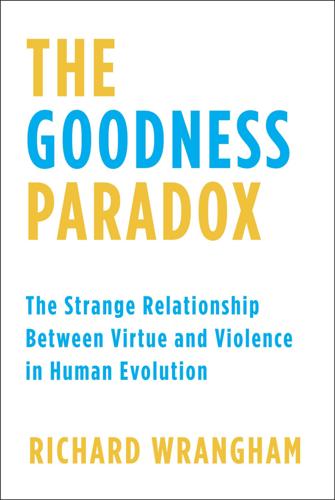
The Goodness Paradox: The Strange Relationship Between Virtue and Violence in Human Evolution
by
Richard Wrangham
Published 29 Jan 2019
Scholars looking for the consistent application of moral rules have traditionally considered two main ideas. They are the “utilitarian” and the “deontological” principles. Both work sometimes, but neither is followed all the time, which means they fail as general explanations.24 The utilitarian principle states that people should act to maximize the general good. Sometimes experimental subjects presented with moral problems conform to this idea. A popular dilemma for philosophers imagines a train hurtling down a track. An observer sees that, if she does nothing, five people are going to be killed. But she can pull a lever that diverts the train onto a side track, where it will kill only one person.
…
This led him to make a series of studies using an online game that he invented, called cyberball.47 Experiments by Williams and others showed that a mere two or three minutes of play with strangers, followed by being excluded, led predictably to sadness, anger, and a series of negative effects including feelings of alienation, depression, helplessness, and even a reduced sense of meaning in life. The effects did not depend on the subject’s personality or whether he or she felt similar to the ostracizers. Experimental subjects experienced elevated activation of a part of the brain, the dorsal anterior cingulate cortex, that is also activated by physical pain. To be ostracized, in short, engages a swift and strong series of neurally encoded responses that are very unpleasant. In the Pleistocene, the ostracism presumably involved familiars more than strangers.
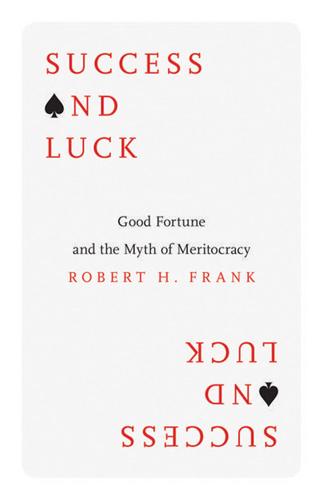
Success and Luck: Good Fortune and the Myth of Meritocracy
by
Robert H. Frank
Published 31 Mar 2016
In another study, the psychologist Martin Seligman and his coauthors asked people to engage in five exercises that had been shown in earlier work to boost feelings of well-being.15 One was to write and personally deliver a letter of gratitude to someone who had never been properly thanked for an earlier kindness. This step, they found, was associated with a larger and more persistent increase in happiness scores than any other of the four other exercises. Numerous other studies by psychologists report similar findings. Nancy Digdon and Amy Koble found that experimental subjects who were induced to feel gratitude toward others experienced subsequent reductions in anxiety and sounder sleep patterns.16 Nathan DeWall and his collaborators showed that people in whom feelings of gratitude had been induced were also more likely to experience empathy toward others and less likely to respond aggressively when provoked by others.17 Failure to appreciate luck’s importance is of course not the only reason the wealthy have been lobbying for additional tax cuts.

Children of Time
by
Adrian Tchaikovsky
Published 31 May 2015
Now, though, the pheromones that Fabian has released instil new behaviours in these individuals, bringing them to the silk side of his chamber, where they cut a neat exit wound for him to depart through. After they are done, he resets them, and they go about their duties with no sign that they were ever subverted. Fabian has been busy these last months in testing his discovery, with the whole of Great Nest as his experimental subject. He has listened to the news constantly recycled by the peer group. He knows who is causing Portia distress, who has tried to challenge the order of the world – other than himself. He is a male, vulnerable from the moment he slips from the peer house. He knows where he needs to go, but he fears journeying alone.
…
Still gouting out its contents into the hungry emptiness of space, the shattered satellite slipped free from its tangle of moorings, burning a hole in the great web, and was propelled away from the drones by the outrush of material from its jagged wounds. The drones themselves had given their all, the discharge of their weapons leaving their reactors cold and draining them dry. They tumbled off across the face of the web, to fall or to drift away. The satellite, though, had a more definite fate. It fell. Like Kern’s experimental subjects so very very long before, it was jolted out of its orbit, to be gathered up by the arms of the planet’s gravity, spiralling helplessly into the atmosphere, where it streaked across the sky, just an old barrel with a single ancient monkey in withered residence, delivering a final message to the anxious eyes below. 7.4 END TIMES They watched it burn its way across the sky.
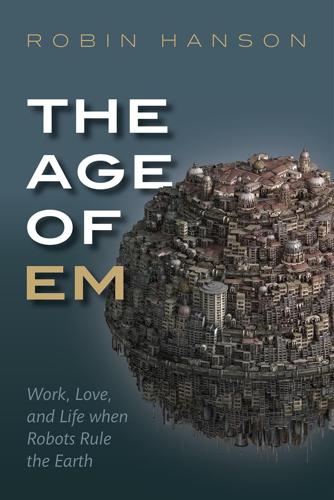
The Age of Em: Work, Love and Life When Robots Rule the Earth
by
Robin Hanson
Published 31 Mar 2016
Today, psychologists show common biases by randomly splitting experimental subjects into subgroups that are given different prompts. For example, a question might be worded two different ways, resulting in different answers on average. Or an “I knew it all along” hindsight bias might be shown via telling different subgroups different outcomes, and asking subjects what chance they would have assigned before to seeing their chosen outcome. Because of random fluctuations that influence individual decisions, however, such experiments today usually require large groups of experimental subjects to see subtle effects. In contrast, em spurs could directly demonstrate such biases in individuals, and not just in large groups.
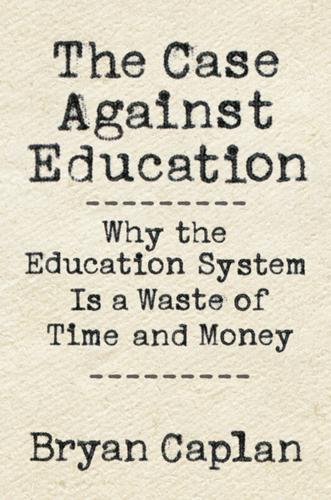
The Case Against Education: Why the Education System Is a Waste of Time and Money
by
Bryan Caplan
Published 16 Jan 2018
“Flowers for Algernon” is science fiction, but life mirrors art. Making IQ higher is easy. Keeping IQ higher is hard. Researchers call this “fadeout.” Fadeout for early childhood education is especially well documented. After six years in the famous Milwaukee Project, experimental subjects’ IQs were 32 points higher than controls’. By age fourteen, this advantage had declined to 10 points.83 In the Perry Preschool program, experimental subjects gained 13 points of IQ, but all this vanished by age 8.84 Head Start raises preschoolers’ IQs by a few points, but gains disappear by the end of kindergarten.85 You could object that preschoolers are unusually prone to forget what they learn, but the pattern extends all through high school.

Good Economics for Hard Times: Better Answers to Our Biggest Problems
by
Abhijit V. Banerjee
and
Esther Duflo
Published 12 Nov 2019
In the Becker-Stigler world, since the norms are norms only because people have submitted to them, there is no reason why Hispanic students would not sometimes turn out to be hard working and the Asians the slackers. It is history and the social context that seem to be guiding us toward one norm rather than the other. LET’S TRY TO ACCOUNT FOR TASTES45 To investigate the way the social context influences us, researchers at the University of Zurich recruited a group of bankers as experimental subjects and asked them to flip a coin ten times and report online the outcomes they got.46 They were told that if they had more than a threshold number of heads (or tails) they would get twenty Swiss francs (about $20) for each extra head (or tail) they reported. Nobody checked whether or not they reported accurately, which created a very strong incentive to cheat.
…
Consistent with this, the estimate of how much they would need to be paid to give up Facebook for a second month was substantially lower at the end of the first month (after experiencing life without Facebook) than before. All of this seems very consistent with the view that Facebook is addictive in the sense that it is hard to imagine life without it, but when you do give it up, things are not obviously worse. However, it is interesting that after the month of abstinence, the experimental subjects still wanted to be paid to give up Facebook; they did not simply feel grateful to be rid of it. The researchers assumed this was because they actually missed it, if less than they had expected, and therefore concluded Facebook generates over $2,000 of well-being per user. How does this square with the fact that getting cut off made people happier on average?

The Matter of the Heart: A History of the Heart in Eleven Operations
by
Thomas Morris
Published 31 May 2017
Their apparatus pumped blood into a tilted glass cylinder filled with oxygen, which constantly rotated so that the blood spread out into a thin film covering the inner surface, maximising its surface area.19 By the time the blood emerged from the bottom of the cylinder it had been oxygenated, and was then pumped into the experimental subject. Von Frey and Gruber never planned to use the device to keep an animal alive, but instead successfully employed it to perfuse the kidneys and hind legs of dogs that had already been killed. The apparatus was simple – and strikingly similar in conception to the machine John Gibbon would invent more than half a century later.20 Several other artificial oxygenators were constructed around the turn of the twentieth century; most used either the bubble or film techniques, but one invented by the American physiologist Donald Hooker (the uncle of the Hollywood star Katharine Hepburn) employed a rotating flat disc to increase the surface area of the blood, a scheme which would be imitated by later investigators.21 When Gibbon began to design his own heart-lung machine in 1933 he had no idea that a Russian scientist had already been working on the problem for a decade.
…
He creates a mechanical heart, a pump which is filled with donkey blood, and successfully uses it to revive a cadaver. In true Gothic tradition the action reaches its macabre climax as a thunderstorm rages outside the dilapidated laboratory: the hapless scientist and his colleague realise that having started to pump they cannot stop without killing their experimental subject, who in a cruel twist turns out to be the physiologist’s brother. After hours of frantic pumping they become exhausted and are forced to abandon their hopeless task, as the briefly resuscitated corpse breathes his last for the second time.1 Ross’s story may not be great literature, but it shows remarkable vision.

The Sullivanians: Sex, Psychotherapy, and the Wild Life of an American Commune
by
Alexander Stille
Published 19 Jun 2023
And so they encouraged patients to entrust the care of their children to babysitters, boarding schools, or other adults in the community. Chris eventually learned that his birth mother—one of Newton’s patients who had felt (or had been deemed) incapable of raising him—had agreed to hand him over to Jane. “This made me feel like I was an experimental subject raised by the core theorist of the group,” he said, wondering whether people never spoke about his origins because it might throw off the experiment as they watched to see how he would turn out. But the silence left him, as he put it, “a man without a story.” Until he was about five, Chris went every day to play in a big house on West Ninety-First Street, where Newton, who had by then divorced Jane Pearce, lived with his new family and about twenty other people in a building that also served as the new headquarters of the Sullivan Institute.
…
But she has told me, you know—it’s great for her to have this relationship with me.” What was harder for him to accept was Sue’s continued reluctance—and the reluctance of others in his life—to explain more about his origins. “That’s one of the things that makes me feel very much like an experiment, raised without my biological parents—like I’m the perfect experimental subject.” It felt as if Sue and everyone else in a position to know thought that telling him about his birth would somehow throw off the experiment. “So every time I am responded to with silence—every time I am not given an answer—I am immediately brought back to that place where I am a ‘control subject’ again.”
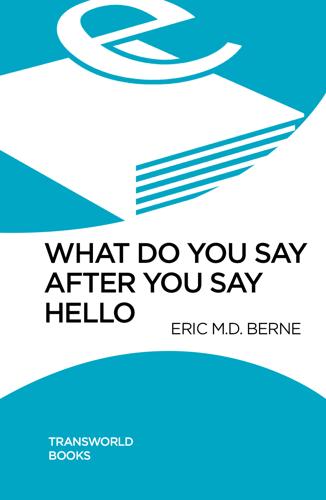
What Do You Say After You Say Hello?
by
Eric Berne
Published 2 Jan 1975
(Purdue-Wistar was the actual surname of the rats used in this experiment, and Victor and Arthur were the forenames of their godfathers, the experimenters.) Victor came from a long line of experimental subjects, and his genes suited him for this station in life. His mother, Victoria, had been handled and caressed when she was a pup. His distant cousin, Arthur Purdue-Wistar III (Arthur) was equally suited to being an experimental subject. His mother, Arthuria, had been left in her cage and was never handled or caressed when she was little. When the two cousins grew up, it was found that Victor weighed more, explored less, and dropped his excretions more often than Arthur did.

Affluenza: When Too Much Is Never Enough
by
Clive Hamilton
and
Richard Denniss
Published 31 May 2005
We are helped to invent an association between our childhood selves and the product in question and then, so as to relive our carefree childhood years, we are encouraged to consume the product all over again. Testing whether it is possible for marketers to create childhood ‘memories’, a team of psychologists in the United States found that experimental subjects who were shown advertisements suggesting they had shaken hands with Mickey Mouse as children were more likely than a control group to believe that they had actually done so.10 To ensure that the advertisements were not acting simply as a prompt that helped people recall legitimate memories, a number of other experiments were conducted.

The Talent Code: Greatest Isn't Born, It's Grown, Here's How
by
Daniel Coyle
Published 27 Apr 2009
Want to catch up with a desirable group? Better get busy. Bargh and his colleagues have performed a number of similarly magical-seeming experiments, where they use tiny environmental cues (such as inspirational words hidden in a crossword puzzle) to manipulate motivation and effort among unknowing experimental subjects. They possess piles of supportive data to explain why this is so effective—for instance, the fact that the unconscious mind is able to process 11 million pieces of information per second, while the conscious mind can manage a mere 40. This disproportion points to the efficiency and necessity of relegating mental activities to the unconscious—and helps us to understand why appeals to the unconscious can be so effective.
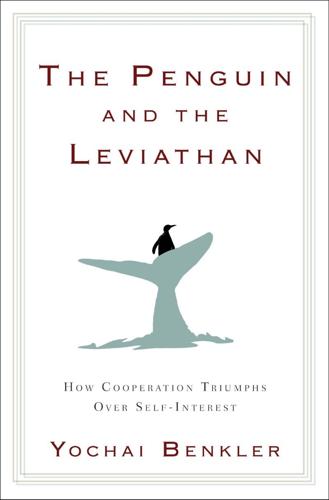
The Penguin and the Leviathan: How Cooperation Triumphs Over Self-Interest
by
Yochai Benkler
Published 8 Aug 2011
But if the responder rejects the offer, then both go home with nothing. Imagine you were playing this game and the proposer offered you some pittance, say, $1 of his $100. How would you respond? On one hand, a dollar is better than nothing. On the other hand, you think, “What the hell? This guy is being selfish! We’re both here as experimental subjects, he got lucky, why can’t he share more fairly! Screw him!” Sure, a dollar is technically better than nothing. Standard game theory would predict that respondents will always accept whatever is offered to them, because going home with something is better than going home with nothing. But knowing that the proposer had $100, most people would be tempted to punish him for his stinginess and reject the offer, leaving him with nothing.
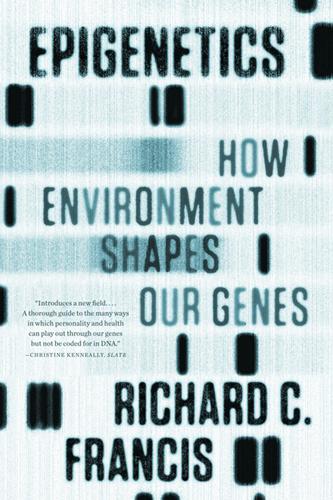
Epigenetics: How Environment Shapes Our Genes
by
Richard C. Francis
Published 14 May 2012
But there are reasons to suspect that epigenetic inheritance is less common in mammals than in other life-forms.20 Good examples of epigenetic inheritance have been identified in creatures as diverse as fruit flies and yeast.21 But some of the most dramatic examples of epigenetic inheritance occur in plants.22 As an experimental subject, the plant equivalent of a mouse is an unprepossessing member of the mustard family known only by its scientific name, Arabidopsis thalinia. In the wild, Arabidopsis thrives in diverse habitats throughout Eurasia; it also thrives in laboratory environments. It is a highly variable plant with respect to its size and flowering time, among other traits.
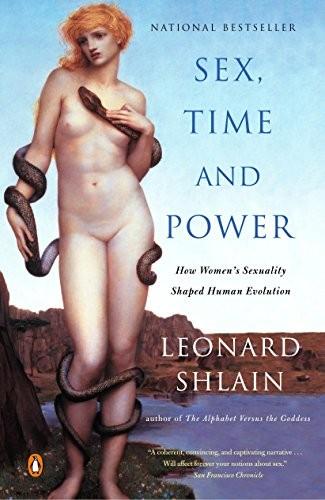
Sex, Time, and Power: How Women's Sexuality Shaped Human Evolution
by
Leonard Shlain
Published 2 Aug 2004
Then, somewhere in the landscape, you must identify an event that repeats at precise regular intervals. The external event’s periodicity would have to be spaced just right. If the episodes are too close together, it would be useless to teach an animal the majestic secret of time; too far apart, and it would tax your experimental subject’s newly evolving memory. The final steps of your experiment will be most challenging: entraining the inner, physiological timer you created with the outer, naturally occurring clock you selected. All the while, you must energetically twiddle the dials on the immensely complicated new neurocircuitry you had to install hastily in the brain of this creature.
…
She began cycling in harmony with other women, she lost estrus signaling, and she gained a bothersome monthly period. But all the elements of your complicated plan were not yet in place. Three more steps would be required. Step Four: Intently, you searched for a recurrent event in nature that marked off an appropriate interval with which you could begin to entrain your experimental subject’s menstrual cycle. You knew you could not start your Pavlovian conditioning experiment until the rapidly evolving sections of Gyna sapiens’ brain, grappling with the novel concept of linear time, had two events, one internal and one external, to guide it. Another requirement: The recurrent event had to possess some sort of a spectacular indicator.
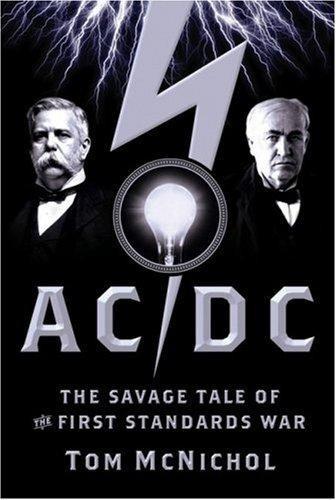
AC/DC: The Savage Tale of the First Standards War
by
Tom McNichol
Published 31 Aug 2006
Of all the combatants in the AC/DC struggle, it would be the loser who would fare best. For Thomas Edison, the defeat of his cherished DC standard was a bitter blow, but hardly fatal. The inventor was involved in far too many other projects for any one setback to derail him financially. However, Edison never again took up electricity as a serious experimental subject. He had tasted defeat in the field once, and that was quite enough. “People will forget my name ever was connected to anything electrical,” Edison said late in his life. It was less a prediction than a wish. Edison continued to refine his storage battery even after it was clear that batteries would never become a primary source of power for automobiles or industry.

The Captured Economy: How the Powerful Enrich Themselves, Slow Down Growth, and Increase Inequality
by
Brink Lindsey
Published 12 Oct 2017
Alas, since rapid price increases based on fundamentals happen all the time, it’s never clear that a bubble has occurred until after it’s over—which is why people are fooled by them, again and again. Asset bubbles are a glitch inherent in markets. Vernon Smith, the Nobel Prize–winning pioneer in experimental economics, has demonstrated this in a lab setting where groups of experimental subjects tasked with trading an asset will regularly inflate bubbles.16 However, bubbles are more than a market failure; they are a human failure. The very same herd mentality that sweeps market participants into a speculative mania can extend to government regulators as well. This is what happened during the housing bubble.

Operation Paperclip: The Secret Intelligence Program That Brought Nazi Scientists to America
by
Annie Jacobsen
Published 11 Feb 2014
In the debris, I am surprised to find a few specimen jars and bottles intact, filled with preserved human and insect tissues.” Smith asked questions around the concentration camp to try to learn more. Prisoners told him that the laboratory had served Nazi doctors as an experimental medical ward, and that everyone was afraid of it because it was a place “where selected prisoners [were] used as experimental subjects without their consent.” Although it was not yet known by American or British intelligence at the time, what Dr. Marcus Smith had come upon at Dachau was the place where a group of Luftwaffe doctors had been conducting medical research experiments on humans. This work took place in a freestanding barracks, isolated from the others, and was called Experimental Cell Block Five.
…
Alexander learned that the experiments had been conducted on Jews, Gypsies, homosexuals, and Catholic priests in the secret, freestanding barracks called Experimental Cell Block Five. “In general, the death of prisoners transferred to Block 5 was expected within 2–3 days,” testified John Bauduin. The second witness, Dr. Hussarek, a Czech scholar sent to Dachau for committing “literary crimes,” told Dr. Alexander that “only a few experimental subjects survived the low pressure experiments. Most were killed.” All three men agreed that only one individual was known to have survived the experiments, a Polish priest named Leo Michalowski. Father Michalowski’s testimony provided a critical missing link in the medical murder experiments and how they were so skillfully concealed.

The Secret of Our Success: How Culture Is Driving Human Evolution, Domesticating Our Species, and Making Us Smarter
by
Joseph Henrich
Published 27 Oct 2015
This experiment illustrates some of the essential features that distinguish human social life in all societies from that of other species: • We live in a world governed by social rules, even if not everyone knows the rules. • Many of these rules are arbitrary, or seem arbitrary (e.g., fish taboos in Fiji). • Others care whether we follow these rules, and react negatively to violations. • We infer that others care about whether we follow these rules. Figure 11.1. An experimental subject wagging his finger at Max the puppet, who is violating the rules for this context. As in the small-scale societies seen in earlier chapters, the social world faced by our Paleolithic ancestors would have been increasingly shaped by the emergence of an immense variety of norms, and by the selective spread of specific norms packaged in institutions, that fostered success in intergroup competition.
…
If three people free ride and only one person contributes his entire $4, then the free riders go home with $6 each while the contributor gets only $2. Thus, those aiming to maximize their payoff should contribute zero. However, most educated Westerners agree that—if asked—players should contribute all the money to the common project. Among the typical experimental subjects (undergraduates), the average contributions are commonly between 40% and 60%, with many people contributing either 100% (cooperators) or 0% (free riders).13 To examine whether high contributions in the Public Goods Game, and prosocial choices in other such games, result from automatic norm following, David Rand and his colleagues examined the relationship between the time people spent making their contribution decisions and the size of their contributions.

Idoru
by
William Gibson
Published 2 Jan 1996
"Have a seat," Laney said to Daniels. Daniels winced behind his glasses. "Now," Pursley said, "you were in a Federal Orphanage, in Gainesville, it says here, from age twelve to age seventeen." Laney looked at his eggs. "That's right." "During that time, you participated in a number of drug trials? You were an experimental subject?" 132 William Gibson S. "Yes," Laney said, his eggs looking somehow farther away, or like a picture in a magazine. "This was voluntary on your part?" "There were rewards." "Voluntary," Pursley said. "You get on any of that 5-SB?" "They didn't tell us what they were giving us," Laney said.
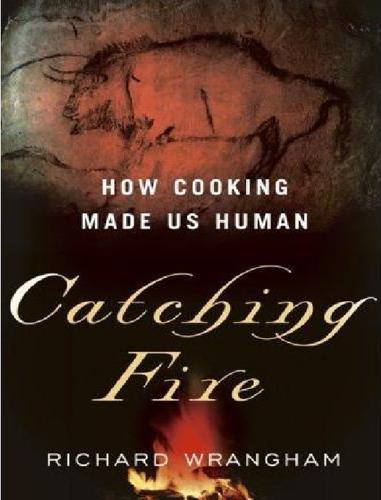
Catching Fire: How Cooking Made Us Human
by
Richard Wrangham
Published 15 Aug 2010
If cooking softens food and softer food leads to greater energy gain, then humans should get more energy from cooked food than raw food not only because of processes such as gelatinization and denaturation, but also because it reduces the costs of digestion. This prediction has been studied in the Burmese python. Physiological ecologist Stephen Secor finds pythons to be superb experimental subjects because after swallowing a meal, the snakes lie in a cage doing little but digesting and breathing. By measuring how much oxygen the pythons consume before and after a meal, Secor measures precisely how much energy the snakes use, and can attribute it to the cost of digestion. He typically monitors the snakes for at least two weeks at a time.
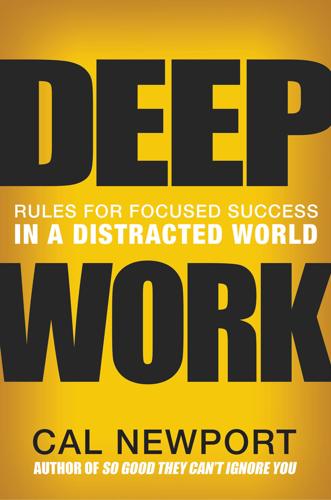
Deep Work: Rules for Focused Success in a Distracted World
by
Cal Newport
Published 5 Jan 2016
If you instead gave her a diary and asked her to record how she felt throughout the day, she wouldn’t be likely to keep up the entries with diligence—it’s simply too much work. Csikszentmihalyi and Larson’s breakthrough was to leverage new technology (for the time) to bring the question to the subject right when it mattered. In more detail, they outfitted experimental subjects with pagers. These pagers would beep at randomly selected intervals (in modern incarnations of this method, smartphone apps play the same role). When the beeper went off, the subjects would record what they were doing at the exact moment and how they felt. In some cases, they would be provided with a journal in which to record this information while in others they would be given a phone number to call to answer questions posed by a field-worker.

Cogs and Monsters: What Economics Is, and What It Should Be
by
Diane Coyle
Published 11 Oct 2021
And in fact alternative assumptions to homo economicus have come to be widely used in applied economics, even though it remains the most common starting point (Pesendorfer 2006). Outside both the artificial world of the computer and the offline world of humans, a third category of experiments has looked at the behaviour of many biological creatures in conditions of resource scarcity. Sometimes these experimental subjects, such as rats or pigeons, demonstrate emotional reactions, such as sharing with a friend, or punishing cheats even at a cost to themselves. But entities ranging from bacteria and fungi to capuchin monkeys also often seem to act like self-interested calculators, acting just like the agents of economic models or AI games.

Automating Inequality
by
Virginia Eubanks
The metaphor of the digital poorhouse is meant to resist the erasure of history and context when we talk about technology and inequality. The parallels between the county poorhouse and the digital poorhouse are striking. Both divert the poor from public benefits, contain their mobility, enforce work, split up families, lead to a loss of political rights, use the poor as experimental subjects, criminalize survival, construct suspect moral classifications, create ethical distance for the middle class, and reproduce racist and classist hierarchies of human value and worth. However, there are ways that the analogy between high-tech tools in public services and the brick-and-mortar poorhouse falls short.

The Broken Ladder
by
Keith Payne
Published 8 May 2017
The device looks like a hospital bed, except that you place your head in the center of a white donut-like structure. It is made of smooth plastic, like the overhead baggage compartments in an airplane, and is the size of a Volkswagen. As you take your position, you look up at a little computer screen inside the donut hole and learn that another experimental subject is going to watch the interview you just recorded and rate what she thinks of you. And you get to watch her ratings. On a little computer screen appears a grid of squares, and within each square is a personality description. As the other subject watches your video, she moves a cursor around the screen, effectively complimenting or insulting you with her clicks.

Statistics in a Nutshell
by
Sarah Boslaugh
Published 10 Nov 2012
Practical and ethical considerations also come into play—some research designs can simply be impossible to execute, prohibitively expensive, or considered unethical—and the researcher must be aware of community as well as scientific standards concerning the ethical conduct of research. Basic Vocabulary Research designs can be divided into three types: experimental, quasi-experimental, and observational. For a design to be experimental, subjects must be randomly assigned to groups or categories. The classic experimental design is the randomized controlled trial used in medicine, in which subjects are randomly assigned to experimental and control groups, administered some treatment, and the outcomes collected for both groups. The controlled experiment is considered the strongest type of research design as far as drawing conclusions from the results of research (in fact, some refer to the results from experimental controlled trials as the gold standard of evidence), but it is not always possible or practical to conduct this type of research.
…
Responses The data collected after the treatment has been delivered that form the basis for evaluating the effects of the treatment. Besides the treatments that are the focus of the study, other variables might be believed to affect the responses. Some of these are characteristics of the experimental subjects; in the case of human subjects, they might include qualities such as age and gender. These characteristics can be of interest to the researchers (it might be hypothesized that a treatment is more successful with males than with females), or they might simply be nuisance variables or control variables that might obscure the relationship between treatment and response.

The Lean Startup: How Today’s Entrepreneurs Use Continuous Innovation to Create Radically Successful Businesses
by
Eric Ries
Published 13 Sep 2011
We could begin with problems with clear right answers, perhaps drawn from the many international programming competitions that have developed databases of well-defined problems with clear solutions. These competitions also provide a clear baseline of how long it should take for various problems to be solved so that we could establish clearly the individual problem-solving prowess of the experimental subjects. Using this kind of setup for calibration, we could begin to vary the conditions of the experiments. The challenge will be to increase the level of uncertainty about what the right answer is while still being able to measure the quality of the outcome objectively. Perhaps we could use real-world customer problems and then have real consumers test the output of the teams’ work.

The Spirit Level: Why Greater Equality Makes Societies Stronger
by
Richard Wilkinson
and
Kate Pickett
Published 1 Jan 2009
Naomi Eisenberger, a psychologist at UCLA, got volunteers to play a computer bat-and-ball game with, as it seemed on the screen, two other participants.342 The program was arranged so that after a while the other two virtual participants would start to pass the ball just between each other, so excluding the experimental subject. Brain scans showed that the areas of the brain activated by this experience of exclusion were the same areas as are activated by physical pain. In various species of monkeys these same brain areas have been found to play a role in offspring calling for, and mothers providing, maternal protection.

Doing Good Better: How Effective Altruism Can Help You Make a Difference
by
William MacAskill
Published 27 Jul 2015
Second, while I just described giving in terms of choosing between a benefit to yourself or others, that’s not a good way of thinking about it because giving benefits the giver as well as the receiver. If anything, my life has become happier since I’ve started donating some of my income. That’s the upside of the “warm glow” effect. Indeed, academic studies suggest I’m not alone. In one case, experimental subjects ended up more satisfied when they were given money and told to use that money to benefit others, than when they were told to use that money to benefit themselves. (See Elizabeth Dunn, Lara Aknin, and Michael Norton, “Spending Money on Others Promotes Happiness,” Science 319, no. 5,870 [March 21, 2008]: 1,687–8.)

Space 2.0
by
Rod Pyle
Published 2 Jan 2019
While Russian cosmonauts had flown slightly longer durations in the past, Kelly’s mission was unique in that he had an identical twin brother, Mark Kelly, who had also been an astronaut and agreed to be monitored by medical specialists while his brother was in space. This opportunity to have a control subject on Earth—right down to identical DNA—while the experimental subject was in space, along with extensive medical history on both men, was a first in space physiology studies. As it turned out, a number of surprises were in store for the NASA doctors. Scott Kelly experienced changes to his eyesight, which in his case appear to be permanent (women appear to experience this less than men, for reasons that are not yet clear).
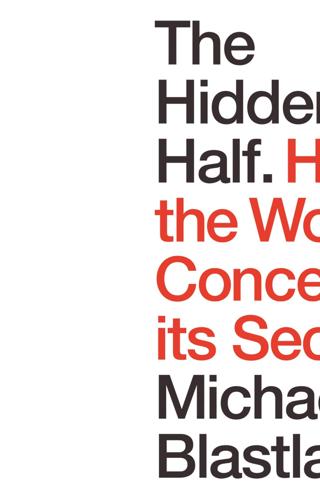
The Hidden Half: How the World Conceals Its Secrets
by
Michael Blastland
Published 3 Apr 2019
‘You put them into your aquarium and a year later you have hundreds,’ said Frank Lyko in 2018, after Eve’s offspring became briefly famous for scuttling free and over-running Madagascar.5 It was a headline writer’s dream: ‘Invasion of the mutant crayfish’. But the greater interest of these cloned creatures to science lay in an altogether different direction: in the marmorkrebs’ potential to help with that old and thorny question of the balance of forces between nature and nurture, as researchers realized they had stumbled on an ideal experimental subject. Ordinarily, it’s hard to tease apart why things turn out the way they do. If you fall ill with heart disease, there is a tangle of potential causes, genetic and environmental; the fault could be inherited, dietary, linked to exercise (too little/too much), stress, some combination, and so on.
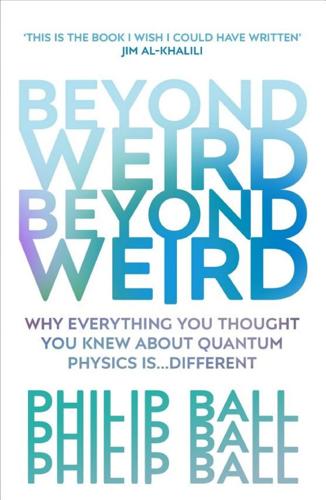
Beyond Weird
by
Philip Ball
Published 22 Mar 2018
Because the eye as a whole is not a perfectly efficient photon detector, at least 90% of the photons in these flashes will be absorbed before they reach the retina. This means that on average, only three photons hit the rod cells each time. What might happen, then, if the photons in the flashes are placed in a superposition of states? How will that affect what the experimental subjects ‘see’? Would it set up some kind of superposition in the nerve impulse from the rod cell to the brain? Might it even create a superposition of perceptions? It seems rather likely that, if the experiment is ever performed (that hasn’t happened yet), the result will be not some strange, novel state of mind but just more of the same, since the rod cell will act like any other macroscopic measurement device to transform a quantum state to a classical one, decohering it in (literally) a flash.

Learning to Think: A Memoir
by
Tracy King
Published 12 Mar 2025
Because a lot of terrible things happened to me and my family we were not well-equipped emotionally or financially to navigate. Margaret Atwood observed that a rat in a maze is free to go anywhere, as long as it stays inside the maze. One interpretation is that the rat believes it has freedom, unaware of its limitations or status as experimental subject, and is motivated only by the reward of food. The basic drive to survive in conditions outside its control. I suspect the rat would prefer to take its chances elsewhere, but I’ve yet to hear of an experiment that asks. The chaotic maze of my early life is not entirely figurative, but also a real one of red bricks and grey mortar, an experimental labyrinth of houses and graffitied walls with something ultimately monstrous at the centre.

The Gene: An Intimate History
by
Siddhartha Mukherjee
Published 16 May 2016
Between 1943 and 1945, more than a thousand twins were subjected to Mengele’s experiments.IV Egged on by his mentor, Otmar von Verschuer from Berlin, Mengele sought out twins for his studies by trawling through the ranks of incoming camp prisoners and shouting a phrase that would become etched into the memories of the camp dwellers: Zwillinge heraus (“Twins out”) or Zwillinge heraustreten (“Twins step out”). Yanked off the ramps, the twins were marked by special tattoos, housed in separate blocks, and systematically victimized by Mengele and his assistants (ironically, as experimental subjects, twins were also more likely to survive the camp than nontwin children, who were more casually exterminated). Mengele obsessively measured their body parts to compare genetic influences on growth. “There isn’t a piece of body that wasn’t measured and compared,” one twin recalled. “We were always sitting together—always nude.”
…
The notion that gender identity was not innate and was crafted through social performance and cultural mimicry (“you are who you act; nurture can overcome nature”) was in its full prime in that era—and Money was among its most ardent and most vocal proponents. Casting himself as the Henry Higgins of sexual transformation, Money advocated “sexual reassignment,” the reorientation of sexual identity through behavioral and hormonal therapy—a decades-long process invented by him that allowed his experimental subjects to emerge with their identities sanguinely switched. Based on Money’s advice, “Brenda” was dressed and treated as a girl. Her hair was grown long. She was given female dolls and a sewing machine. Her teachers and friends were never informed about the switch. Brenda had an identical twin—a boy named Brian—who was brought up as a male child.
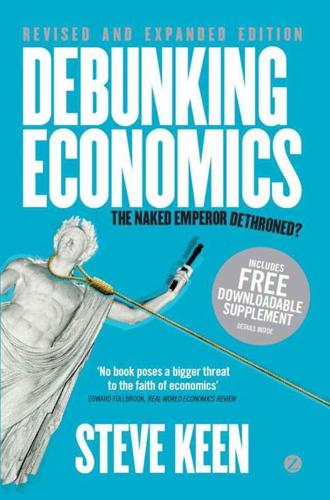
Debunking Economics - Revised, Expanded and Integrated Edition: The Naked Emperor Dethroned?
by
Steve Keen
Published 21 Sep 2011
A hypothetical example of using this procedure to provide a numerical measure of utility is shown in Table 15.1. TABLE 15.1 Von Neumann’s procedure for working out a numerical value for utility Consumer: Joan Cheng An essential element of this procedure was that it had to be repeatable, and for obvious reasons. If it were done just once, and the experimental subject was hungry, then he might be unwilling to take the risk of starving that the gamble implied, if the outcome were that he had to forgo the banana he already had. Von Neumann was emphatic about this: to make sense, his procedure had to be applied to repeatable experiments only: Probability has often been visualized as a subjective concept more or less in the nature of an estimation.
…
Therefore the square root of 2 can’t be the ratio of two integers, and it is therefore irrational. 2 This is that for changing all incomes and prices by the same factor to have no effect, ‘all other nominal magnitudes [including] assets and liabilities that are expressed in nominal terms)’ (Friedman 1969: 1) have to be altered by the same factor as well – and even this ignores the fact that debt amortization makes the effect of interest rates nonlinear. 3 One example of this is the paper by Caplan (2000) which attempts to explain findings which show that experimental subjects do not conform to the neoclassical definition of rational. Rather than accepting that the neoclassical definition of rationality may be flawed, Caplan proposes that irrationality may be a ‘good,’ which people ‘consume’ like any other, and then represents a rationality–irrationality trade-off using indifference curves.

Unhealthy societies: the afflictions of inequality
by
Richard G. Wilkinson
Published 19 Nov 1996
Instead of an introspective process by which we reach into an inner source to experience the truth of what we are feeling, it was found that emotions were distinguished from each other largely by 146 Social cohesion and social conflict cognitive processes involving an interpretation of our situation. The emotional experience of a given state of physiological arousal was found to depend on the perception of situational clues. To demonstrate the cognitive and situational contribution to the experience of an emotion depended on manipulating the situation of experimental subjects so as to induce them to ‘misattribute’ their state of arousal from its initial cognitive source. Given some deceptive experimental manipulation of the environment, it was shown that physical arousal caused initially by fear, by humour or annoyance, by adrenaline injections or even by exercise, could be experienced as quite a different emotion and then give rise to behaviour expressive of a different emotion.
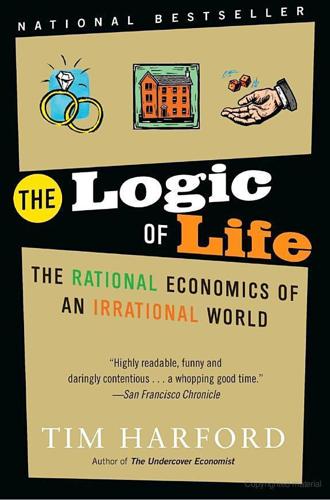
The Logic of Life: The Rational Economics of an Irrational World
by
Tim Harford
Published 1 Jan 2008
There are some more-sophisticated economic models of rational choice in which both higher wages and harder work are rational as a response to turnover or imperfect information. But they are not what was being tested in the laboratory.) List realized that the laboratory experiments were not an especially realistic setting for this demonstration of irrationality. “Wages” were being offered in exchange for “work,” but all that was really happening was that experimental subjects were ticking boxes on a questionnaire and being paid small amounts based on their answers. It was just a laboratory-based game of “let’s pretend.” List and his colleague Uri Gneezy extended this artificial experimental work to real life. They advertised for and hired people to do actual jobs, such as data entry or door-to-door collection for a charity.

Bastard Tongues: A Trailblazing Linguist Finds Clues to Our Common Humanity in the World's Lowliest Languages
by
Derek Bickerton
Published 4 Mar 2008
Over our campfire in Lanai, our pakalolo-induced visions had not included anything as mundane as hardware. But Tom and 1 were both serious players; once we were committ~d we would take it anywhe~e it had 116 BASTARD TONGUES to be taken. We would be responsible for the lives of thirty~odd people, experimental subjects and grad students. That meant we had to be able to stay in contact with someplace that had emer gency services, hospitals, helicopters, search-and-rescue teams. And we had to have a fast boat, nothing fancy, just an overpowered shell that would get us from A to B in a minimum of time. Plus that was said and done on the island had to be recorded, and visually.
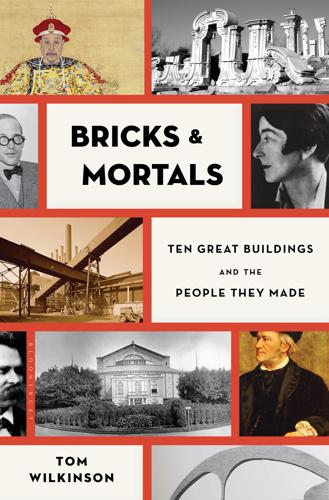
Bricks & Mortals: Ten Great Buildings and the People They Made
by
Tom Wilkinson
Published 21 Jul 2014
Although this might seem admirably unpatronising, the reason for the hands-off approach was eugenic: only those whose genes deserved to survive – those who took responsibility for themselves – would benefit. The transparency of the building was also necessary so that the doctors could observe their experimental subjects, ‘looking through the glass walls of the Centre, as the cytologist may under his microscope watch living cells grow’.4 The Finsbury Health Centre was designed with very different aims in mind. Peckham was not a slum, and its residents were mostly tradesmen and skilled labourers, but Finsbury was a much poorer area.
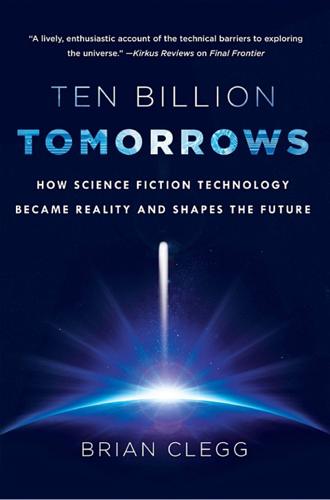
Ten Billion Tomorrows: How Science Fiction Technology Became Reality and Shapes the Future
by
Brian Clegg
Published 8 Dec 2015
In 2006, two papers published in the journal Nature gave hope for a much wider use of neuroprosthetics to help those with damage to the nervous system regain the ability to interact with their environment. In the first, John Donoghue and colleagues at Brown University described how they implanted an array of ninety-six electrodes into the precentral gyrus area of the primary motor cortex, the part of the brain responsible for movement. The experimental subject, Matt Nagle, was a man whose spinal cord had been entirely severed in an accident leaving him with no control over his limbs. Even though the experiment took place three years after Nagle’s injury, he was able to “think” hand movement and produce signals through the electrodes that were able to move a cursor on a screen, to control simulated e-mail, and to operate connected devices such as a TV.

The Wood Age: How One Material Shaped the Whole of Human History
by
Roland Ennos
Published 18 Feb 2021
Adam even filmed a few occasions when orangutans were bouncing their way along a branch, something that Susannah was able to replicate more easily with captive orangutans at Chester Zoo, England, filming them walking along purpose-built beams. Susannah and her research assistant Sam Coward also showed that holding on to branches could help an animal overcome another major difficulty of evolving bipedalism: keeping its balance. This time they used humans as a model species. Experimental subjects had to balance on a springboard while an image of trees swaying slightly in the wind was projected around them. Half the time the people had a flexible pole to hang on to, mimicking a handhold on a branch, while at other times they had no handhold. The people were filmed, and the neuronal activity in their thigh muscles was measured when the springboard was perturbed.

Rogue State: A Guide to the World's Only Superpower
by
William Blum
Published 31 Mar 2002
A remarkable variety of government programs, either formally, or in effect, using soldiers as guinea pigs—marched to nuclear explosion sites, with pilots then sent through the mushroom clouds; subjected to chemical and biological weapons experiments; radiation experiments; behavior modification experiments that washed their brains with LSD; exposure to the dioxin of Agent Orange in Korea and Vietnam...the list goes on...literally millions of experimental subjects, seldom given a choice or adequate information, often with disastrous effects to their physical and/or mental health, rarely with proper medical care or even monitoring,5 The moral of this little slice of history is simple: If the United States government does not care about the health and welfare of its own soldiers, if our leaders are not moved by the prolonged pain and suffering of the wretched warriors enlisted to fight the empire's wars, how can it be argued, how can it be believed, that they care about foreign peoples?
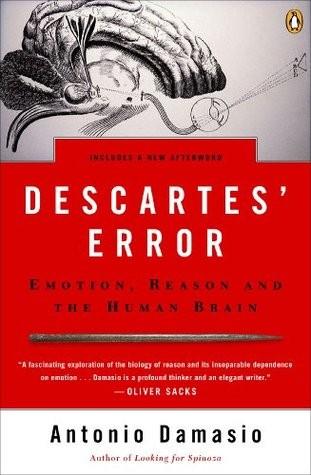
Descartes' Error: Emotion, Reason and the Human Brain
by
António R. Damásio
Published 1 Jan 1994
Some evidence comes from neuropsychological studies correlating loss of feeling with damage to the brain regions necessary to represent body states (see chapter 5), but studies conducted in normal individuals are also telling in this respect as well, specifically those by Paul Ekman.14 When he gave normal experimental subjects instructions on how to move their facial muscles, in effect “composing” a specific emotional expression on the subjects’ faces without their knowing his purpose, the result was that the subjects experienced a feeling appropriate to the expression. For instance, a roughly and incompletely composed happy facial expression led to the subjects’ experiencing “happiness,” an angry facial expression to their experiencing “anger,” and so on.
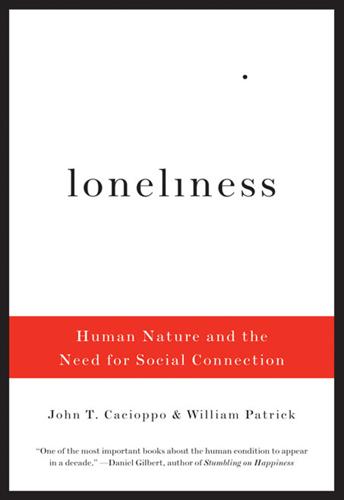
Loneliness: Human Nature and the Need for Social Connection
by
John T. Cacioppo
Published 9 Aug 2009
A controlled experiment means studying people in a situation in which you can hold certain variables constant while you manipulate some other variable. Such an experiment also requires that the participants be randomly assigned to different levels of the manipulation taking place. To manipulate levels of perceived loneliness, we enlisted David Spiegel, a psychiatrist at Stanford University, to hypnotize our experimental subjects. Using precisely worded scripts, we guided our hypnotized student volunteers to re-experience moments in their lives that summoned up either profound feelings of loneliness or profound feelings of social connectedness. With some individuals we induced loneliness in their first hypnotic state and social connectedness in their second; with the others the order was reversed.
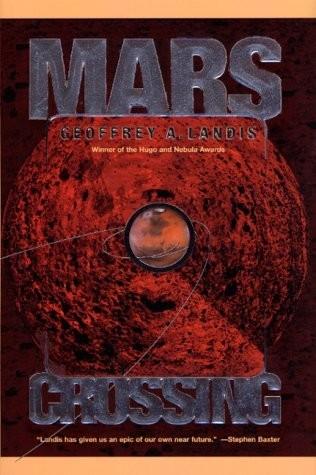
Mars Crossing
by
Geoffrey A. Landis
Published 15 Jan 2000
She was so excited that she barely noticed the launch, and only when she saw her notepad floating out of her pocket did she realize, I'm really here; I'm in zero gravity. I made it. Tana's billet was to be the blue-shift medical officer, and in her spare time, a biology research technician and an experimental subject. The bio labs always needed both technicians and subjects. She liked being on space station. Ft was crowded and noisy and confusing. It was remarkably easy to get confused, and even—despite its small size—momentarily lost. The familiar route from one module to another that you've memorized as a left turn would, if you happen to be flipped, mutate into a right turn, or even an up or down turn.

Forty Signs of Rain
by
Kim Stanley Robinson
Published 29 May 2004
Thus the idiocy of business management theory in our time.” “I’ll send him an e-mail,” Leo decided. So Leo sent Derek an e-mail concerning what Brian and Marta persisted in calling the exploding mice problem. Derek (according to reports they heard later) swelled up like one of their experimental subjects. It appeared he had been IVed with two quarts of genetically engineered righteous indignation. “It’s in the literature!” he was reported to have shouted at Dr. Sam Houston, his vice president in charge of research and development. “It was in The Journal of Immunology, there were two papers that were peer-reviewed, they got a patent for it!
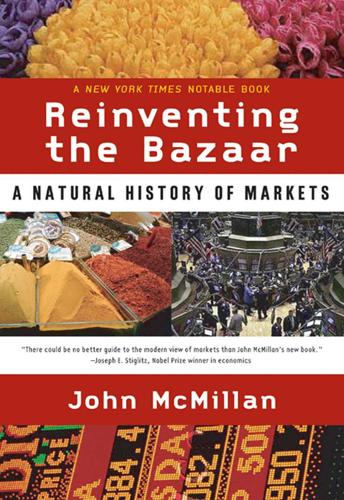
Reinventing the Bazaar: A Natural History of Markets
by
John McMillan
Published 1 Jan 2002
With a price system, unlike under central planning, no central authority needs to know when there is an imbalance of supply and demand. Evidence that price movements can guide an economy to a stable outcome comes from experimental economics, in research done by Vernon Smith and others.12 An economy is simulated in the laboratory, with experimental subjects, usually undergraduate students, being put in the role of consumers and firms (and to get them to take their decision-making seriously, they are offered cash payments based on the outcomes of their decisions). Provided the experimental market’s rules are well designed, prices quickly settle down at their theoretical equilibrium levels (that is, where supply equals demand), even though no one in the economy knows enough to be able to figure out what those prices should be.
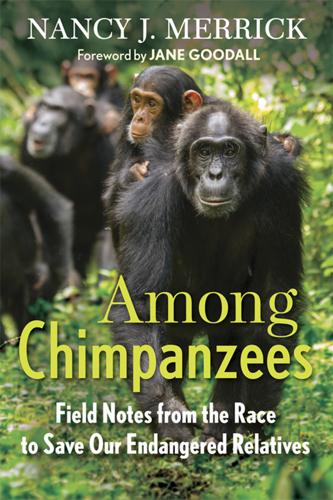
Among Chimpanzees
by
Nancy J. Merrick
But all this can be of little consequence to a chimp named Tom, who was finally retired from research after more than 360 knock-downs (general anesthesia) and inoculation with the AIDS virus. Hundreds of chimps have been used over the years for cancer research, but here again, other animals—often mice—have proven to be superior experimental subjects, not only because the types of tumors they develop more closely resemble those of humans but also because they are far more plentiful and far less costly to conduct research on. Still, a number of entrenched research scientists claim that chimpanzees are absolutely key to future gains.7 So, what happens when other scientists examine the literature to see whether experimentation on chimps is really essential, especially to emerging new medical therapies?
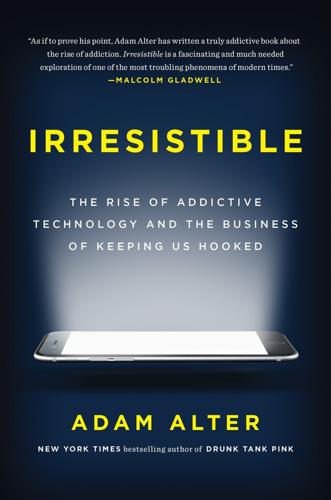
Irresistible: The Rise of Addictive Technology and the Business of Keeping Us Hooked
by
Adam L. Alter
Published 15 Feb 2017
“I went to the computer store to see what they had and the guy said, ‘Here try this. It’s just come in.’ Tetris was the perfect game, it was simple to learn, you had to practice to get good and there was a good learning curve.” So Haier bought some copies of Tetris for his lab and watched as his experimental subjects played the game. He did find neurological changes with experience—parts of the brain thickened and brain activity declined, suggesting experts’ brains worked more efficiently—but more relevant here, he found that his subjects relished playing the game. They signed up to play for forty-five minutes a day, five days a week, for up to eight weeks.
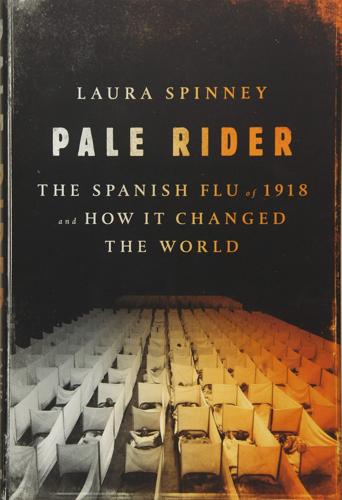
Pale Rider: The Spanish Flu of 1918 and How It Changed the World
by
Laura Spinney
Published 31 May 2017
For all their bravery, the credibility of these scientists’ findings is tainted. The experiments were conducted during the pandemic, at a time when it would have been impossible for them to ensure that their laboratories were free of contamination by the ubiquitous flu virus, so it is hard to know by which route their experimental subjects received the infection. Anyone paying attention will have noticed that Dujarric’s and Nicolle’s and Lebailly’s results contradict each other: Dujarric thought that he had given himself flu via an injection of filtrate into his blood, while the pair in Tunis ruled out the blood as a transmission route.
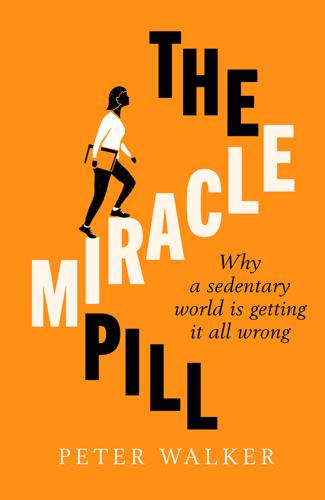
The Miracle Pill
by
Peter Walker
Published 21 Jan 2021
The joy of tech As you will have gathered by now, I’ve spent a long time thinking about physical activity, as well as talking to many people who think about it even more. And so, much as I have stressed several times that this is not a book of advice, it seems fair to use this final chapter to set out what I’ve learned along the way in these months as researcher, writer and occasional experimental subject/guinea pig. One personal lesson is that despite an initial scepticism about the use of high-tech gadgets in monitoring and scrutinising activity levels, I in fact found they can be surprisingly useful to help you maintain a movement regime – or at least they can if you find the right device.
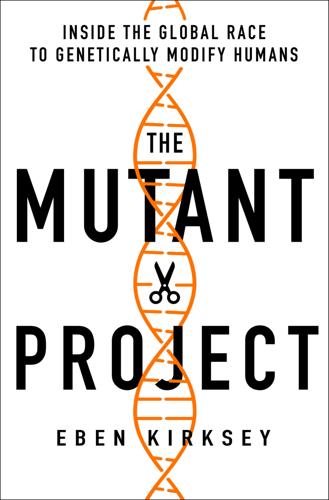
The Mutant Project: Inside the Global Race to Genetically Modify Humans
by
Eben Kirksey
Published 10 Nov 2020
He’s staff followed up with phone calls. They zeroed in on twenty eligible couples who seemed like the best fit. Then two researchers, an embryologist named Dr. Jinzhou Qin and a postdoctoral researcher who studied monkeys, packed their bags and started traveling around China. They visited the potential experimental subjects in their own homes. Travelling from major cities along China’s eastern seaboard to metropolises in the heartland, they combed the country—seeking out people who seemed right for the study. They even went to Xinjiang, the remote Uyghur autonomous region where China was testing out some of the most extreme surveillance and policing programs in the world.
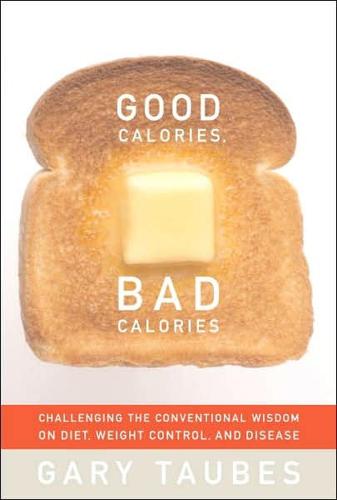
Good Calories, Bad Calories: Challenging the Conventional Wisdom on Diet, Weight Control, and Disease
by
Gary Taubes
Published 25 Sep 2007
In 1952, however, Laurance Kinsell, director of the Institute for Metabolic Research at the Highland–Alameda County Hospital in Oakland, California, demonstrated that vegetable oil will decrease the amount of cholesterol circulating in our blood, and animal fats will raise it. That same year, J. J. Groen of the Netherlands reported that cholesterol levels were independent of the total amount of fat consumed: cholesterol levels in his experimental subjects were lowest on a vegetarian diet with a high fat content, he noted, and highest on an animal-fat diet that had less total fat. Keys eventually accepted that animal fats tend to raise cholesterol and vegetable fats to lower it, only after he managed to replicate Groen’s finding with his schizophrenic patients in Minnesota.
…
In effect, glucose regulates how much vitamin C is taken up by the cells, according to the University of Massachusetts nutritionist John Cunningham. If we increase blood-sugar levels, the cellular uptake of vitamin C will drop accordingly. Glucose also impairs the reabsorption of vitamin C by the kidney, and so, the higher the blood sugar, the more vitamin C will be lost in the urine. Infusing insulin into experimental subjects has been shown to cause a “marked fall” in vitamin-C levels in the circulation. In other words, there is significant reason to believe that the key factor determining the level of vitamin C in our cells and tissues is not how much or little we happen to be consuming in our diet, but whether the starches and refined carbohydrates in our diet serve to flush vitamin C out of our system, while simultaneously inhibiting the use of what vitamin C we do have.
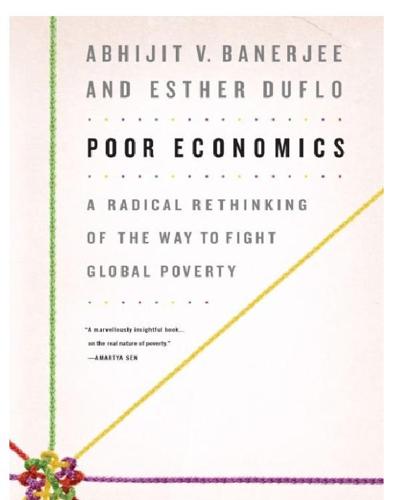
Poor Economics: A Radical Rethinking of the Way to Fight Global Poverty
by
Abhijit Banerjee
and
Esther Duflo
Published 25 Apr 2011
This is important, because it turns out that cortisol directly impairs cognitive and decisionmaking ability: The stress-induced release of cortisol affects brain areas such as the prefrontal cortex, the amygdala, and the hippocampus, which are important in cognitive functioning; in particular, the prefrontal cortex is important in suppression of impulsive responses. It is therefore no surprise that when experimental subjects are artificially put under stressful conditions in the laboratory, they are less likely to make the economically rational decision when faced with choosing among different alternatives.8 THE HEDGE What can the poor do to cope with these risks? A natural reaction when faced with a drop in wages or earnings is to try to work more.
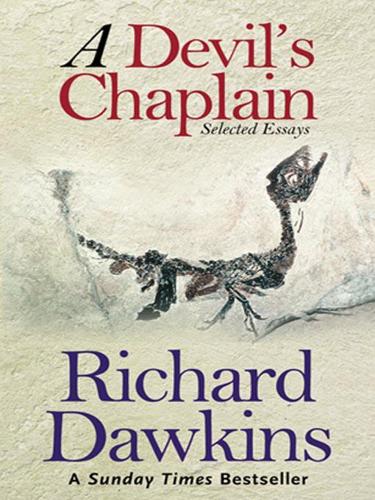
A Devil's Chaplain: Selected Writings
by
Richard Dawkins
Published 1 Jan 2004
Having given their consent, 1000 patients will be separated into 500 experimentals (who will receive the homeopathic dose) and 500 controls (who will not). Bending over backwards to respect the ‘holistic’ principle that every individual must be treated as an individual, we shall not insist on giving all experimental subjects the same dose. Nothing so crude. Instead, every patient in the trial shall be examined by a certified homeopath, and an individually tailored therapy prescribed. The different patients need not even receive the same homeopathic substance. But now comes the all-important double-blind randomization.

Predictive Analytics: The Power to Predict Who Will Click, Buy, Lie, or Die
by
Eric Siegel
Published 19 Feb 2013
Facebook conducts controlled experiments to see how changes to the rules driving which friends’ posts get displayed influence your engagement and usage of the product. I tested titles for this book, following in the footsteps of SuperCrunchers and The 4-Hour Workweek. Placed as ads on Google Adwords, Predictive Analytics, when displayed on tens of thousands of screens of unsuspecting experimental subjects across the country, was clicked almost twice as often as Geek Prophecies, and also beat out I Knew You Were Going to Do That and Clairvoyant Computers, plus the six remaining book titles that I also entered into this contest. It was convenient that the field’s very name came out as the top contender, an unquestionably fitting title for this book.
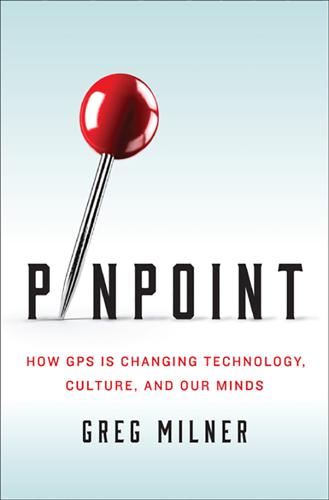
Pinpoint: How GPS Is Changing Our World
by
Greg Milner
Published 4 May 2016
A historical and technological survey of GPS published in 2002 summarized the relationship between the two technologies/concepts: “GPS receivers without GIS have no knowledge of the real world.” This knowledge runs deep. Street View ultimately taught me nothing definitive about Fallen Man, but Street View images are perhaps thicker with real information than we realize. An MIT Media Lab study of “perceptual inequality” showed experimental subjects pairs of images selected randomly from a set of hundreds of street-level images of New York City, Boston, and two cities in Austria, Salzburg and Linz. For each pair, subjects answered the questions “Which place looks safer?” and “Which place looks more upper-class?” The study found that both positive and negative impressions were more clustered around geographic regions in the American cities, and more widely dispersed in the Austrian cities, suggesting that the cityscapes of Boston and New York City exhibit starker inequality.
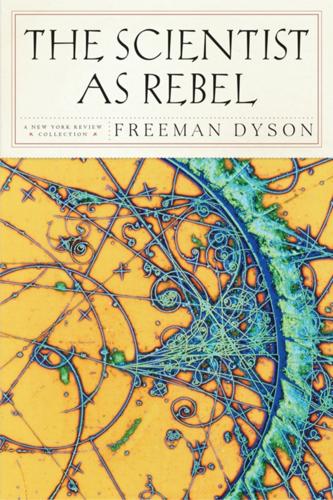
The Scientist as Rebel
by
Freeman Dyson
Published 1 Jan 2006
True believers in telepathy were outraged because I considered its existence to be unproved. This is a question that is of deep concern to many readers. The most interesting response came from Rupert Sheldrake, who sent me papers describing his experiments studying telepathy in dogs. Dogs have several advantages over humans as experimental subjects. They do not get bored, they do not cheat, and they do not have any interest in the outcome of the experiment. Sheldrake’s experiments contradict my statement that telepathy cannot be studied scientifically. Unfortunately, the experiments were conducted by humans, not by dogs, and effects of human bias and selective reporting could not be altogether eliminated.

Irrational Exuberance: With a New Preface by the Author
by
Robert J. Shiller
Published 15 Feb 2000
Thus the Asch and Milgram experiments give us a different perspective on the overconfidence phenomenon: people are respectful of authorities in formulating the opinions about which they will later be so overconfident, transferring their confidence in authorities to their own judgments based upon them. Given the kind of behavior observed by Asch and Milgram, it is not at all surprising that many people are accepting of the perceived authority of others on such matters as stock market valuation. Most must certainly trust their own judgment in this area even less than the experimental subjects trusted the evidence of their own eyes about the lengths of lines on cards or the pain and suffering that a person sitting next to them was experiencing. Economic Theories of Herd Behavior and Information Cascades Even completely rational people can participate in herd behavior when they take into account the judgments of others, and even if they know that everyone else is behaving in a herdlike manner.

Mindware: Tools for Smart Thinking
by
Richard E. Nisbett
Published 17 Aug 2015
Cognitive science didn’t replace all learning theory findings, or even the explanations behind the findings. Rather, it just established a body of work that couldn’t have been produced within the learning theory framework. Science and Culture Bertrand Russell once observed that scientists studying the problem-solving behavior of animals saw in their experimental subjects the national characteristics of the scientists themselves. The pragmatic Americans and the theoretically inclined Germans had very different understandings of what was happening. Animals studied by Americans rush about frantically, with an incredible display of hustle and pep, and at last achieve the desired result by chance.
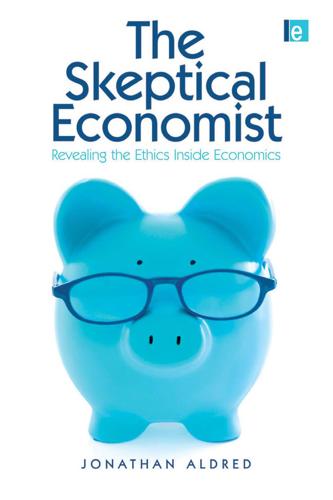
The Skeptical Economist: Revealing the Ethics Inside Economics
by
Jonathan Aldred
Published 1 Jan 2009
Left-siders purposely given the flu virus were less likely to get ill, too. All this evidence seems to correlate brain activity with positive/negative feelings and behaviours, and these in turn are correlated with self-reported happiness, but is there a more direct link? At least one widely discussed experiment suggests there is. All the experimental subjects — victims might be a better term — had a very hot pad applied to one of their legs. The pad was exactly the same temperature for everyone, but people gave very different reports of the level of pain. Nevertheless, the differing reports were highly correlated with brain activity, again suggesting that such reports are meaningful.6 Still, this experiment might seem worrying for the defenders of happiness surveys because it demonstrates so clearly that the same objective stimulus is described differently by different people.

The Constitution of Knowledge: A Defense of Truth
by
Jonathan Rauch
Published 21 Jun 2021
The lines were drawn to make the answer obvious: one of the three choices matched the target line perfectly; the other two were not even close. But seven of the eight people in the room were accomplices of the experimenter who all deliberately gave the same wrong answer, with six of them answering before the real experimental subject got a turn. In the trials, about three-fourths of subjects conformed to the group at least once, despite the clear evidence of their own eyes. About a third went along with the group in a majority of trials. (Whereas in a control-group setting, where answers were not rigged, subjects had no trouble getting the answer right.)

Endure: Mind, Body, and the Curiously Elastic Limits of Human Performance
by
Alex Hutchinson
Published 6 Feb 2018
“it may well have been my struggles and failures”: A. V. Hill, Muscular Activity (Baltimore: Williams & Wilkins, 1925). 19. an eighty-five-meter grass loop in Hill’s garden: In Hill’s 1923 QMJ paper, he describes the experiments taking place “around a circular grass track 92½ yds. (84½ metres) in circumference.” Hugh Long, a coauthor and experimental subject in Hill’s Manchester studies, recalls “running up and down stairs, or round the professor’s garden while at intervals healthy samples of blood were withdrawn from my arms”; quoted in “Archibald Vivian Hill. 26 September 1886–3 June 1977,” Biographical Memoirs of Fellows of the Royal Society 24 (1978): 71–149. 20.
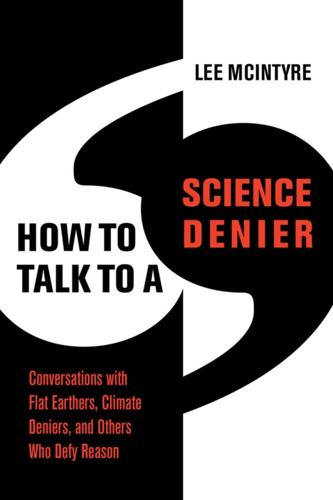
How to Talk to a Science Denier: Conversations With Flat Earthers, Climate Deniers, and Others Who Defy Reason
by
Lee McIntyre
Published 14 Sep 2021
What if the hold-up is that they are engaging in identity-protective cognition? To test this, Kahan performed an experiment on assessing the effectiveness of a new (fictitious) skin cream. To my knowledge, there is not and never has been any sort of science denial (or identity-based reasoning) on the basis of skin cream. Kahan set up the experiment with one thousand experimental subjects, who were first surveyed to assess their political beliefs, then given a set of fabricated data (see figure 2.1).62 Figure 2.1 Fabricated data used as stimuli in an experiment by Kahan et al., “Motivated Numeracy and Enlightened Self-Government” (2013). After doing a little math, we have all of the information we need to see whether the skin cream is effective on a rash.

The Dream Machine: J.C.R. Licklider and the Revolution That Made Computing Personal
by
M. Mitchell Waldrop
Published 14 Apr 2001
It turns out that you can understand what's being said much more easily if the words are selected from a very limited vocabulary, so there can be no confusion (this is why fighter jocks go in for that clipped alphafoxtrot-bravo jargon). Shortly after Shannon's paper came out, Miller says, he and two of his students decided to measure this effect in terms of information theory. They found that their experimental subjects could detect the difference between, say, "boy" and "heel" at quite high noise levels: it was just an either-or choice, requiring the perception of only one bit of information. But as they added more words to the list of possibilities-that is, as they demanded the perception of more and more bits of information-it rapidly became impossible for their subjects to detect the differences.
…
That introductory article he'd published with Fred Frick in 1949 had made information theory into something of a fad in psychology, espe- cially among the rising generation. And as these young researchers applied the theory to more and more aspects of human perception, they found more and more evidence for the same kind of "channel capacity" that Miller had found in the perception of words. Their experimental subjects could distinguish very well between different musical pitches, say, or different positions of points on a line, or even different levels of saltiness in a taste of water-if there were only two al- ternatives. Salty-not salty and so on were really just yes-no choices, meaning that the subjects had to perceive only one bit of information.

A Random Walk Down Wall Street: The Time-Tested Strategy for Successful Investing
by
Burton G. Malkiel
Published 10 Jan 2011
More than most other groups, investors tend to exaggerate their own skill and deny the role of chance. They overestimate their own knowledge, underestimate the risks involved, and exaggerate their ability to control events. Kahneman’s tests show how well investors’ probability judgments are calibrated by asking experimental subjects for confidence intervals. He asks a question such as the following: What is your best estimate of the value of the Dow Jones one month from today? Next pick a high value, such that you are 99% sure (but not absolutely sure) that the Dow Jones a month from today will be lower than that value.
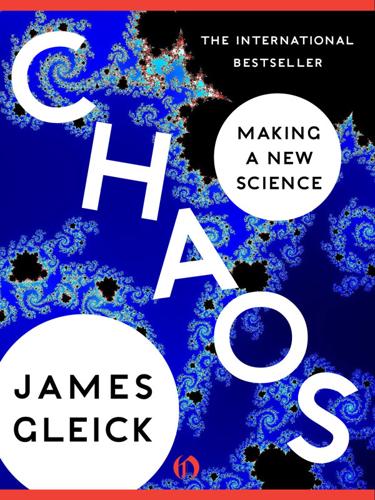
Chaos: Making a New Science
by
James Gleick
Published 18 Oct 2011
WINFREE TOLD THE STORY of an early researcher, George Mines, who in 1914 was twenty-eight years old. In his laboratory at McGill University in Montreal, Mines made a small device capable of delivering small, precisely regulated electrical impulses to the heart. “When Mines decided it was time to begin work with human beings, he chose the most readily available experimental subject: himself,” Winfree wrote. “At about six o’clock that evening, a janitor, thinking it was unusually quiet in the laboratory, entered the room. Mines was lying under the laboratory bench surrounded by twisted electrical equipment. A broken mechanism was attached to his chest over the heart and a piece of apparatus nearby was still recording the faltering heartbeat.
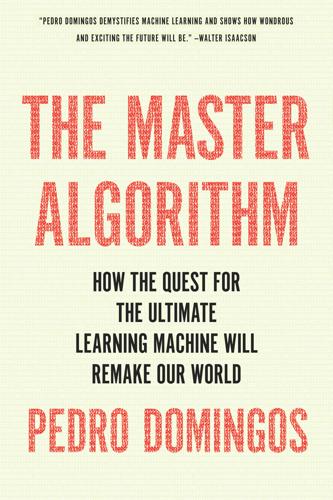
The Master Algorithm: How the Quest for the Ultimate Learning Machine Will Remake Our World
by
Pedro Domingos
Published 21 Sep 2015
Newell and Rosenbloom hypothesized that a similar process is at work in all skill acquisition, not just chess. In perception and memory, a chunk is just a symbol that stands for a pattern of other symbols, like AI stands for artificial intelligence. Newell and Rosenbloom adapted this notion to the theory of problem solving that Newell and Simon had developed earlier. Newell and Simon asked experimental subjects to solve problems—for example, derive one mathematical formula from another on the blackboard—while narrating aloud how they were going about it. They found that humans solve problems by decomposing them into subproblems, subsubproblems, and so on and systematically reducing the differences between the initial state (the first formula, say) and the goal state (the second formula).

Atrocity Archives
by
Stross, Charles
Published 13 Jan 2004
(By nuclear structure he is of course referring to the core of the atom, as deduced by our experiments last year.) Then he explained how he was going to seat a gorgon on one side of a very large device he calls a cloud chamber, with big magnetic coils positioned above and below it, to see if there is some other physical phenomenon at work. I can now reveal the effects of our team's experimentation. Subject C is cooperating in a most professional manner, but despite Ernest's greatest efforts the cloud chamber bore no fruit--she can sit with her face pressed up against the glass window on one side, and blow a chicken's egg to flinders of red-hot pumice on the target stand, but no ionization trail appears in the saturated vapour of the chamber.
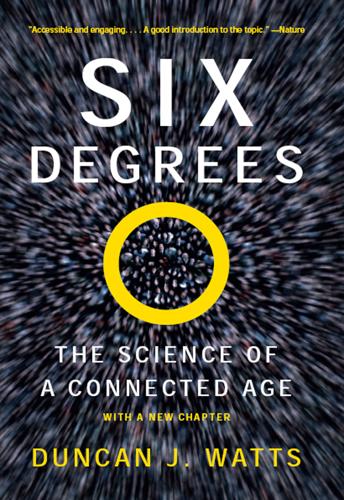
Six Degrees: The Science of a Connected Age
by
Duncan J. Watts
Published 1 Feb 2003
THE ROAD LESS TRAVELED AT THE TIME WE STUMBLED ONTO OUR EVENTUAL PROJECT, WE were studying, of all things, crickets. It sounds silly, but because this particular species of cricket—the snowy tree cricket—chirps in such a regular fashion and because (unlike pacemaker cells or neurons) it is such a well-behaved experimental subject, it is virtually an ideal specimen of biological oscillator. We were trying to test a deep mathematical hypothesis, originally proposed by Winfree, that only certain types of oscillators can synchronize. Since snowy tree crickets are extremely good at synchronizing, it seemed a natural step to determine experimentally what kind of oscillators they were and therefore whether or not the theoretical predictions were true.

Miracle Cure
by
William Rosen
Published 14 Apr 2017
Pharmaceutical companies would be obliged to share information about the proposed manufacturing process, and about the chemical mechanism by which they believed the new drug offered a therapeutic benefit. And, before any human tests could begin, applicants would have to guarantee that an independent committee at each institution where the drug was to be studied would certify that the study was likely to have more benefits than risks; that any distress for experimental subjects would be minimized; and that all participants gave what was just starting to be known as “informed consent.”* The truly radical transformation, however, was what the FDA would demand of the studies themselves. Kelsey’s new system specified three sequential investigative stages for any new drug.
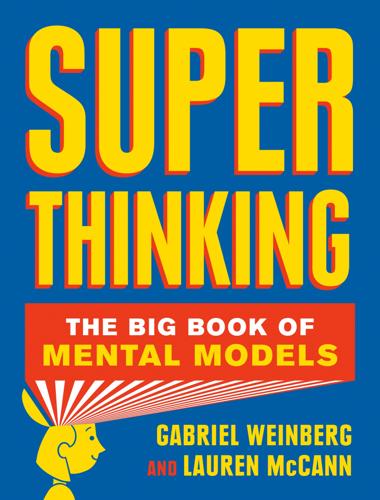
Super Thinking: The Big Book of Mental Models
by
Gabriel Weinberg
and
Lauren McCann
Published 17 Jun 2019
Hindsight bias arises in many other situations: judges weighing evidence in court cases, historians analyzing past events, and physicians assessing earlier clinical decisions. For example, in negligence cases, for guilt to be found, it must be shown that the person who committed the negligent act would have known that their actions would endanger others. When experimental subjects are presented with various negligence scenarios, they typically rate an outcome as more foreseeable the worse the outcome is, even when the negligent act is the same. In other words, the worse the outcome, the worse the hindsight bias. In the context of leadership and learning new roles, hindsight bias can keep you from learning from past events.
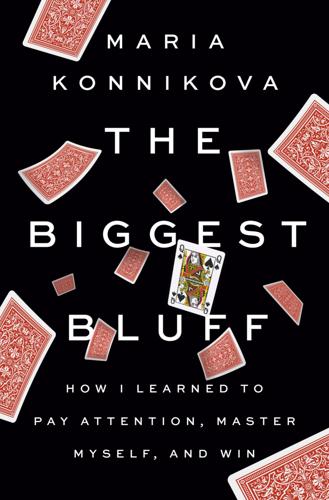
The Biggest Bluff: How I Learned to Pay Attention, Master Myself, and Win
by
Maria Konnikova
Published 22 Jun 2020
It’s like that damned timer ticking down on my first glimpse of online poker—and while I realized how much decisions suffer under time pressure when the timer was in my face, I somehow failed to realize that I’d made a big red blinking timer in my head leading up to the Main. No wonder I couldn’t think straight. I was my very own experimental subject. So we make a plan where I don’t go more than three weeks without playing—but I make sure to recharge fully in between. That, too, is crucial for learning the game. The recharging is also a part of playing well. It’s funny that it’s taken a mental coach to help me see that. I’ve always been a proponent of stepping back during any endeavor.

Tripping on Utopia: Margaret Mead, the Cold War, and the Troubled Birth of Psychedelic Science
by
Benjamin Breen
Published 16 Jan 2024
The note, he argues, may be evidence that Kees had somehow become involved in George Hunter White’s Midnight Climax operation. This possibility cannot be ruled out. Kees, after all, moved in the same underworld—a late-night San Francisco of strippers, amphetamines, and Barbary Coast bars—that White and Hamilton trawled for unwitting experimental subjects. An alternative (or additional) source for Kees’s knowledge, however, was Gregory Bateson himself. Bateson, after all, was in direct contact with Hamilton, Abramson, and White in these years. It seems likely that part of his fear of militarized science derived from hints of MKULTRA projects dropped by these men.
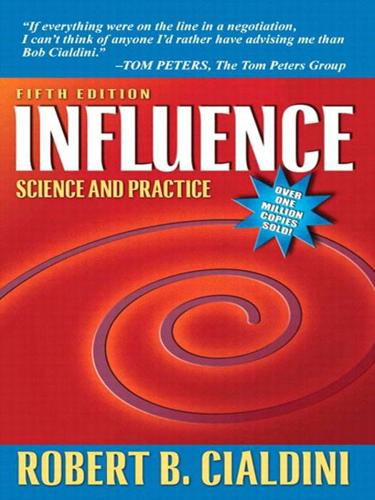
Influence: Science and Practice
by
Robert B. Cialdini
Published 1 Jan 1984
The drive to be (and look) consistent constitutes a highly potent weapon of social influence, often causing us to act in ways that are clearly contrary to our own best interest. Consider what happened when researchers staged thefts on a New York City beach to see if onlookers would risk personal harm to halt the crime. In the study, an accomplice of the researchers would put a beach blanket down five feet from the blanket of a randomly chosen individual—the experimental subject. After several minutes of relaxing on the blanket and listening to music from a portable radio, the accomplice would stand up and leave the blanket to stroll down the beach. Soon thereafter, a researcher, pretending to be a thief, would approach, grab the radio, and try to hurry away with it.
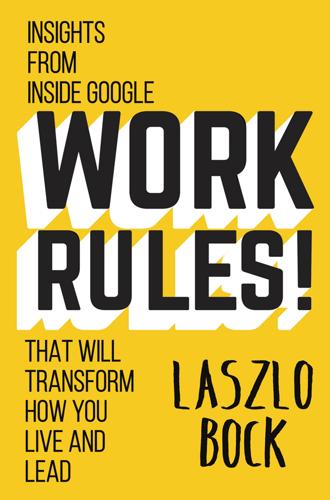
Work Rules!: Insights From Inside Google That Will Transform How You Live and Lead
by
Laszlo Bock
Published 31 Mar 2015
Members of the control group spent about three and a half minutes (213 and 205 seconds) on the puzzle during the first two unsupervised windows, and four minutes (241 seconds) in the last window. Experimental-group members spent an average of four minutes (248 seconds) on the puzzle in the first window. Before the second hour started, experimental subjects were told they would receive a dollar for every puzzle they solved. With the added incentive, they spent more than five minutes (313 seconds) on the puzzle, 26 percent more time than in their first hour. Before the third hour, they were told that there was only enough money for one round of payment, so they wouldn’t be paid any more.
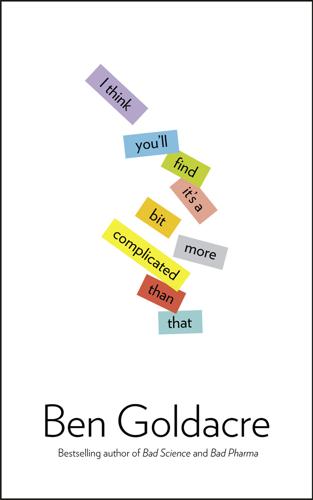
I Think You'll Find It's a Bit More Complicated Than That
by
Ben Goldacre
Published 22 Oct 2014
Solomon Asch’s legendary studies from the 1950s on conformity are among my favourite experiments of all time. Some people in a room are asked to judge the length of a line; all but one are stooges, and they unanimously assert what is obviously an incorrect answer. The one true, unsuspecting experimental subject conforms to the majority view, despite knowing that it’s incorrect, about a third of the time. This is a chilling result that feels just right, and over the past half-century researchers have replicated the study over a hundred times in seventeen countries, allowing hints of patterns to be spotted in the results.
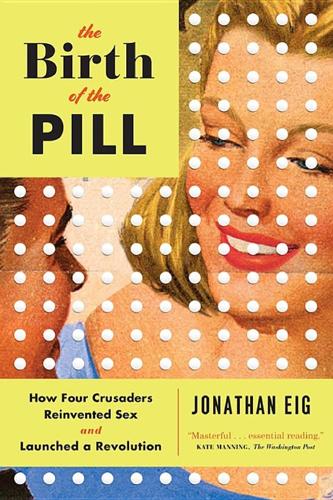
The Birth of the Pill: How Four Crusaders Reinvented Sex and Launched a Revolution
by
Jonathan Eig
Published 12 Oct 2014
Whether this was directly a result of the pills or simply the anger she felt at suffering so many physical symptoms, she wasn’t sure. When she quit the pill after ten days, Blake went to see her doctor to make sure there was nothing wrong with her. “I shall forward you the bill,” she informed Pincus, “since, though I am glad to be an experimental subject for you, I don’t think I should lose money on the deal.” Blake’s letter might have served as a warning, but Pincus was still not terribly worried. Side effects were called side effects for a reason: they were not the main concern. The priority was to make sure no one taking the pill got pregnant.
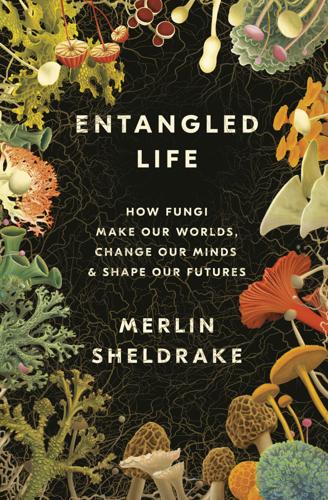
Entangled Life: How Fungi Make Our Worlds, Change Our Minds & Shape Our Futures
by
Merlin Sheldrake
Published 11 May 2020
Some evenings we made snacks from spores, fragments of cracker, and sour cream: tiny crumbs of mycorrhizal caviar that we had to prepare under the microscope and tweezer into our mouths. We didn’t learn much, but that wasn’t the point. It was an exercise that helped us to keep our balance as we careened from the small to the large. These were rare moments of unmediated contact with our experimental subjects, goofs to remind us that mycorrhizal fungi aren’t mechanical schematic entities—one can’t eat a machine or a concept—but living organisms engaged in lives that we still struggle to understand. * * * — PLANTS REMAIN THE easiest way in. It is through plants that the mycorrhizal extravaganza belowground most commonly erupts into everyday human life.

A Random Walk Down Wall Street: The Time-Tested Strategy for Successful Investing (Eleventh Edition)
by
Burton G. Malkiel
Published 5 Jan 2015
More than most other groups, investors tend to exaggerate their own skill and deny the role of chance. They overestimate their own knowledge, underestimate the risks involved, and exaggerate their ability to control events. Kahneman’s tests show how well investors’ probability judgments are calibrated by asking experimental subjects for confidence intervals. He asks a question such as the following: What is your best estimate of the value of the Dow Jones one month from today? Next pick a high value, such that you are 99% sure (but not absolutely sure) that the Dow Jones a month from today will be lower than that value.

What We Owe the Future: A Million-Year View
by
William MacAskill
Published 31 Aug 2022
It was emphasized that there would be no other negative or positive impacts on others from the existence of this person. The authors of the study found that people, on average, think that it’s a good thing to bring a new happy person into existence and that it’s a bad thing to bring a new unhappy person into existence. Moreover, these judgments were symmetrical: the experimental subjects were just as positive about the idea of bringing into existence a new happy person as they were negative about the idea of bringing into existence a new unhappy person. That is, those surveyed did not have the intuition of neutrality. Clumsy Gods: The Fragility of Identity A second argument against the intuition of neutrality again comes from Parfit.14 He noted that our existence in the world is exceptionally unlikely, and the identity of future people is exceptionally fragile, and that major ethical implications follow from this.

Theory and Practice of Group Psychotherapy
by
Irvin D. Yalom
and
Molyn Leszcz
Published 1 Jan 1967
Is it possible that an intensive, affect-laden time-extended group may open up a client who is stuck in therapy? My colleagues and I studied thirty-three such clients referred by individual therapists for a weekend encounter group. We assigned them to one of three groups: two affect-evoking gestalt marathons and a control group (a weekend of meditation, silence, and tai chi).22 Six weeks later, the experimental subjects showed slight but significant improvement in their individual therapy compared to the control subjects. By twelve weeks, however, all differences had disappeared, and there were no remaining measurable effects on the process of individual therapy. The marathon group phenomenon makes us mindful of the issue of transfer of learning.
…
Each participant’s outcome (judged from all assessment measures) was rated and placed in one of six categories: high learner, moderate changer, unchanged, negative changer, casualty (significant, enduring, psychological decompensation that was due to being in the group), and dropout. The results for all 206 experimental subjects and for the sixty-nine control subjects are summarized in Table 16.1. (“Short post” is at termination of group and “long post” is at six-month follow-up.) TABLE 16.1 Index of Change for All Participant Who Began Strudy TABLE 16.2 Index of Change for Those Who Completed Group (N = 179 Short Post, 133 Long Post) SOURCE: Morton A.
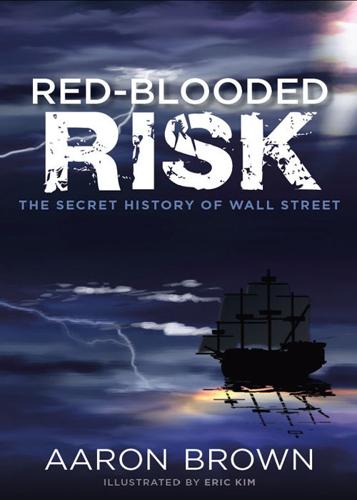
Red-Blooded Risk: The Secret History of Wall Street
by
Aaron Brown
and
Eric Kim
Published 10 Oct 2011
The only people who can master this extremely simple task are ones who apply explicit quantitative reasoning and have the faith to stick with it even when it seems not to be working. Another simple Dorner experiment is to let people manage a few variables in a simple virtual village. The experimental subjects can devote resources to health care, irrigation, house building, and other projects. Here again, almost everyone creates disasters, however much training they receive and however often they replay the game. The tendency is to correct every short-term problem without considering the long-term consequences.

Producing Open Source Software: How to Run a Successful Free Software Project
by
Karl Fogel
Published 13 Oct 2005
Visitors are more likely to click on a link that says "Watch our 3 minute video" than on one that just says "Watch our video", because in the former case they know what they're getting into before they click — and they'll watch it better, because they've mentally prepared the necessary amount of commitment beforehand, and so won't tire mid-way through. As to where the four-minute limit came from: it's a scientific fact, determined through many attempts by the same experimental subject (who shall remain unnamed) to watch project videos. The limit does not apply to tutorials or other instructional material, of course; it's just for introductory videos. In case you don't already have preferred software for recording desktop interaction videos: I've had good luck with gtk-recordmydesktop on Debian GNU/Linux, and then the OpenShot video editor for post-capture editing.
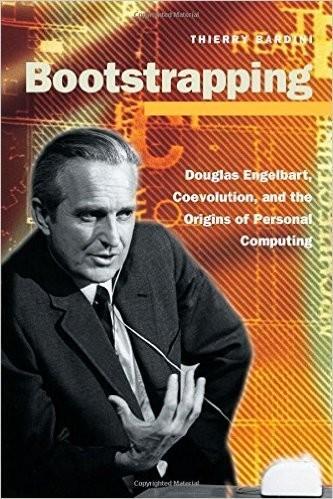
Bootstrapping: Douglas Engelbart, Coevolution, and the Origins of Personal Computing (Writing Science)
by
Thierry Bardini
Published 1 Dec 2000
These subjects were only The ArrIval of the Real User 179 "half-real" or, in other words, they were model subjects, subjects who could be read as embodiments of the generic eye-hand system. The experiments were able to prove that using the mouse was as efficient as pointing, but people who point usually don't develop repetitive-stress injuries (RSls). The limitations in the definition of the user imposed by the cognitive-science conception of the user as an experimental subject thus laid ample groundwork for subsequent unintended consequences of the technology. To put it another way, the qualities of the" real" test subjects were selected in accord with and limited to the purpose of the testing, as the following state- ment by Larry Tesler shows: I really didn't believe in [the mouse]. . . .

Whole Earth: The Many Lives of Stewart Brand
by
John Markoff
Published 22 Mar 2022
Toward the end of the studies Robert McKim, a professor of industrial design at Stanford University, joined the project to help explore the relation between technical design and psychedelic drug use. Don Allen, a former Ampex engineer, and another man worked as “counselors.” A significant portion of the experimental subjects were engineers who worked at different companies on the Midpeninsula—a group of people who were believed to be very “uptight.” Before long the group published a glowing research report based on a survey of its first 153 subjects. The results were in the realm of the kind of advertisements found on late-night TV.
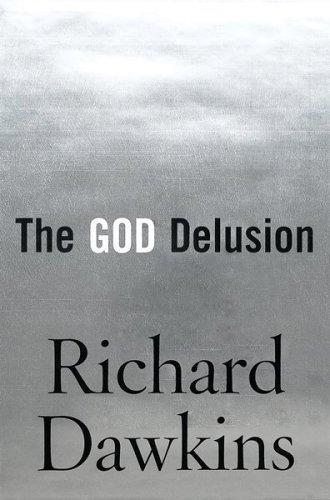
The God Delusion
by
Richard Dawkins
Published 12 Sep 2006
Except that there happens to be a hiker walking in front of the iron weight. He will certainly be killed if Oscar pulls the switch, just as surely as Ned’s fat man. The difference is that Oscar’s hiker is not being used to stop the trolley: he is collateral damage, as in Denise’s dilemma. Like Hauser, and like most of Hauser’s experimental subjects, I feel that Oscar is permitted to throw the switch but Ned is not. But I also find it quite hard to justify my intuition. Hauser’s point is that such moral intuitions are often not well thought out but that we feel them strongly anyway, because of our evolutionary heritage. In an intriguing venture into anthropology, Hauser and his colleagues adapted their moral experiments to the Kuna, a small Central American tribe with little contact with Westerners and no formal religion.

The Book of Why: The New Science of Cause and Effect
by
Judea Pearl
and
Dana Mackenzie
Published 1 Mar 2018
That is the source of its power; there is nothing mysterious or mystical about it. It is nothing more or less than, as Joan Fisher Box said, “the skillful interrogation of Nature.” The experiment would, however, fail in its objective of simulating Model 2 if either the experimenter were allowed to use his own judgment to choose a fertilizer or the experimental subjects, in this case the plants, “knew” which card they had drawn. This is why clinical trials with human subjects go to great lengths to conceal this information from both the patients and the experimenters (a procedure known as double blinding). I will add to this a second punch line: there are other ways of simulating Model 2.

The Hype Machine: How Social Media Disrupts Our Elections, Our Economy, and Our Health--And How We Must Adapt
by
Sinan Aral
Published 14 Sep 2020
And that’s exactly what the fMRI evidence shows. When subjects are randomly encouraged to mentalize, the mentalizing network is activated, but the networks for intelligence, reasoning, and working memory are not. And when the prefrontal cortex and temporoparietal regions are blocked by transcranial magnetic stimulation, experimental subjects lose their ability to manage false beliefs that are critical in mentalizing and intentionality. In addition to the strong fMRI and species-level evidence supporting the social brain hypothesis, researchers have recently examined the individual-level evidence by measuring the sizes of people’s brain regions devoted to mentalizing and the sizes of their corresponding personal social networks.
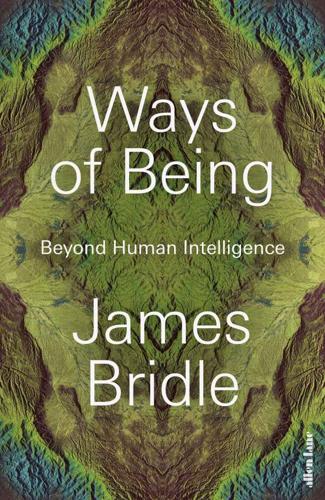
Ways of Being: Beyond Human Intelligence
by
James Bridle
Published 6 Apr 2022
She means this literally: as a result of a long-standing practice of meditation and shamanic rituals, she has received direct instructions from entities she considers to be plant spirits, who offer her advice on how to conceive and structure her experiments. Each of these encounters is then an introduction, an opening of the channel, which allows the experimental subject to speak for itself, for Mimosa to declare its ability, now that we are ready to hear it. And every time the plant speaks, the boundaries which we thought enclosed our worlds are shaken. If you’re sceptical, then fine. But it’s not necessary to accept the reality of Gagliano’s direct communication with plant spirits to accept the results of her experiments, which in every other way conform to the most stringent scientific norms, including peer review and reproducibility.7 I find aspects of Gagliano’s account hard to take seriously too.
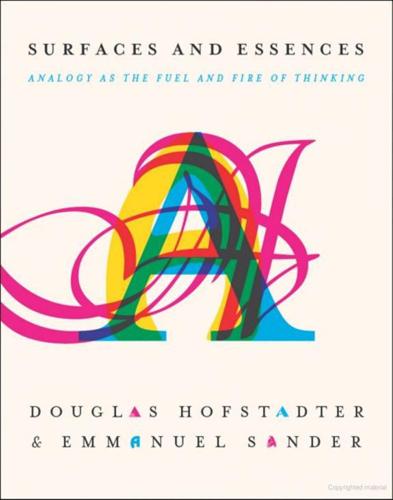
Surfaces and Essences
by
Douglas Hofstadter
and
Emmanuel Sander
Published 10 Sep 2012
Another influential view involves stored “mental simulators” of experiences one has undergone, which, in response to a fresh stimulus, reactivate certain regions of the brain that were once stimulated by the closest experiences to the current stimulus. Behind all these efforts lies the appealing idea of non-homogeneous categories — that is, categories having stronger and weaker members — which amounts to distinguishing between more central and less central members. For example, if one times the responses of experimental subjects when they are asked questions of the form “Is an X a Y?”, or if one asks them to write down a list of members of a certain category, or if one gives them a list and asks them to indicate, for each item, its degree of typicality as a member of a specific category, one finds that some very striking trends emerge, and these trends turn out to be stable across all these different ways of testing.
…
It is very rare that, in real life, we rely on an analogy to a situation with which we are barely familiar at all. To put it more colorfully, when it comes to understanding novel situations, we reach out to our family and our friends rather than to the first random passerby. But in the source–target paradigm, experimental subjects are required to reach out to a random passerby — namely, the one that was imposed on them as a source situation by the experimenter. And so, what do the results obtained in the framework of this paradigm really demonstrate? What they show is that when people learn something superficially, they wind up making superficial analogies to it.
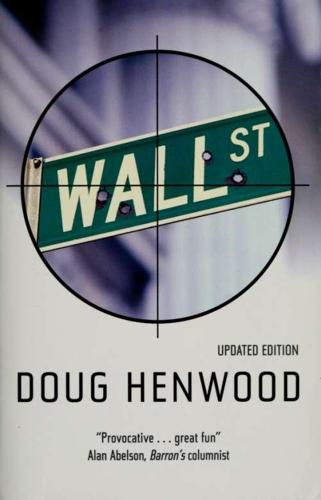
Wall Street: How It Works And for Whom
by
Doug Henwood
Published 30 Aug 1998
Of course they were asking these questions on behalf of money managers, who need advice on how to handle the trillions of dollars they "run." 5. Besides comfortable self-sufficiency, one shouldn't discount the macho feel of having dominated chaos with a complex model. 6. In a prisoners' dilemma, two experimental subjects, metaphorically partners in crime, are given the choice of betraying each other or hanging tough for monetary reward. If one defects and the other doesn't, the skunk gets 3 units. If both defect, each gets 1. If both cooperate, each gets 2. 7. One doesn't want to get too carried away naturalizing temperament and values, but the model seems particularly to drive away women and nonwhites, at least in America, because of its chilly irreality.

How to Change the World: Reflections on Marx and Marxism
by
Eric Hobsbawm
Published 5 Sep 2011
He sympathised with Kepler rather than Galileo. It is possible that this aspect of the Marxist tradition helped to attract scientists whose field (biology) or whose cast of mind made the mechanical-reductionist models of a science whose greatest triumph was physics, and the analytical method of isolating the experimental subject from its context (‘keeping other things equal’), seem particularly inapposite. Such men (Joseph Needham, C.H. Waddington) were interested in wholes rather than parts, in general systems theory – the phrase was not yet familiar – in ensembles which integrate, in a living reality, phenomena which conventional ‘scientific method’ separated; for instance, ‘bombed yet still functioning cities’ (to use an illustration by Needham suitable to the age of anti-fascism). 55 293 How to Change the World Thirdly, dialectical materialism appeared to provide a way out of the inconsistencies of science by embodying the concept of contradiction in its approach.

The Greatest Show on Earth: The Evidence for Evolution
by
Richard Dawkins
Published 21 Sep 2009
Psychological experiments have given us some stunning demonstrations, which should worry any jurist inclined to give superior weight to ‘eye-witness’ evidence. A famous example was prepared by Professor Daniel J. Simons at the University of Illinois. Half a dozen young people standing in a circle were filmed for 25 seconds tossing a pair of basketballs to each other, and we, the experimental subjects, watch the film. The players weave in and out of the circle and change places as they pass and bounce the balls, so the scene is quite actively complicated. Before being shown the film, we are told that we have a task to perform, to test our powers of observation. We have to count the total number of times balls are passed from person to person.

Data and Goliath: The Hidden Battles to Collect Your Data and Control Your World
by
Bruce Schneier
Published 2 Mar 2015
In 2012, Facebook ran an experiment in control. It selectively manipulated the newsfeeds of 680,000 users, showing them either happier or sadder status updates. Because Facebook constantly monitors its users—that’s how it turns its users into advertising revenue—it could easily monitor the experimental subjects and collect the results. It found that people who saw happier posts tended to write happier posts, and vice versa. I don’t want to make too much of this result. Facebook only did this for a week, and the effect was small. But once sites like Facebook figure out how to do this effectively, they will be able to monetize this.

Homo Deus: A Brief History of Tomorrow
by
Yuval Noah Harari
Published 1 Mar 2015
The Canadian province of Quebec has since passed a similar Act, and other countries are likely to follow suit. Many business corporations also recognise animals as sentient beings, though paradoxically, this often exposes the animals to rather unpleasant laboratory tests. For example, pharmaceutical companies routinely use rats as experimental subjects in the development of antidepressants. According to one widely used protocol, you take a hundred rats (for statistical reliability) and place each rat inside a glass tube filled with water. The rats struggle again and again to climb out of the tubes, without success. After fifteen minutes most give up and stop moving.
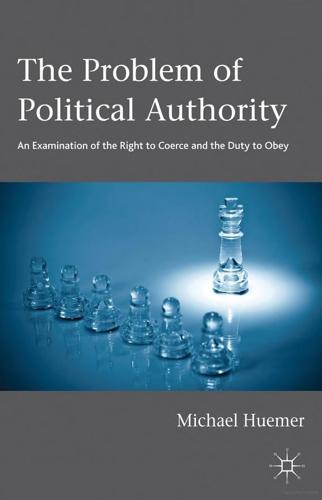
The Problem of Political Authority: An Examination of the Right to Coerce and the Duty to Obey
by
Michael Huemer
Published 29 Oct 2012
Most thought they would refuse to continue beyond the 150-volt shock (when the learner first demands to be released), and no one saw themselves going beyond 300 volts (when the learner refuses to answer). Their predictions of others’ behavior were only slightly less optimistic: respondents expected that only a pathological fringe of 1–2 percent of the population would proceed all the way to 450 volts. The psychiatrists Milgram surveyed thought that only one experimental subject in a thousand would proceed to the end of the shock board. 6.2.3 Results Milgram’s experiment shows something surprising, not only about our dispositions to obey but also about our self-understanding. The predictions of psychiatrists, students, and lay people fell shockingly far from reality.
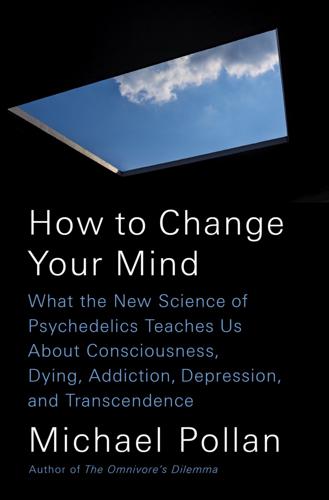
How to Change Your Mind: What the New Science of Psychedelics Teaches Us About Consciousness, Dying, Addiction, Depression, and Transcendence
by
Michael Pollan
Published 30 Apr 2018
Over the next six years, the foundation would process some 350 people. As James Fadiman and Don Allen recall those years at the foundation (both sat for extensive interviews), it was a thrilling and heady time to be working on what they were convinced was the frontier of human possibility. For the most part, their experimental subjects were “healthy normals” or what Fadiman described as “a healthy neurotic outpatient population.” Each client paid five hundred dollars for a package that included before-and-after personality testing, a guided LSD session, and some follow-up. Al Hubbard “would float in and out,” Don Allen recalls.
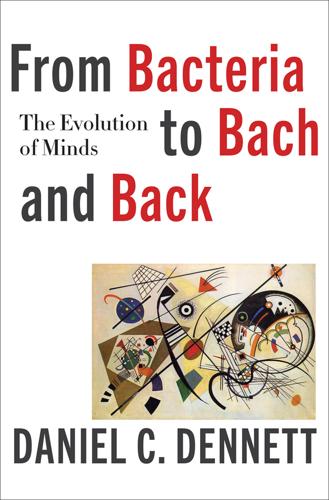
From Bacteria to Bach and Back: The Evolution of Minds
by
Daniel C. Dennett
Published 7 Feb 2017
Their dissemination can be observed, and now, thanks to the Internet, we have a fine laboratory in which more data can be gathered. As always in a lab, there are prices to pay in restricting the phenomena to a circumscribed artificial environment and in the risk of deep bias in the population of our experimental subjects (not all language users are Internet users, obviously). It is no accident that the population of tokens of the “meme” species (the term), founded by Dawkins in 1976, languished somewhat until the Internet provided an ideal niche for their use. If words are the best memes, why didn’t Dawkins feature them prominently in his exposition?

Lifespan: Why We Age—and Why We Don't Have To
by
David A. Sinclair
and
Matthew D. Laplante
Published 9 Sep 2019
Green thumbs they weren’t, though, and the food they farmed turned out to be insufficient to keep the participants on a typical diet. The lack of food wasn’t bad enough to result in malnutrition, but it did mean that the team members were frequently hungry. One of the prisoners (and by “prisoners” I mean “experimental subjects”) happened to be Roy Walford, a researcher from California whose studies on extending life in mice are still required reading for scientists entering the aging field. I have no reason to suspect that Walford sabotaged the crops, but the coincidence was rather fortuitous for his research; it gave him an opportunity to test his mouse-based findings on human subjects.
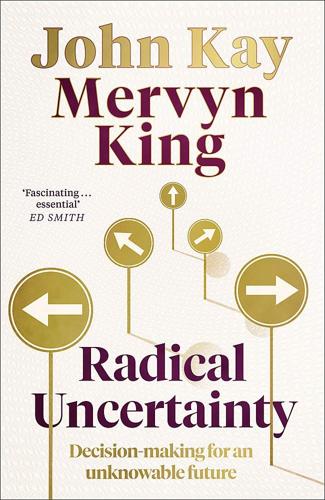
Radical Uncertainty: Decision-Making for an Unknowable Future
by
Mervyn King
and
John Kay
Published 5 Mar 2020
A very few professional gamblers are successful because they have observed anomalies, or studied the processes of apparent games of chance particularly carefully – Edward Thorp and the Ritz patrons – and the organisers of gambling establishments are anxious to identify them and exclude them from their casinos. But most regular gamblers are sad people, some in the grip of addiction, some suffering from persistent delusions about their own skill. It is true that when experimental subjects are asked to come up with subjective probabilities using these pignistic methods they can sometimes be persuaded to do so, usually with the aid of pressure from their professors and modest financial compensation for their cooperation. However this politeness in the face of silly requests provides no reason to believe that the numbers derived from such experiments bear any relation to an underlying set of consistent subjective probabilities.

Year's Best SF 15
by
David G. Hartwell; Kathryn Cramer
Published 15 Aug 2010
“I don’t think anyone will be hurt by knowing calculus, do you?” Solada murmured, when Leslie explained why she was there. “You’re a biologist,” said Leslie. “You know how many forms you have to fill out to do human experimentation. If I want to ask a dozen freshmen whether they’d buy a cookie for a dollar, I have to fill out forms.” “Our experimental subjects filled out their forms,” said Solada. “The viruses fell slightly outside our predicted parameters and got transmitted to a few people close to the original test subjects and then a few people close to them. This is a problem we will remedy in future trials, I assure you.” A grad student with wire-rimmed glasses poked her head around the door.

The Rise and Fall of Modern Medicine
by
M. D. James le Fanu M. D.
Published 1 Jan 1999
There is, though, another much more important reason why young doctors found research a less attractive option: the revolution of clinical science as initiated by Sir Thomas Lewis and carried on by John McMichael and his contemporaries had become exhausted. There are many forms of medical research – synthesising new drugs, inventing new technologies, experimenting on animal models of disease, and so on – but the distinguishing feature of clinical science is that it is practised by doctors with a unique access to the ‘experimental subjects’ – patients with illnesses. Most clinical science involves observing or measuring in some way the phenomena of disease in a living person, rather than a dead one in the autopsy room, usually with some special technique. Thus, in the post-war years at the Postgraduate Medical School, John McMichael used the cardiac catheter to measure pressures within the heart while Sheila Sherlock used the liver biopsy needle to take specimens of the liver from jaundiced patients to make a more accurate diagnosis.
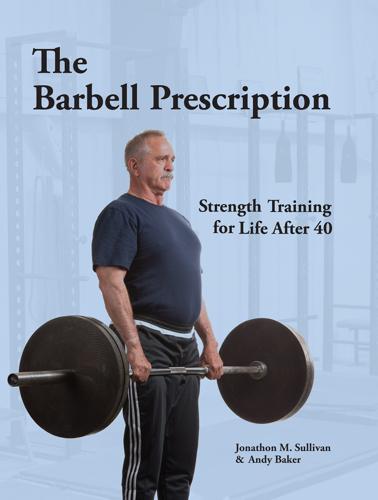
The Barbell Prescription: Strength Training for Life After 40
by
Jonathon Sullivan
and
Andy Baker
Published 2 Dec 2016
This abnormal form of hemoglobin can still carry oxygen, but its accumulation in the blood is a marker for the metabolic syndrome, the onset of Type 2 diabetes, and cardiovascular disease. I suspect HbA1c may also exert direct pathological effects, although this is not known for certain. An important systematic analysis of the data on progressive resistance exercise (that is, actual training) by Irvine and Taylor,22 encompassing 9 randomized controlled trials and 372 experimental subjects, found that strength training led to reductions in HbA1c in patients with Type 2 diabetes. Data on the beneficial effect of resistance training on insulin sensitivity and metabolic syndrome goes back decades,23 although its implications have been slow to percolate up into the consciousness of the public, or even the modern medical mind.
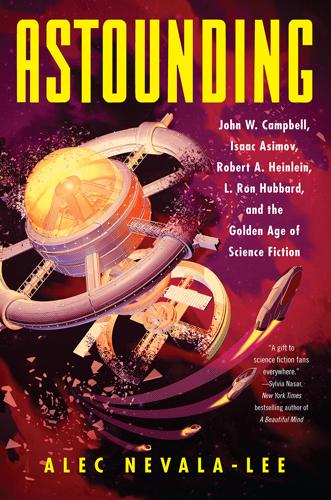
Astounding: John W. Campbell, Isaac Asimov, Robert A. Heinlein, L. Ron Hubbard, and the Golden Age of Science Fiction
by
Alec Nevala-Lee
Published 22 Oct 2018
Campbell had also encouraged Asimov as much for what he represented as for what he was in himself. The editor had successfully given ideas to established writers, but he wondered whether it might be possible to build an author from the ground up, and Asimov came along at just the right time to serve as an experimental subject. In a letter, Campbell referred to him as “the fan who’s been trying to be a writer,” which was precisely how he saw him—as a representative, located conveniently nearby, of a rising generation of fans who had grown up with the magazine. It didn’t occur to him to lavish the same attention on Pohl, who never sold Campbell a story that he wrote on his own.
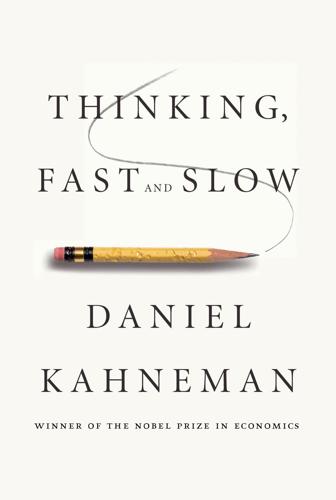
Thinking, Fast and Slow
by
Daniel Kahneman
Published 24 Oct 2011
If you have the emotional discipline that this rule requires, Bght l d for e you will never consider a small gamble in isolation or be loss averse for a small gamble until you are actually on your deathbed—and not even then. This advice is not impossible to follow. Experienced traders in financial markets live by it every day, shielding themselves from the pain of losses by broad framing. As was mentioned earlier, we now know that experimental subjects could be almost cured of their loss aversion (in a particular context) by inducing them to “think like a trader,” just as experienced baseball card traders are not as susceptible to the endowment effect as novices are. Students made risky decisions (to accept or reject gambles in which they could lose) under different instructions.
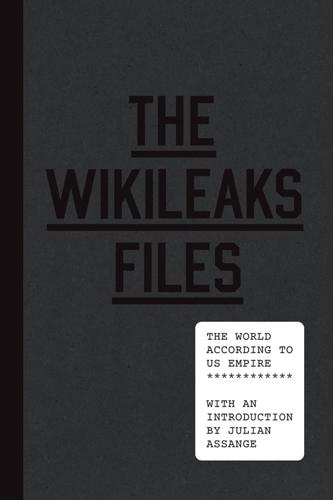
The WikiLeaks Files: The World According to US Empire
by
Wikileaks
Published 24 Aug 2015
As with previous CIA torture practice, for the program to be effective there had to be a range of professionals willing to assist. These included the two psychologists who helped devise the torture program over a period of seven years and were paid $81 million for their services.106 On one occasion they were escorted to Thailand, where Abu Zubaydah was being held, and given the opportunity to use the detainee as an experimental subject on whom to perfect the techniques they were developing, which directly drew on past CIA expertise in the field. In bidding for the contract, the psychologists recommended such techniques as “The attention grasp, walling, facial hold, facial slap, cramped confinement, standing, stress positions, sleep deprivation, water-board, use of diapers, use of insects, and mock burial.”
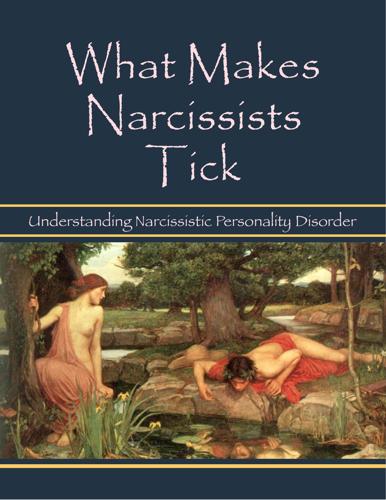
What Makes Narcissists Tick
by
Kathleen Krajco
Some sources have indicated a strong reaction to filth and vermin, although they had negligible reactions to the isolation. Others reacted violently to isolation in relatively clean cells. The predominant cause of breakdown in such situations is a lack of sensory stimulation (i.e., grayness of walls, lack of sound, absence of social contact, etc.). Experimental subjects exposed to this condition have reported vivid hallicinations and overwhelming fears of losing their sanity. 4. Control of Communication. This is one of the most effective methods for creating a sense of helplessness and despair. This measure might well be considered the cornerstone of the communist system of control.

Blueprint: The Evolutionary Origins of a Good Society
by
Nicholas A. Christakis
Published 26 Mar 2019
The currently ascendant European-style practice of monogamy is just one marriage system. Things like this are sometimes not easy to see. Many biases have historically underpinned the social sciences, biases that have resulted in the neglect of key features of family life and that have assumed, for instance, that the psychology of American college students (the classic experimental subjects) is applicable everywhere. To acknowledge this, contemporary social scientists have adopted the acronym WEIRD (which stands for “Western, educated, industrialized, rich, and democratic”) to describe societies that, in fact, represent only a minority of human cultures and are composed of people quite distinct from a hypothetical “average” human.15 Indeed, roughly 85 percent of human societies have permitted polygyny at some point, and polygyny remains legal or generally accepted for at least part of the population in forty-one countries worldwide, primarily in Africa and Asia.16 And according to a survey conducted from 2000 to 2010, in twenty-six out of the thirty-five countries with polygamy data available, between 10 percent and 53 percent of women aged fifteen to forty-nine were in polygamous relationships.17 The minority of societies in the anthropological and historical record that have practiced monogamy fall into two broad categories at opposite extremes.

The Stuff of Thought: Language as a Window Into Human Nature
by
Steven Pinker
Published 10 Sep 2007
If so, we should be able to catch people in the act of sensing the deep correspondences between superficially different realms that make for a useful analogy or conceptual metaphor. It’s easy to show that people sense the connection in simple metaphors based on a single dimension of space, such as HAPPY IS UP. When experimental subjects are shown words on a screen and have to evaluate whether they are positive (like agile, gracious, and sincere) or negative (like bitter, fickle, and vulgar), they are quicker when a positive word is flashed at the top of the screen or a negative word at the bottom than vice versa. 57 People are also quicker at moving their hand toward a button near their bodies to verify a sentence like Adam conveyed the message to you than to verify You conveyed the message to Adam, and vice versa when they have to move their hand to a button away from their bodies.
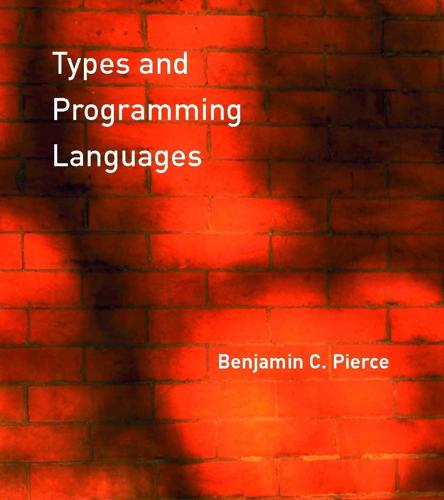
Types and Programming Languages
by
Benjamin C. Pierce
Published 4 Jan 2002
Indeed, we will see in Chapter 12 that no expression that can lead to non-terminating computations can be typed using only simple types.[9] So, instead of defining fix as a term in the language, we simply add it as a new primitive, with evaluation rules mimicking the behavior of the untyped fix combinator and a typing rule that captures its intended uses. These rules are written out in Figure 11-12. (The letrec abbreviation will be discussed below.) Figure 11-12: General Recursion The simply typed lambda-calculus with numbers and fix has long been a favorite experimental subject for programming language researchers, since it is the simplest language in which a range of subtle semantic phenomena such as full abstraction (Plotkin, 1977, Hyland and Ong, 2000, Abramsky, Jagadeesan, and Malacaria, 2000) arise. It is often called PCF. 11.11.1 Exercise [⋆⋆] Define equal, plus, times, and factorial using fix.
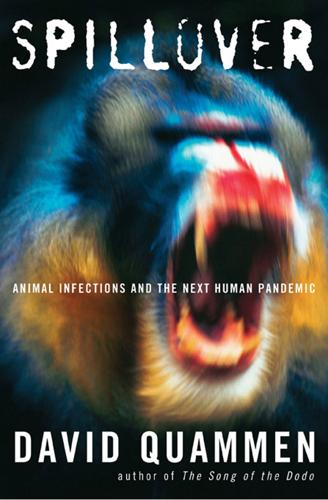
Spillover: Animal Infections and the Next Human Pandemic
by
David Quammen
Published 30 Sep 2012
Knowles and Gupta also injected it into three human volunteers (that is to say, “volunteers,” their freedom to decline having been a dubious matter), one of whom was a local man who had come to the hospital for treatment of a rat bite on his foot. This poor guy got very sick—not from the rat bite but from the injected malaria. In those experimental subjects (monkey and human) who suffered intermittent fevers, Knowles and Gupta noticed that the period of the fever cycle was one day, as distinct from the two-day or three-day cycles known for human malarias. Knowles and Gupta published a paper on the unusual parasite but didn’t give it a name. Soon afterward another set of scientists did, labeling it Plasmodium knowlesi in honor of its senior discoverer.

Challenger: A True Story of Heroism and Disaster on the Edge of Space
by
Adam Higginbotham
Published 14 May 2024
Randy Lovelace, whose New Mexico research foundation had provided medical screening for the Mercury candidates, heard news that a female cosmonaut had begun training in the Soviet Union; on his own initiative, he set out to examine how women’s suitability for spaceflight compared with that of men. In search of an experimental subject, Lovelace approached twenty-eight-year-old Geraldyn “Jerrie” Cobb—an experienced pilot who had first flown at the age of twelve, gone on to set numerous altitude, speed, and distance flying records, and had recently been named Woman of the Year by the Women’s National Aeronautic Association.
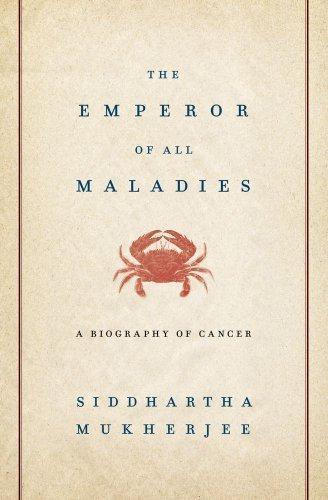
The Emperor of All Maladies: A Biography of Cancer
by
Siddhartha Mukherjee
Published 16 Nov 2010
Like lymphoblastic leukemia, Hodgkin’s disease is a rare illness, but the researchers did not need to look hard to find patients. Advanced Hodgkin’s disease, often accompanied by the spectral B symptoms, was uniformly fatal. Young men and women (the disease typically strikes men and women in their twenties and thirties) were often referred to the NCI as hopeless cases—and therefore ideal experimental subjects. In just three years, DeVita and Canellos thus accumulated cases at a furious clip, forty-three patients in all. Nine had been blasted with increasing fields of radiation, à la Kaplan, and still progressed inexorably to disseminated, widely metastatic disease. Others had been treated with an ad hoc mix of single agents.

The Rise of the Network Society
by
Manuel Castells
Published 31 Aug 1996
In fact, some insurance companies would rather welcome euthanasia, and would like to send patients home as soon as possible, a cynical view daily fought against by doctors. Without this relentless will to reject the inevitable, valuable lessons would be lost, and our collective ability to survive and overcome suffering would be hampered. Yet the societal impact of such efforts, along with less-noble enterprises of using terminal patients as experimental subjects, is tantamount to the denial of death until its very last act. So strong is the temporal and spatial confinement of death that the overwhelming majority of deaths (80 percent in the US, and a growing proportion in all countries: see figure 7.2 for Japan, a society with a strong family culture) takes place in hospital, very often in special intensive care units, with the bodies already removed from their social and emotional environments.
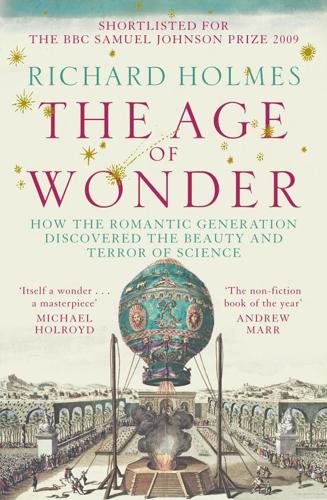
The Age of Wonder
by
Richard Holmes
Published 15 Jan 2008
Her muscular motions were uncommonly violent.’67 Joseph Cottle recorded a rumour that another young woman was overcome by hysterical excitement, ran out of the laboratory, and rushed screaming down the street towards the Avon, where she was somewhat bizarrely reported to have ‘jumped over a large dog’ before she could be restrained and brought back. This case does not appear in Davy’s notes, but the idea that women could be made to lose their inhibitions, and might even be sexually aroused by nitrous oxide, persisted. With his experimental subjects, Davy monitored pulse rates, and required them to undergo certain standard tests, such as gazing at a candle flame and listening to bells. He wanted to record physiological changes, such as distortions of vision and hearing. But gradually he became more and more interested in subjective responses.

The Transhumanist Reader
by
Max More
and
Natasha Vita-More
Published 4 Mar 2013
Serialized in Isaac Asimov’s Science Fiction Magazine (December(?) 1986–February 1987). Thearling, Kurt (1992) “How We Will Build a Machine That Thinks.” A workshop at Thinking Machines Corporation, August 24–26. Vinge, Vernor (1966) “Bookworm, Run!” Analog (March), pp. 8–40. Early intelligence amplification story. The hero is the first experimental subject – a chimpanzee raised to human intelligence. Vinge, Vernor (1981) “True Names.” In Binary Star 5. New York: Dell. Vinge, Vernor (1983) “First Word.” Omni 10 (January). Earlier essay on “the Singularity.” “The Coming Technological Singularity: How to Survive in the Post-Human Era,” by Vernor Vinge, was presented at the VISION-21 Symposium sponsored by NASA Lewis Center and the Ohio Aerospace Institute, March 30–31, 1993.

Enlightenment Now: The Case for Reason, Science, Humanism, and Progress
by
Steven Pinker
Published 13 Feb 2018
Which will reduce poverty, or violent crime, or illiteracy? A rational society should seek the answers by consulting the world rather than assuming the omniscience of a bloc of opinionators who have coalesced around a creed. Unfortunately, the expressive rationality documented by Kahan in his experimental subjects also applies to editorialists and experts. The payoffs that determine their reputations don’t coincide with the accuracy of the predictions, since no one is keeping score. Instead, their reputations hinge on their ability to entertain, titillate, or shock; on their ability to instill confidence or fear (in the hopes that a prophecy might be self-fulfilling or self-defeating); and on their skill in galvanizing a coalition and celebrating its virtue.
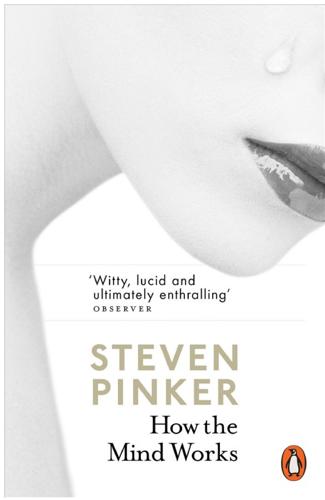
How the Mind Works
by
Steven Pinker
Published 1 Jan 1997
A baby could experience the blooming and buzzing all its life unless it was equipped with a mental mechanism that interpreted the blooms and buzzes as the outward signs of persisting objects that follow mechanical laws. We should expect infants to show some appreciation of physics from the start. Only careful laboratory studies can tell us what it is like—rather, what it was like—to be a baby. Unfortunately, infants are difficult experimental subjects, worse than rats and sophomores. They can’t easily be conditioned, and they don’t talk. But an ingenious technique, refined by the psychologists Elizabeth Spelke and Renée Baillargeon, capitalizes on one feat that infants are good at: getting bored. When infants see the same old thing again and again, they signal their boredom by looking away.
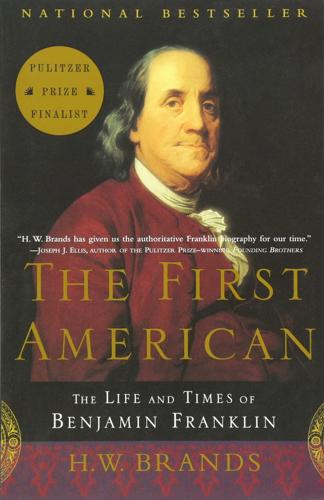
The First American: The Life and Times of Benjamin Franklin
by
H. W. Brands
Published 1 Jan 2000
A venture by William Franklin into farming prompted his father to delve into the latest thinking on scientific agriculture. The possibility of starting a British silk industry propelled him into the natural history of the silkworm and the mulberry tree. He devised a new phonetic alphabet to regularize English spelling. Polly Stevenson was his experimental subject in this endeavor. “Diir Pali,” he wrote her—in a note that then introduced six invented letters (irreproducible without Franklin’s special fonts) and numerous redefinitions of use and pronunciation. He conceded that convincing anyone else to employ the new alphabet would be difficult. But it was worth trying.

Networks, Crowds, and Markets: Reasoning About a Highly Connected World
by
David Easley
and
Jon Kleinberg
Published 15 Nov 2010
GRAPHS graphs in which each node is a phone number, and there is an edge between two if they engaged in a phone call over a given observation period [1, 328]. One can also use the fact that mobile phones with short-range wireless technology can detect other similar devices nearby. By equipping a group of experimental subjects with such devices and studying the traces they record, researchers can thereby build “face-to-face” graphs that record physical proximity: a node in such a graph is a person carrying one of the mobile devices, and there is an edge joining two people if they were detected to be in close physical proximity over a given observation period [140, 141].

Gravity's Rainbow
by
Thomas Pynchon
Published 15 Jan 2000
For pity's sake, every day in Whitehall they're weighing and taking risks that make his, in this, seem almost trivial. Almost. There's something here, too transparent and swift to get a hold on—Psi Section might speak of ectoplasms—but he knows that the time has never been better, and that the exact experimental subject is in his hands. He must seize now, or be doomed to the same stone hallways, whose termination he knows. But he must remain open— even to the possibility that the Psi people are right. "We may all be right," he puts in his journal tonight, "so may be all we have speculated, and more. Whatever we may find, there can be no doubt that he is, physiologically, historically, a monster.

The Master and His Emissary: The Divided Brain and the Making of the Western World
by
Iain McGilchrist
Published 8 Oct 2012
I’m more reluctant to visit those I love and am bound to care for, when they’re sick, than those I care less about, and mean less to me. I adopt their disease that troubles me, and make it my own.69 Here we find him observing, more than 400 years before the experiments were done, what we know about empathy and mimesis. And he was his own experimental subject. Empathic as he was, he observed himself with detachment. This optimal relation of the self to others, and the optimal distance from oneself to achieve it, is embodied in the writings of many Renaissance writers, but as time wears on, one can feel it coming under strain. Donne has some fasci nating passages, both in his poems and in his Meditations, on the eyes and self-exploration; on seeing oneself reflected in other’s eyes.
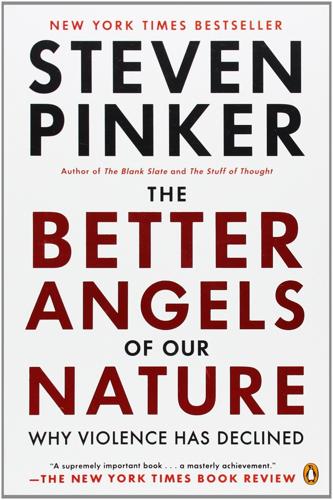
The Better Angels of Our Nature: Why Violence Has Declined
by
Steven Pinker
Published 24 Sep 2012
With the usual spaghetti of variables, it’s impossible to be certain what caused what, but the results are consistent with the idea that the disinterested justice of a decent Leviathan induces citizens to curb their impulse for revenge before it spirals into a destructive cycle. Revenge, for all its tendency to escalate, must come with a dimmer switch. If it didn’t, the Moralization Gap would inflate every affront into an escalating feud, like the experimental subjects who mashed down on each other’s fingers harder and harder with every round. Not only does revenge not always escalate, especially in civil societies with the rule of law, but we shouldn’t expect it to. The models of the evolution of cooperation showed that the most successful agents dial back their tit-for-tatting with contrition and forgiveness, especially when trapped in the same boat with other agents.
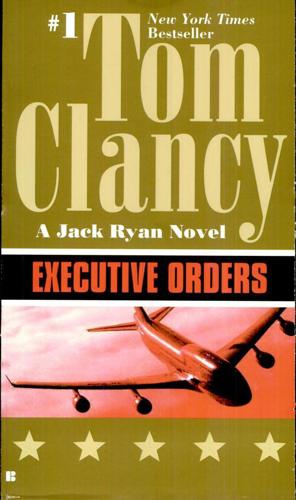
Executive Orders
by
Tom Clancy
Published 2 Jan 1996
He required the same of his people, for such was his devotion that he went beyond the teachings of Islam without even knowing it, bending such rules as stood in his way as though they were made of rubber, and at the same time telling himself that, no, he never violated the Prophet's Holy Word, or Allah's Will. How could he be doing that? He was helping to bring the world back to the Faith. The prisoners, the experimental subjects, were all condemned men in one way or another. Even the thieves, lesser criminals, had four times violated the Holy Koran, and they had probably committed other crimes as well, perhaps-probably, he told himself-those worthy of death. Every day they were informed of the time for prayer, and though they knelt and bowed and mouthed the prayers, you could tell by watching them on the TV monitor that they were merely going through the ritual, not truly praying to Allah in the manner prescribed.

Artificial Intelligence: A Modern Approach
by
Stuart Russell
and
Peter Norvig
Published 14 Jul 2019
Boroditsky (2003) asked subjects to choose English adjectives to describe a photograph of a particular bridge. Spanish speakers chose big, dangerous, strong, and towering, whereas German speakers chose beautiful, elegant, fragile, and slender. Words can serve as anchor points that affect how we perceive the world. Loftus and Palmer (1974) showed experimental subjects a movie of an auto accident. Subjects who were asked “How fast were the cars going when they contacted each other?” reported an average of 32 mph, while subjects who were asked the question with the word “smashed” instead of “contacted” reported 41mph for the same cars in the same movie. Overall, there are measurable but small differences in cognitive processing by speakers of different languages, but no convincing evidence that this leads to a major difference in world view.